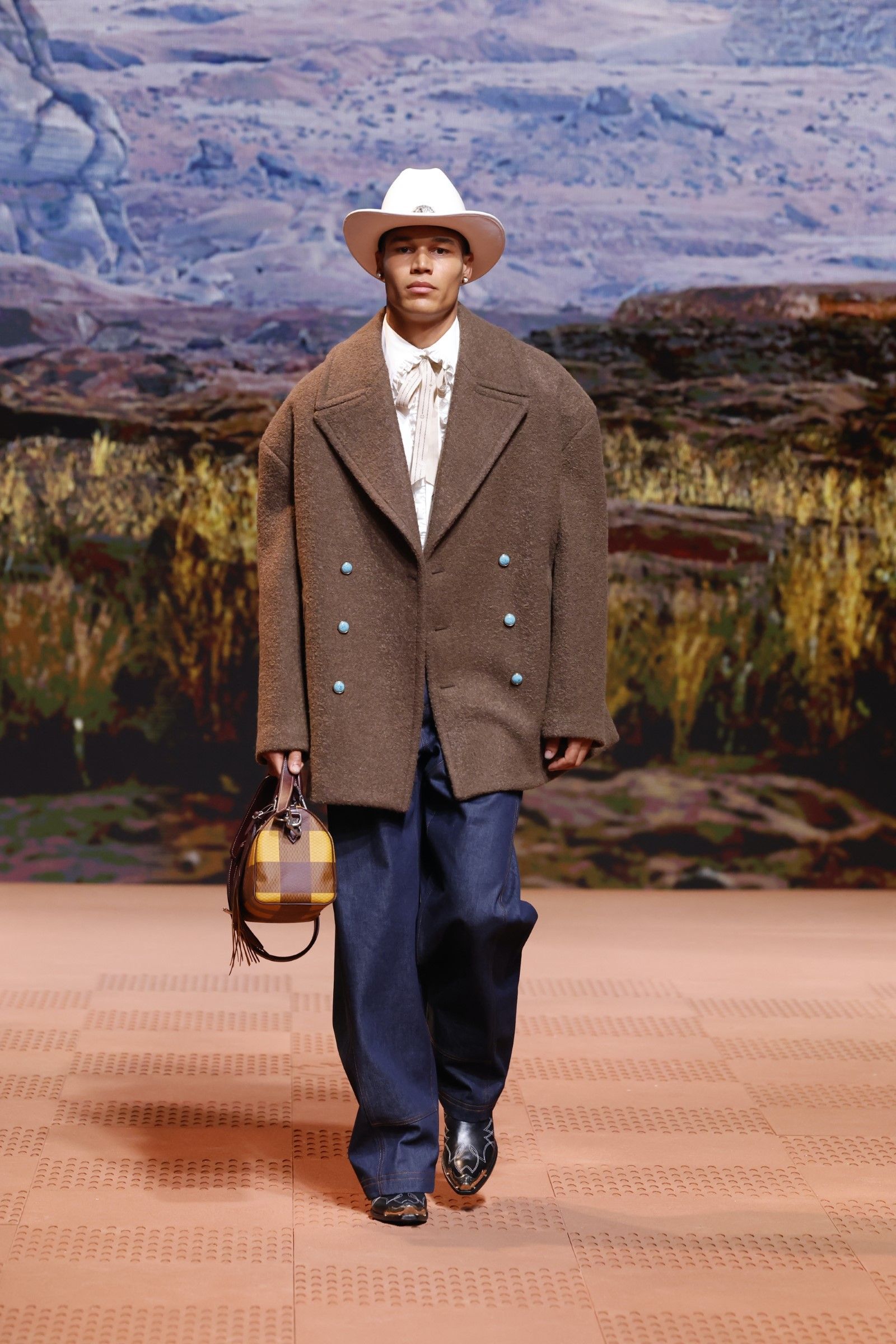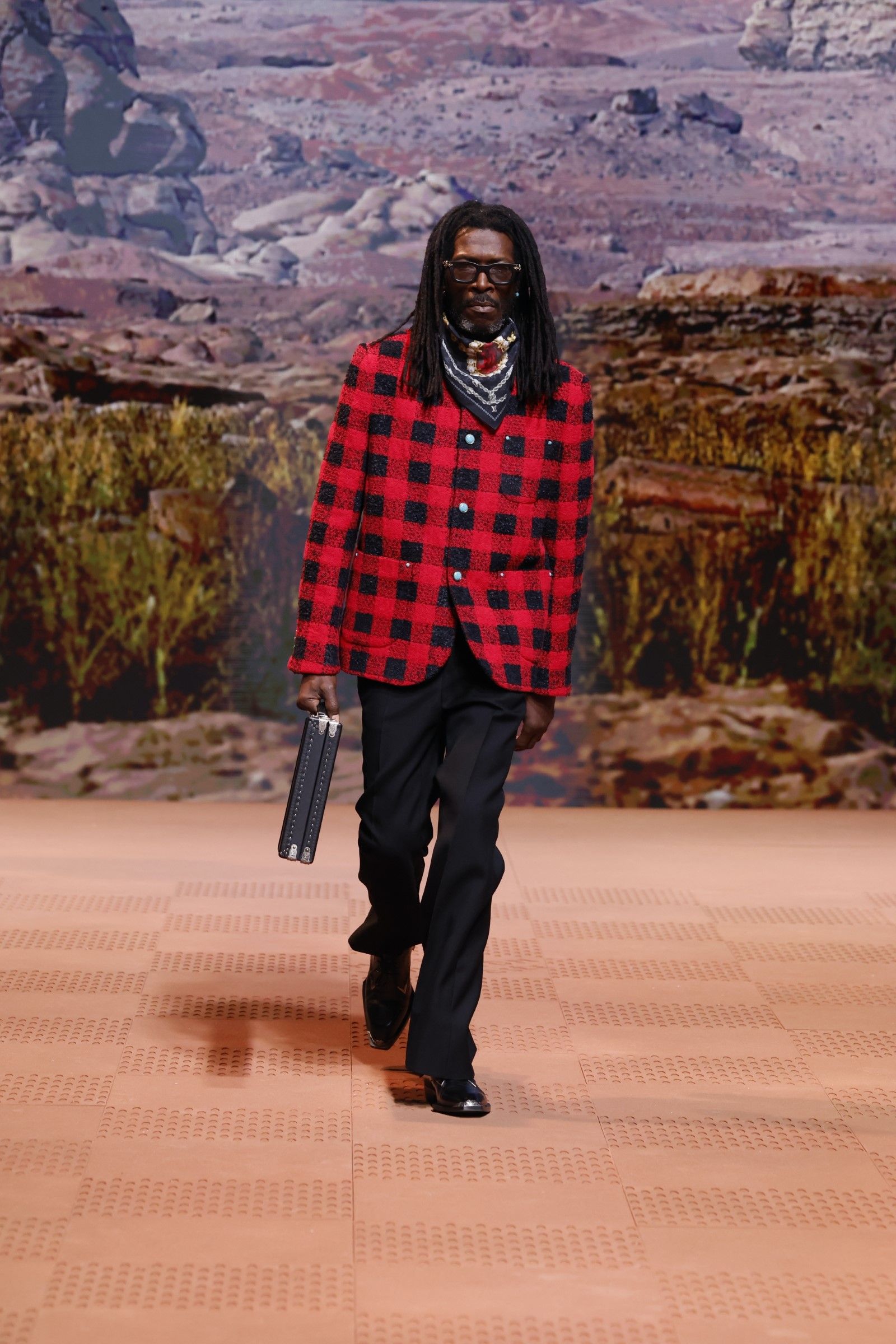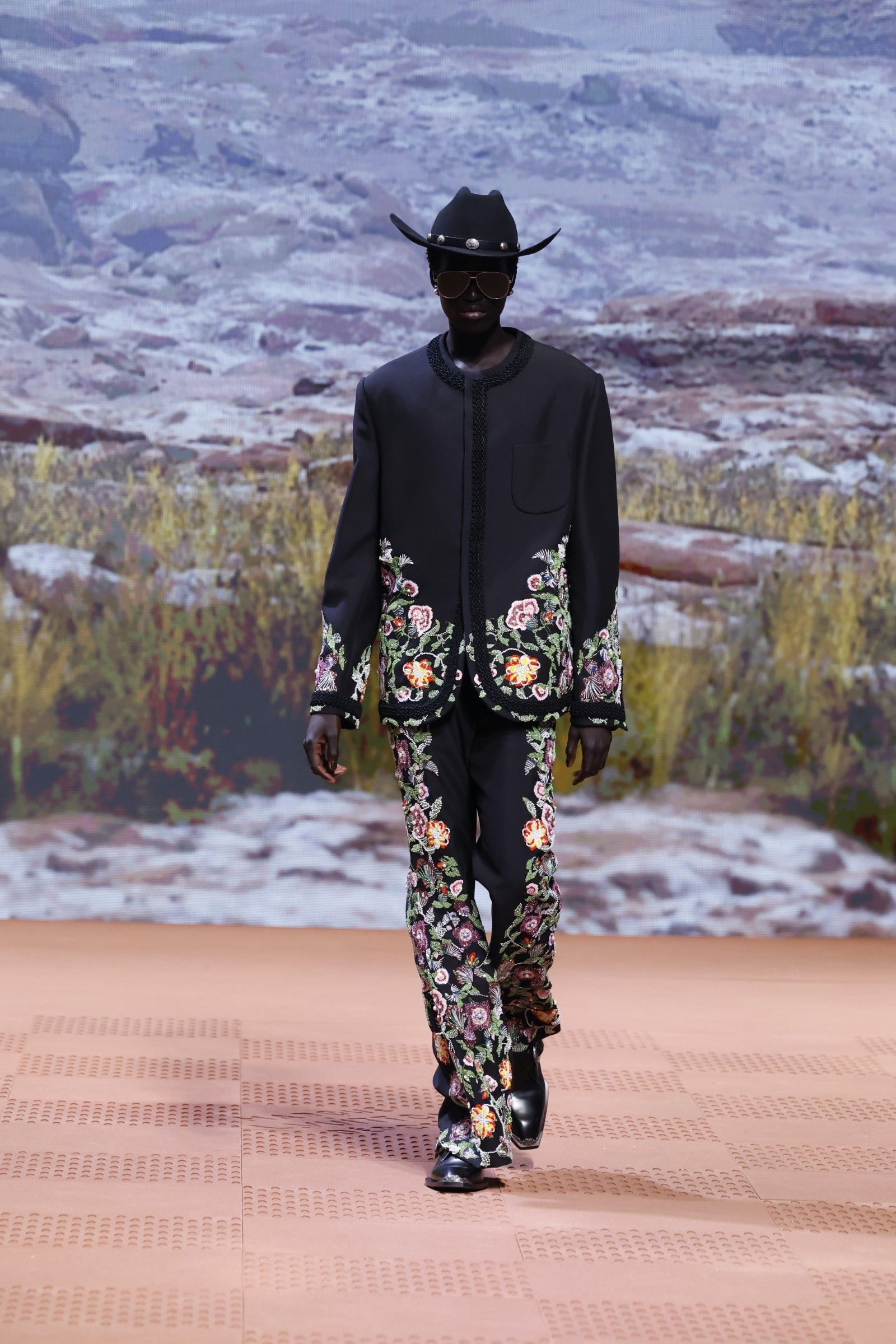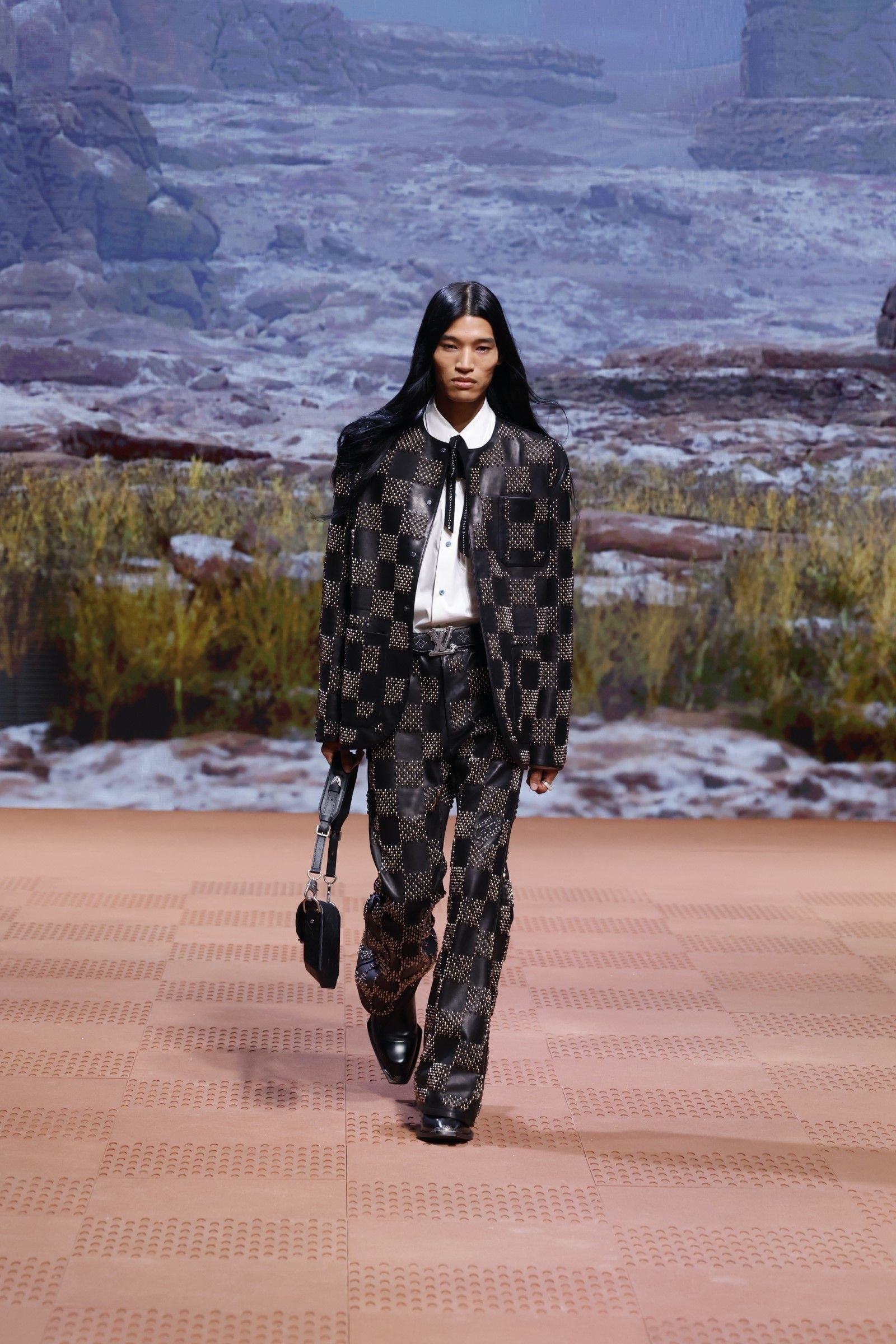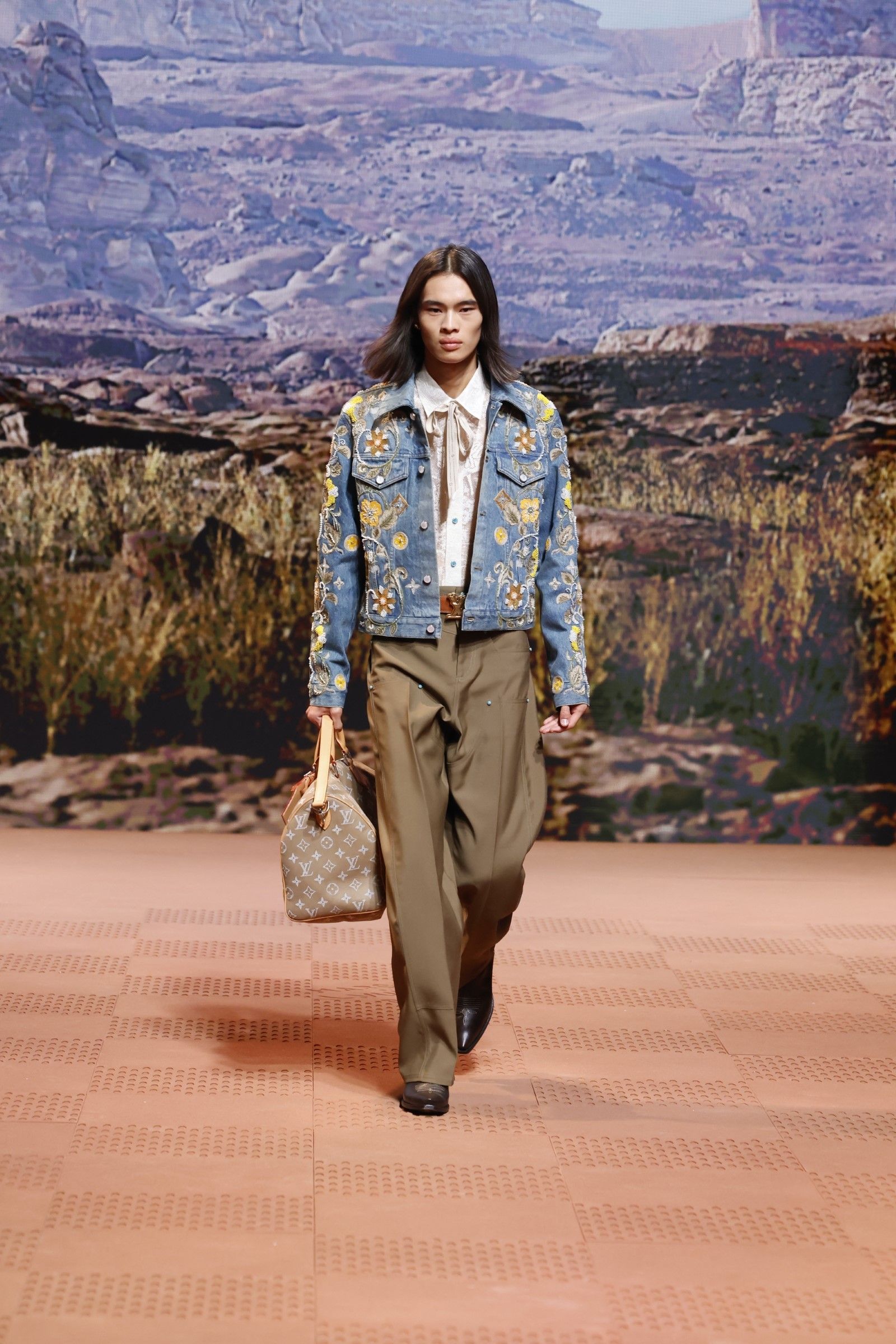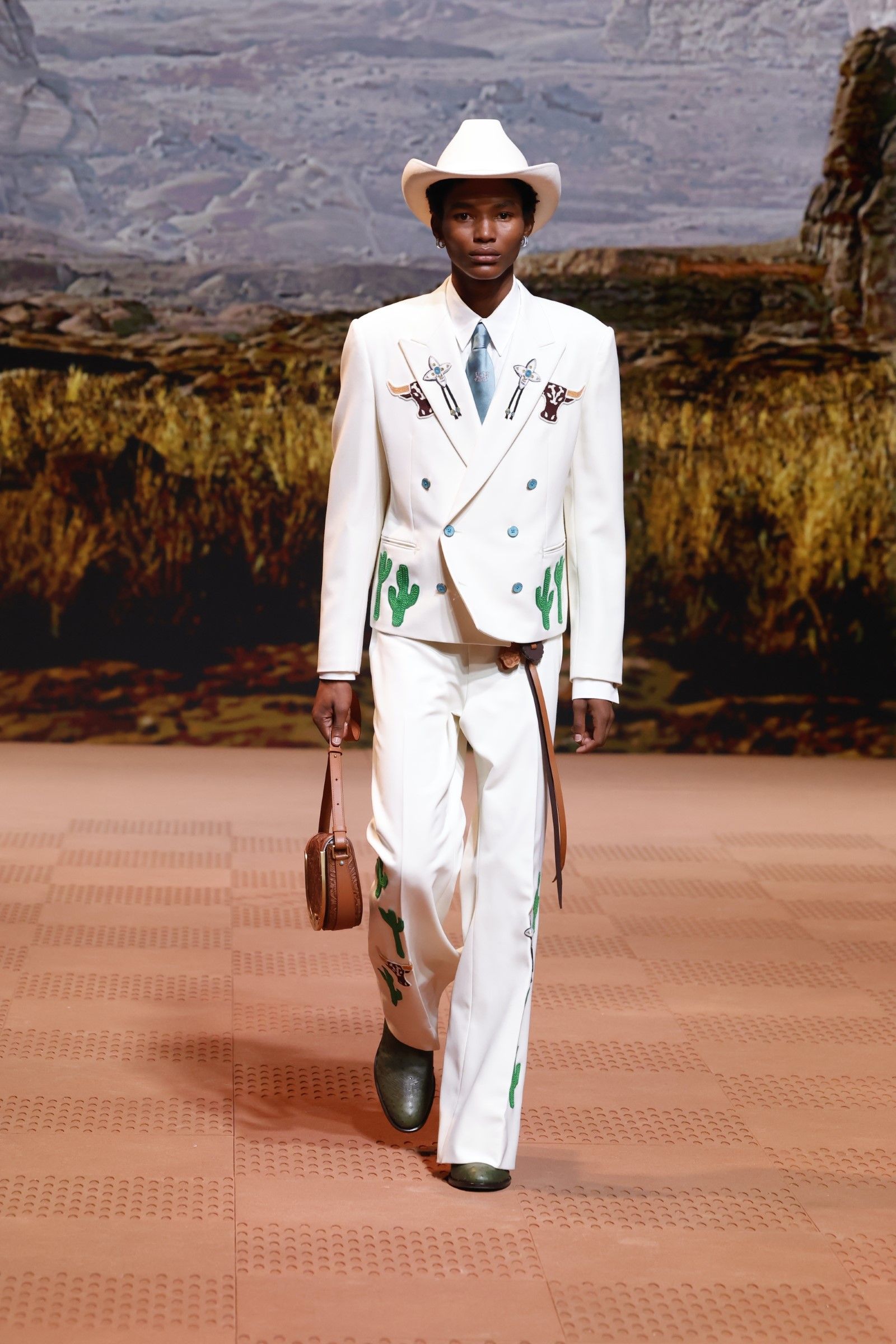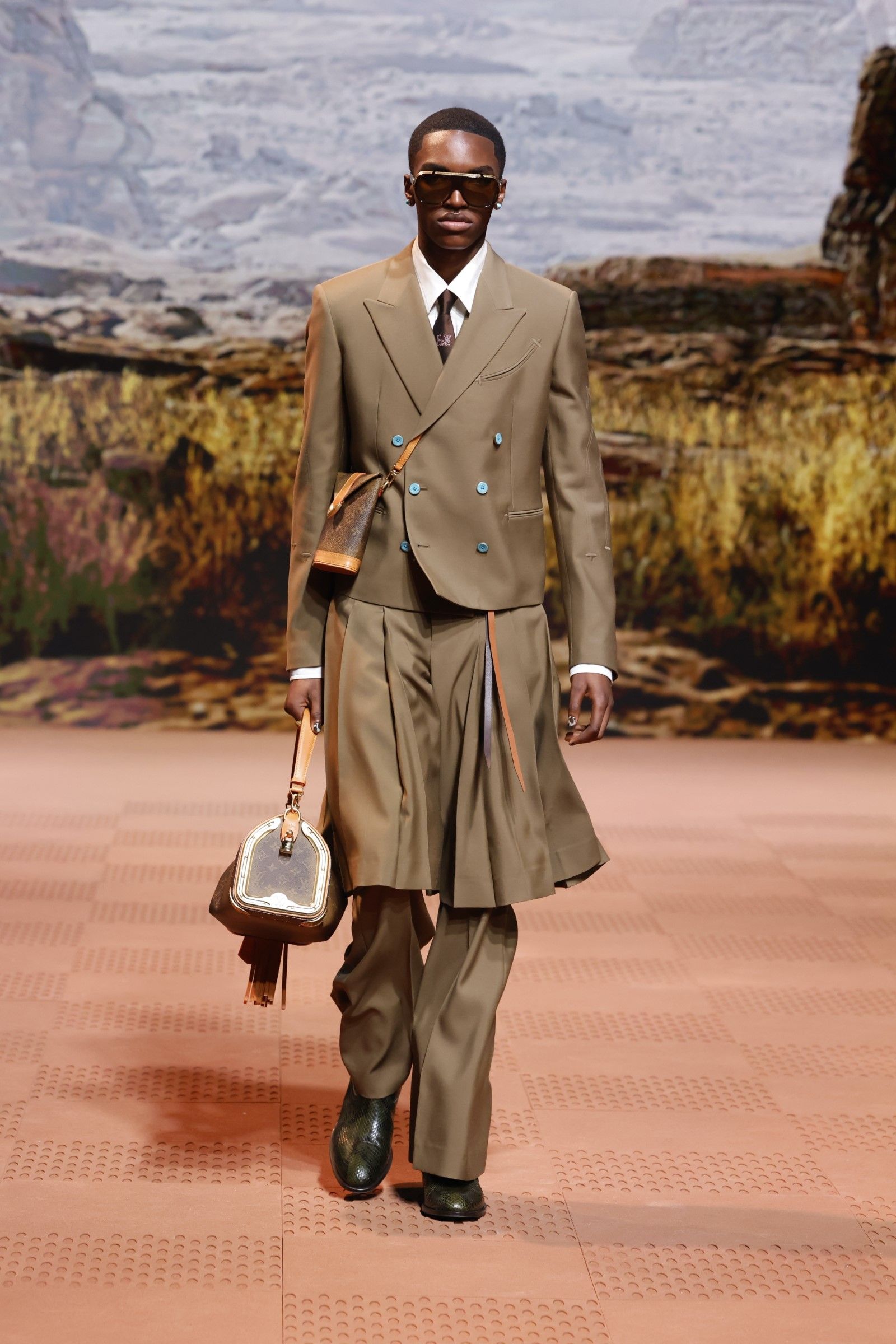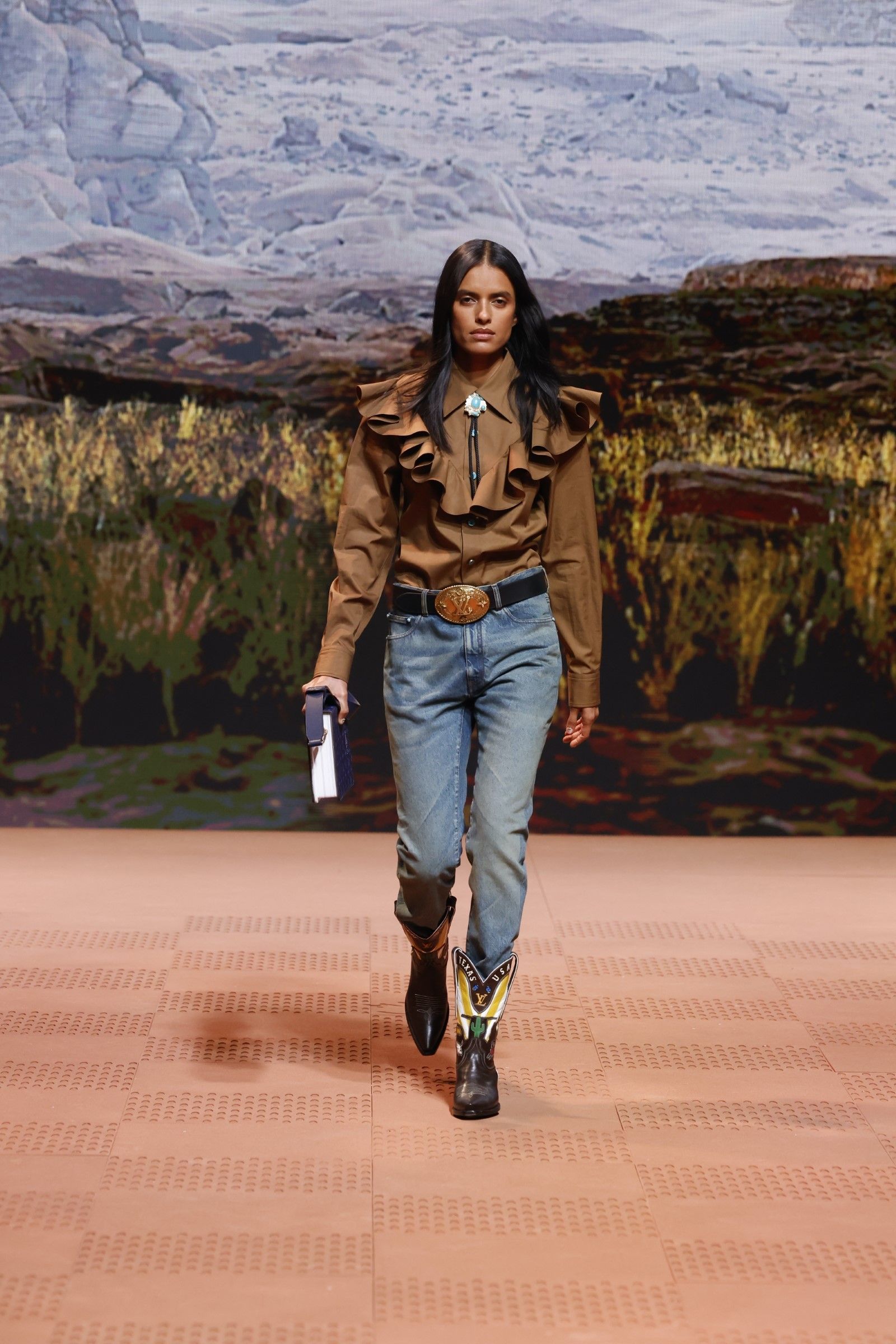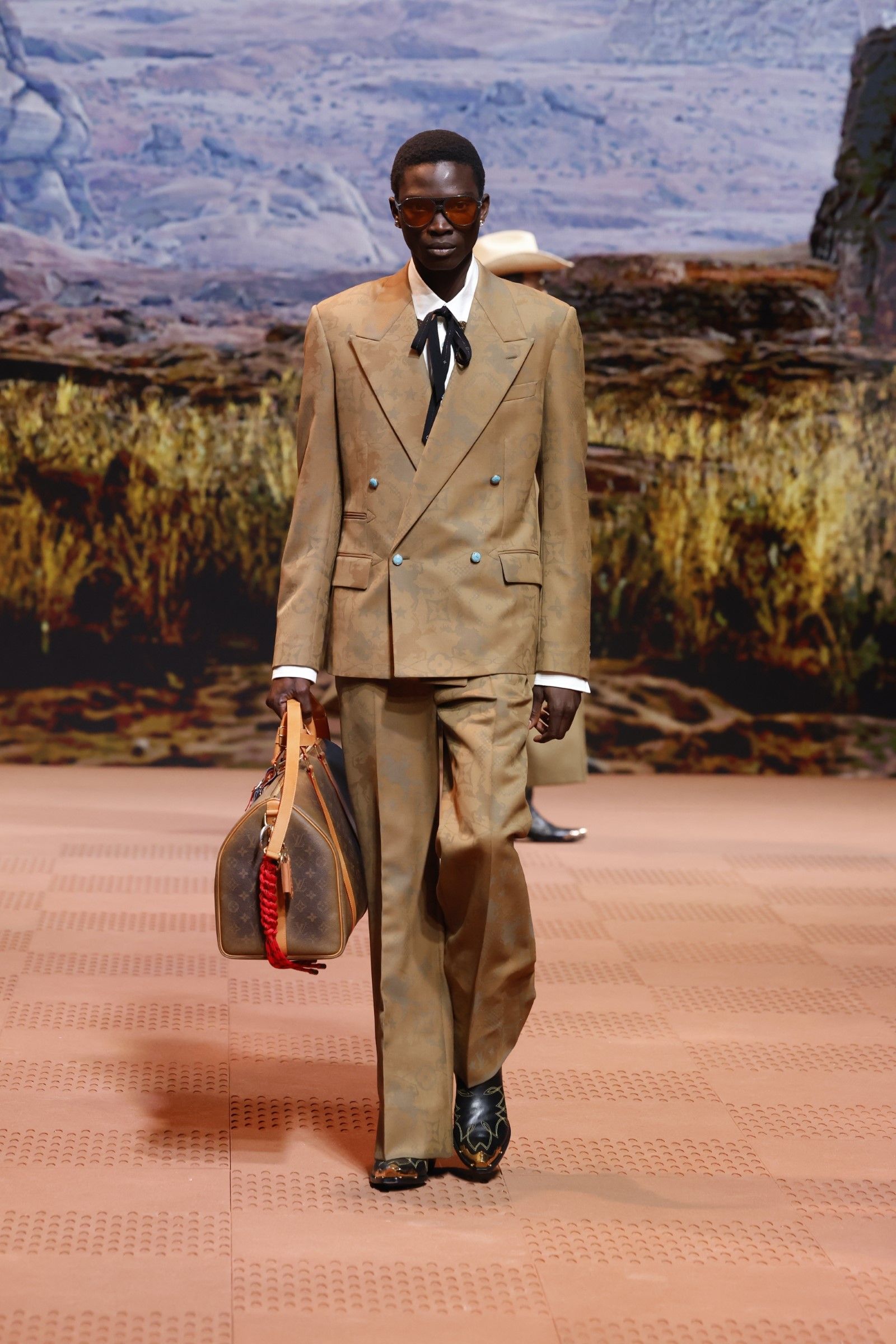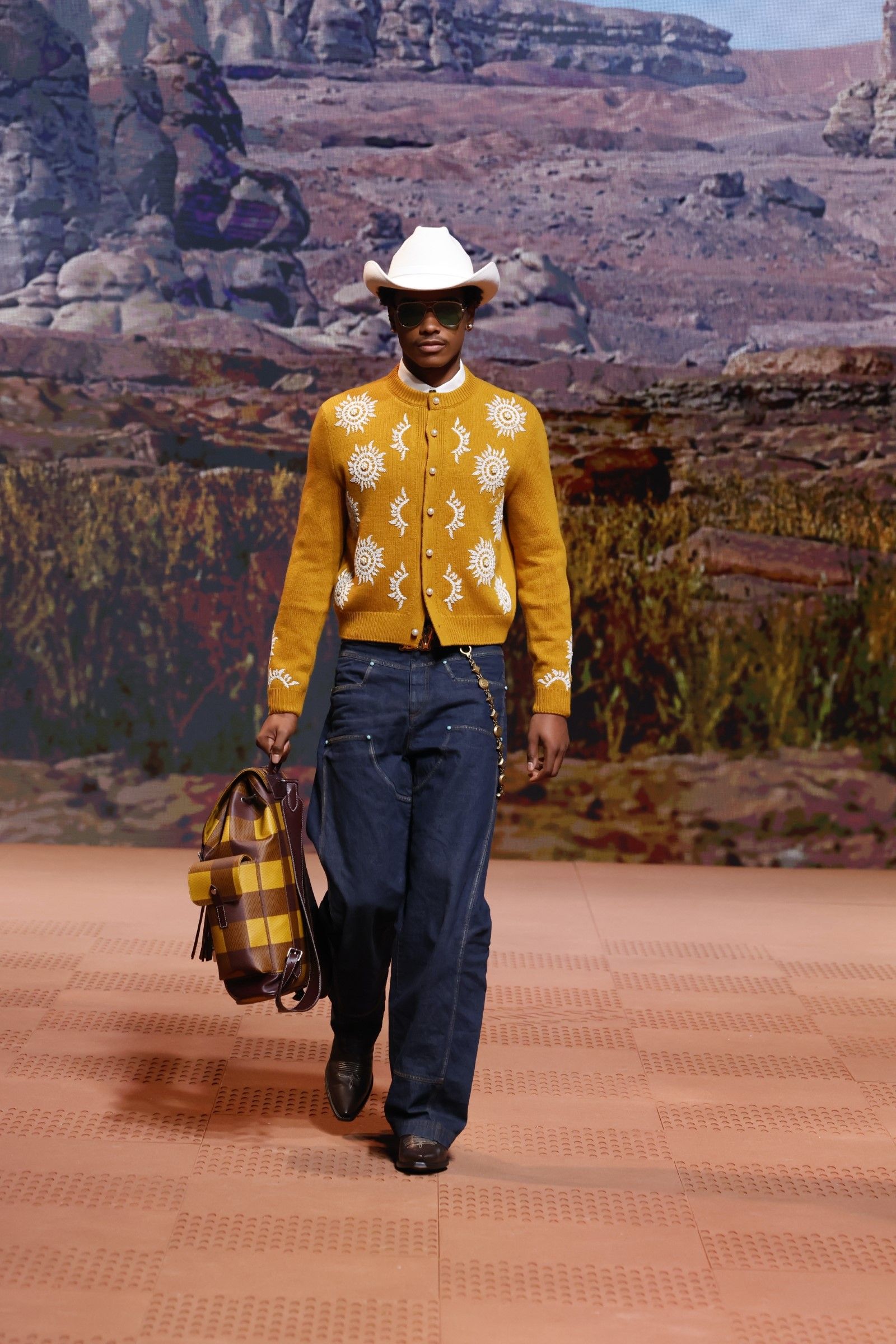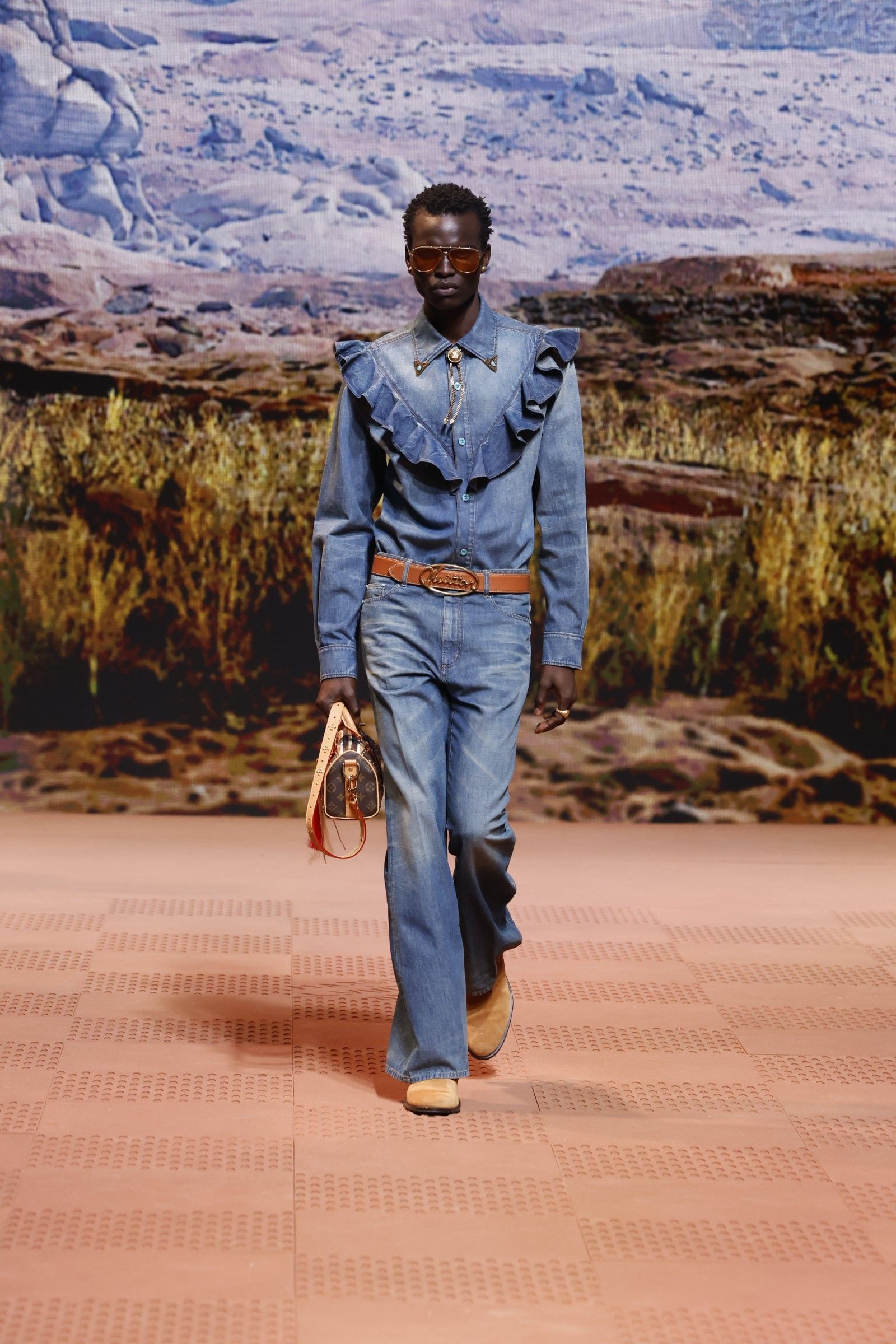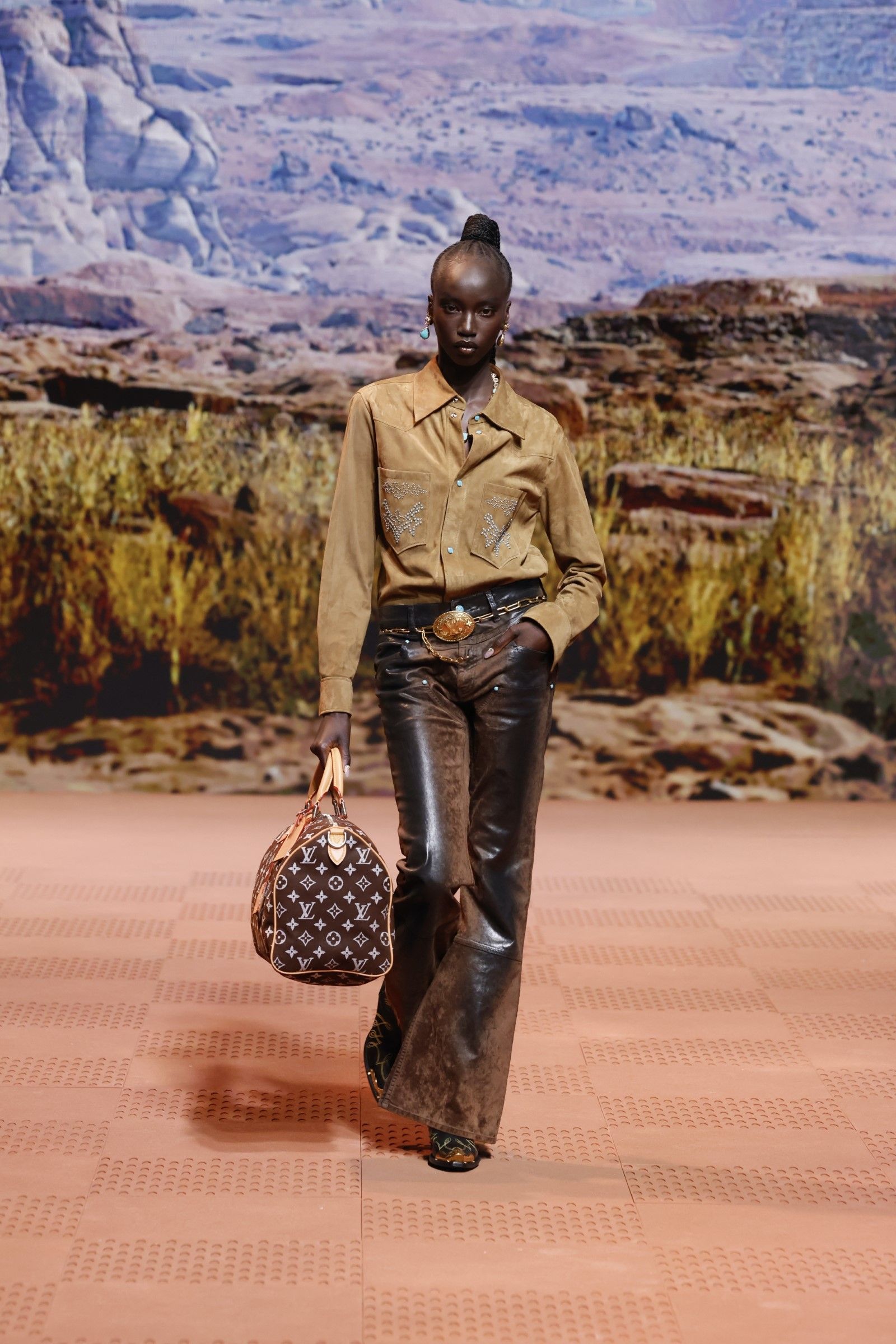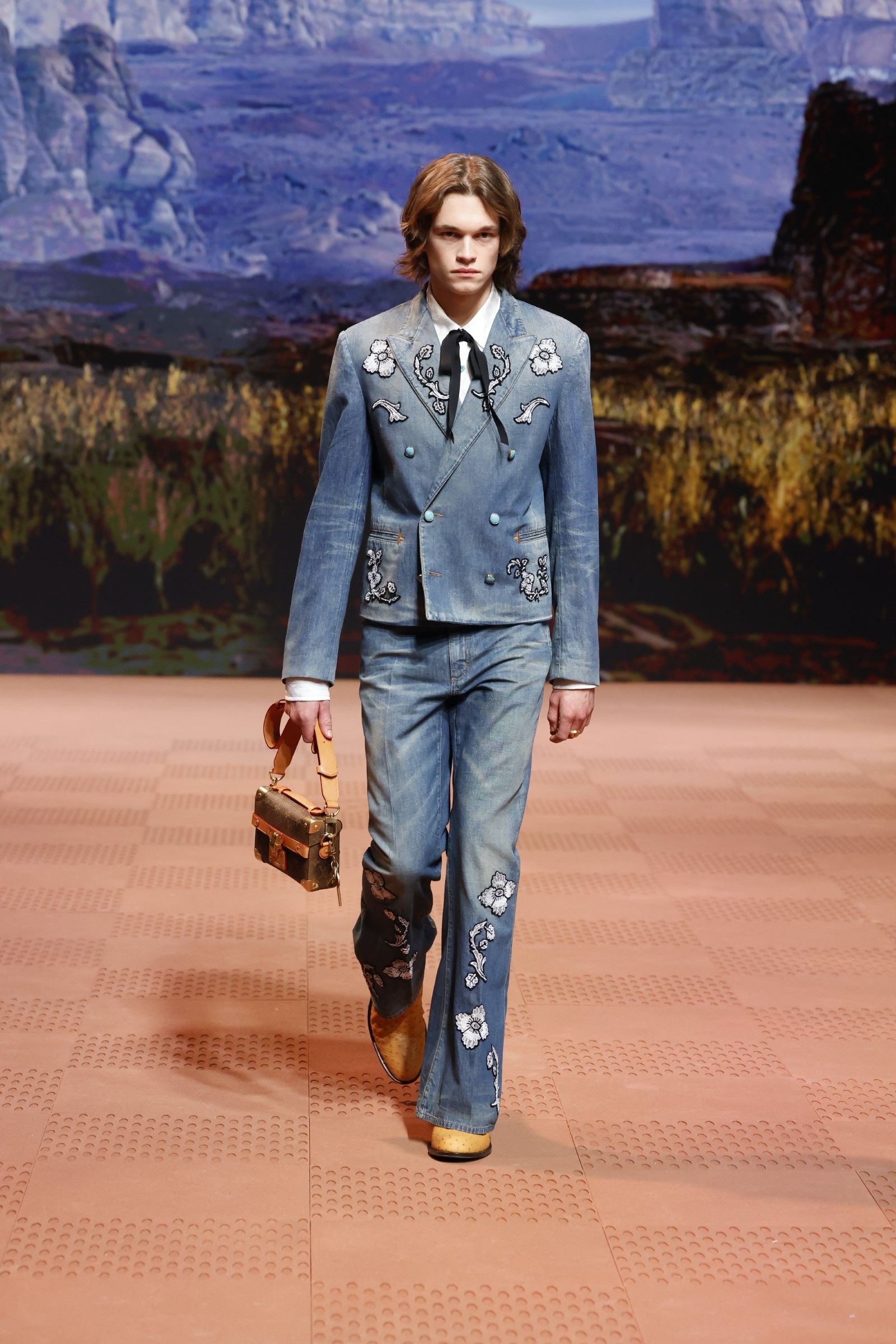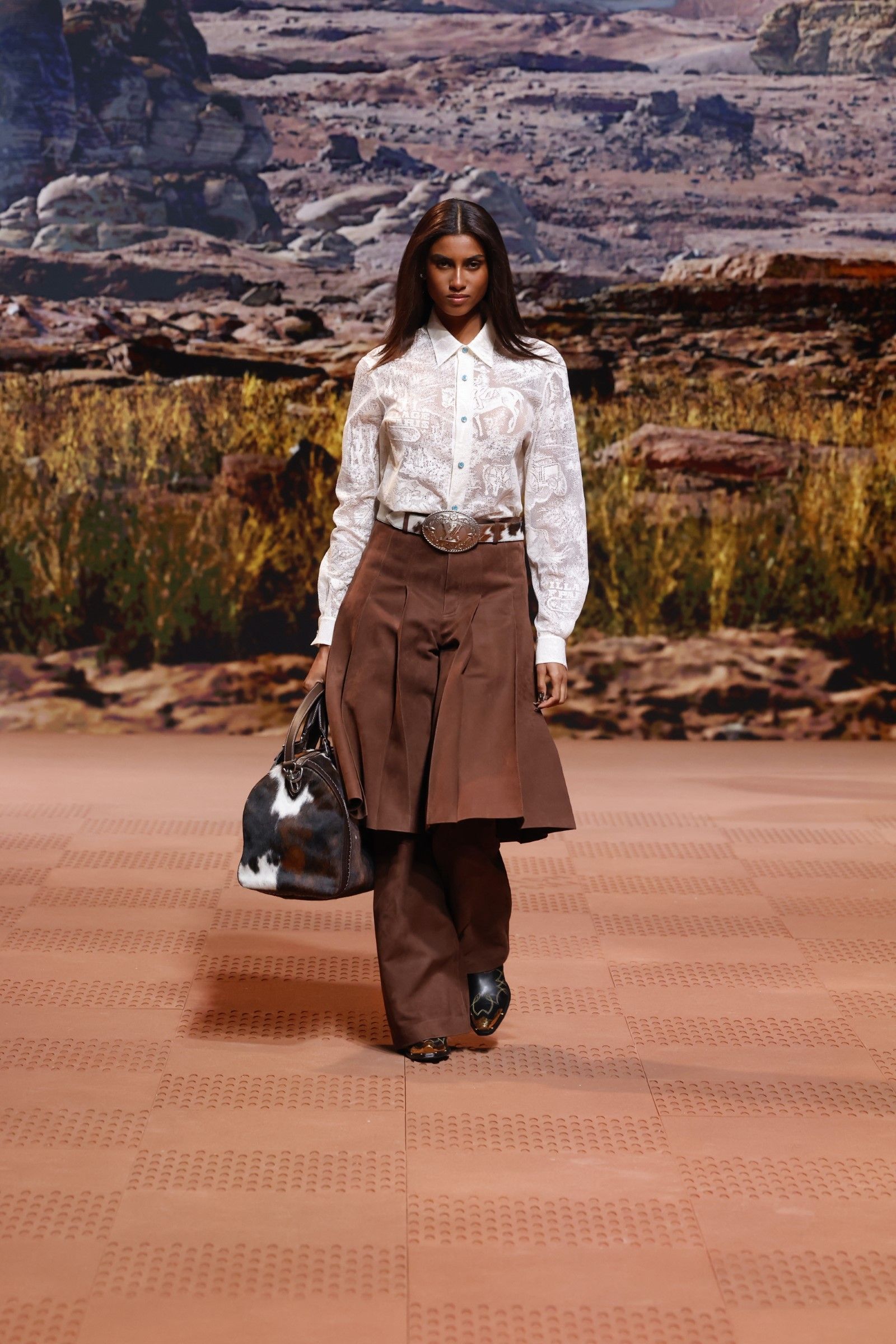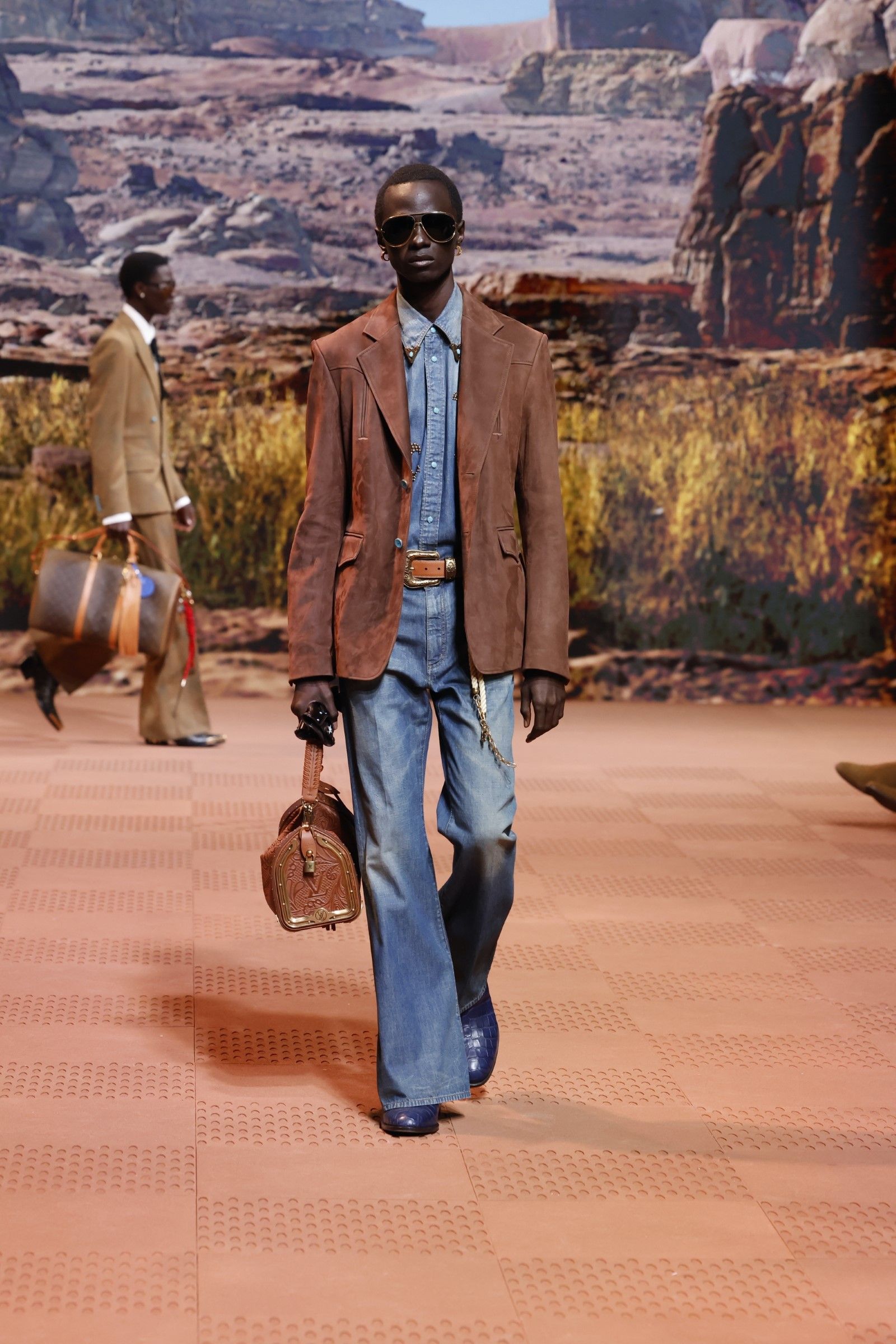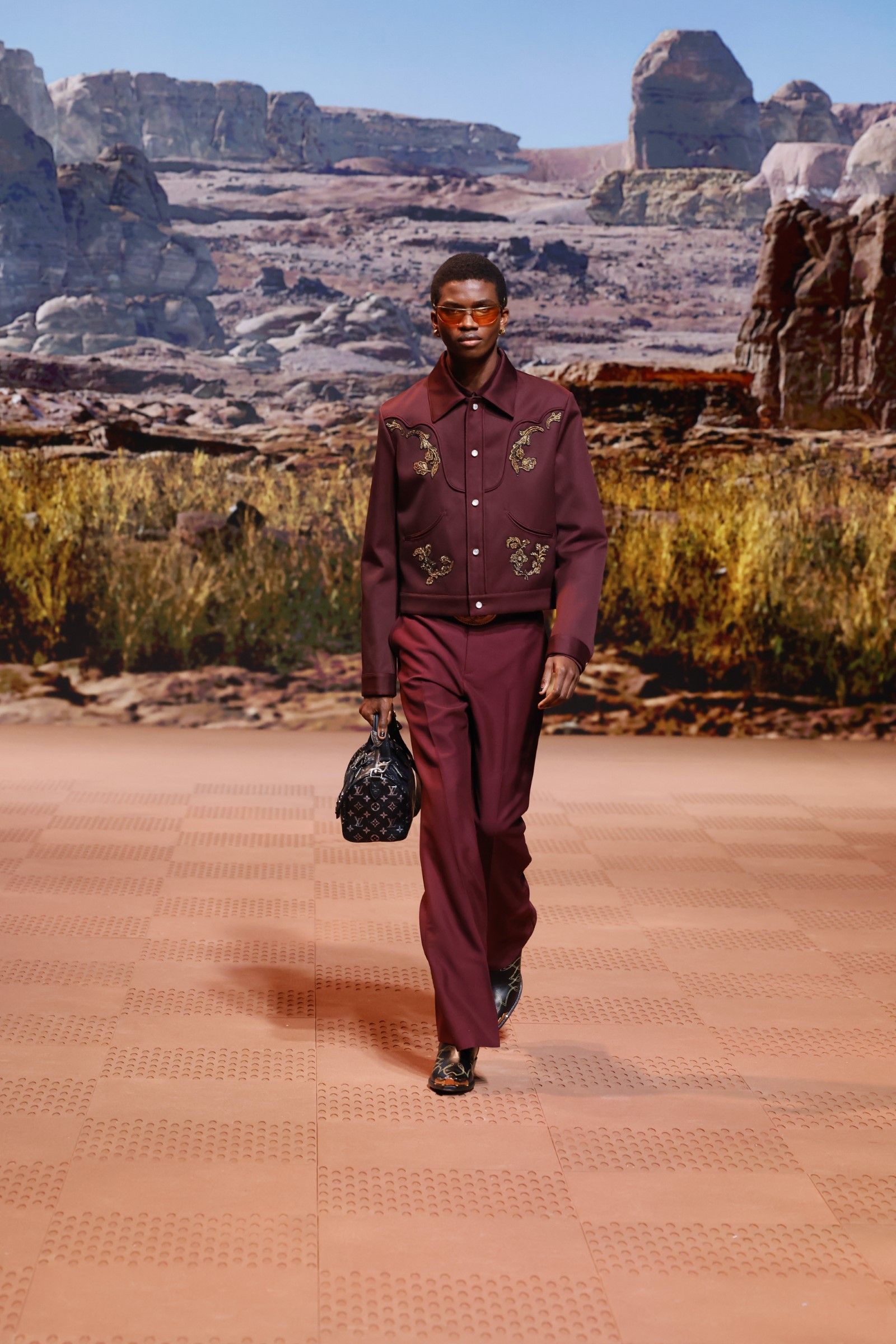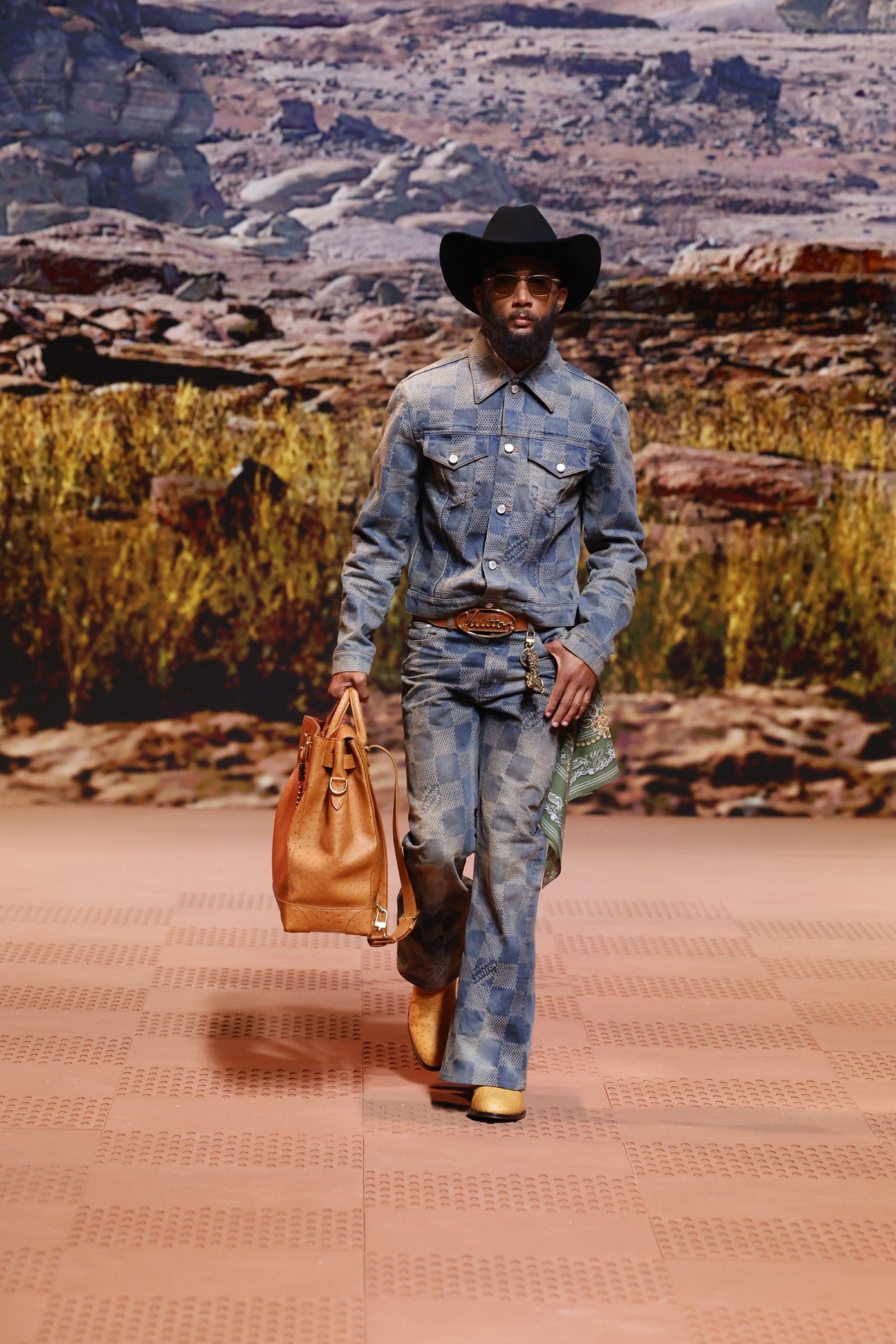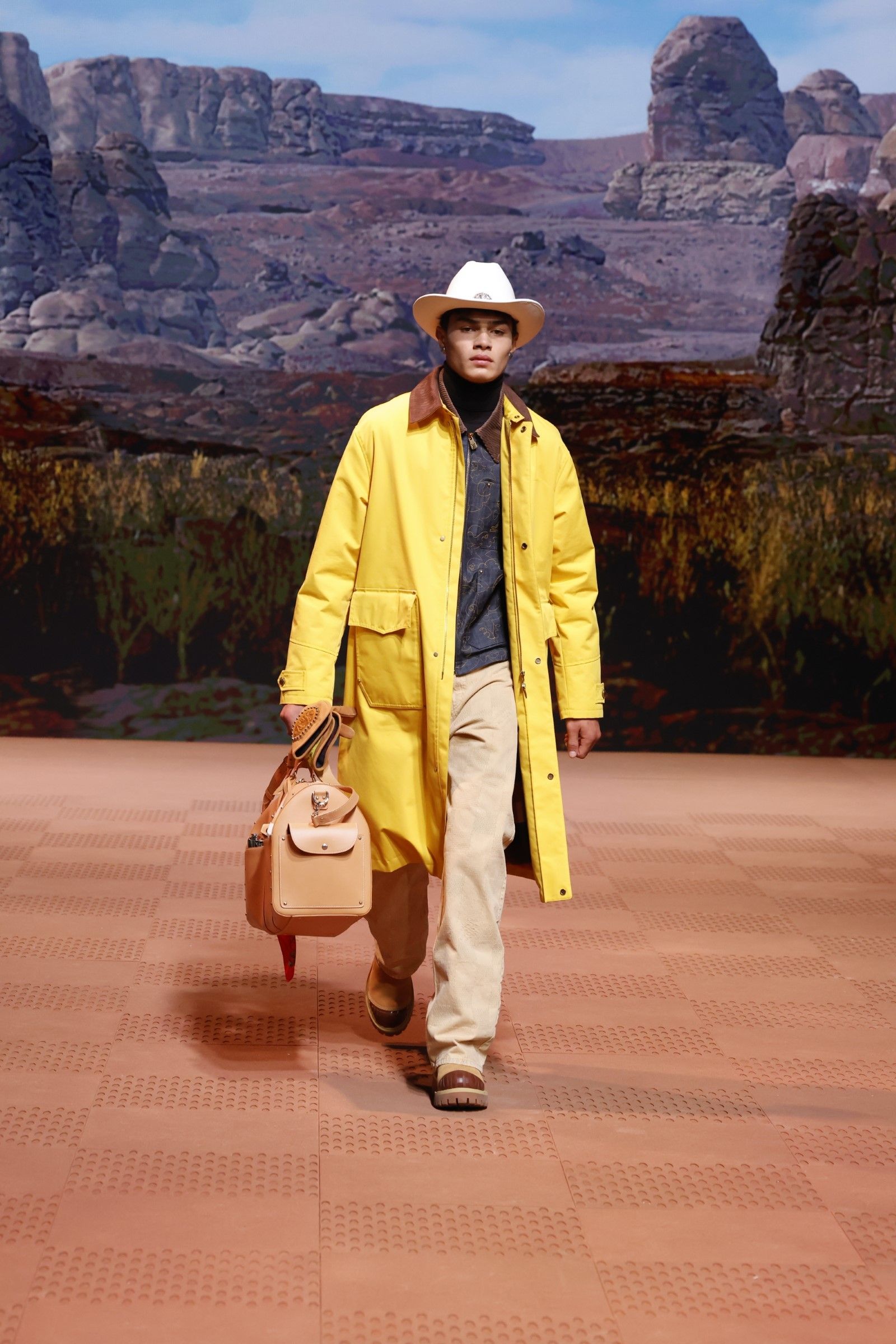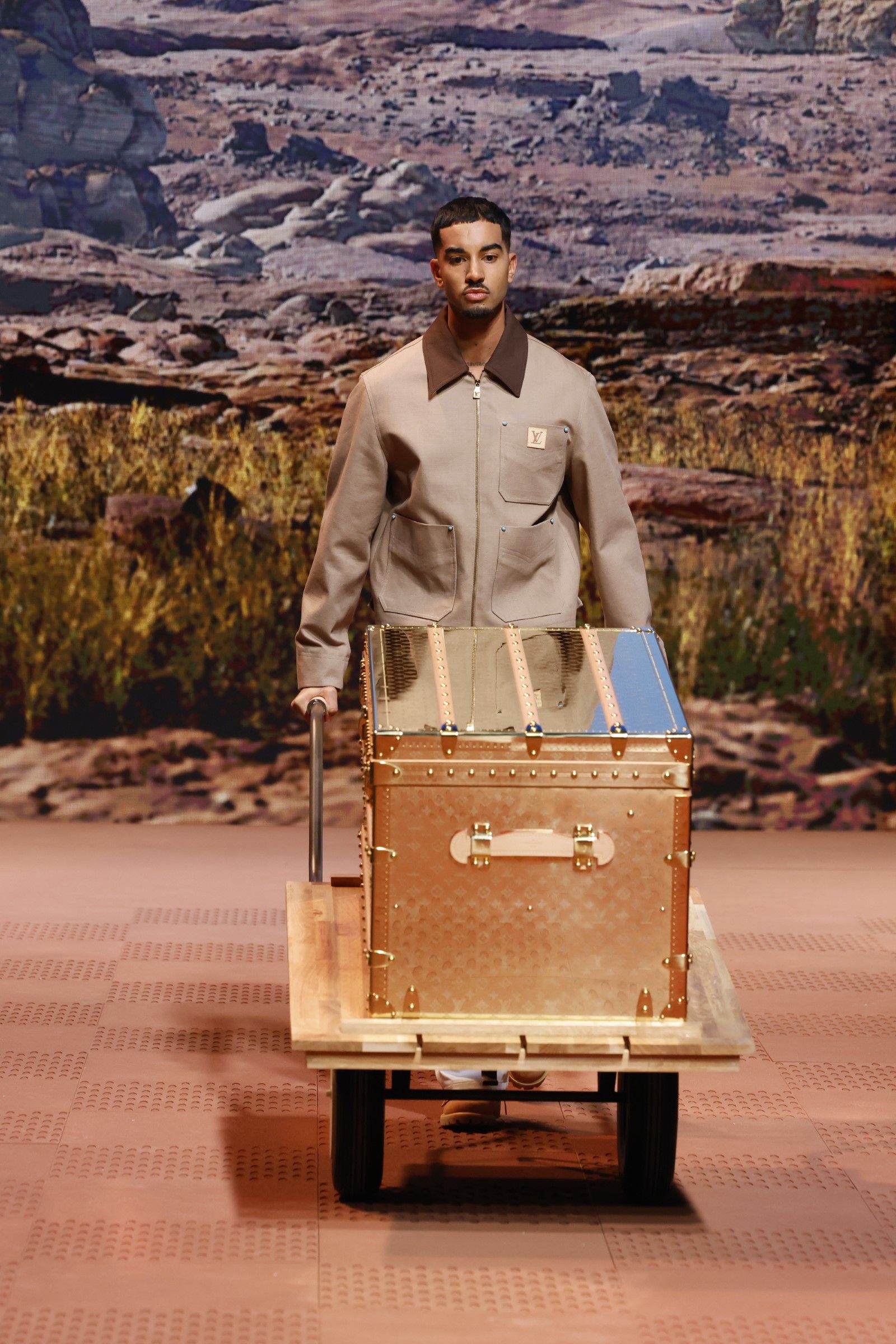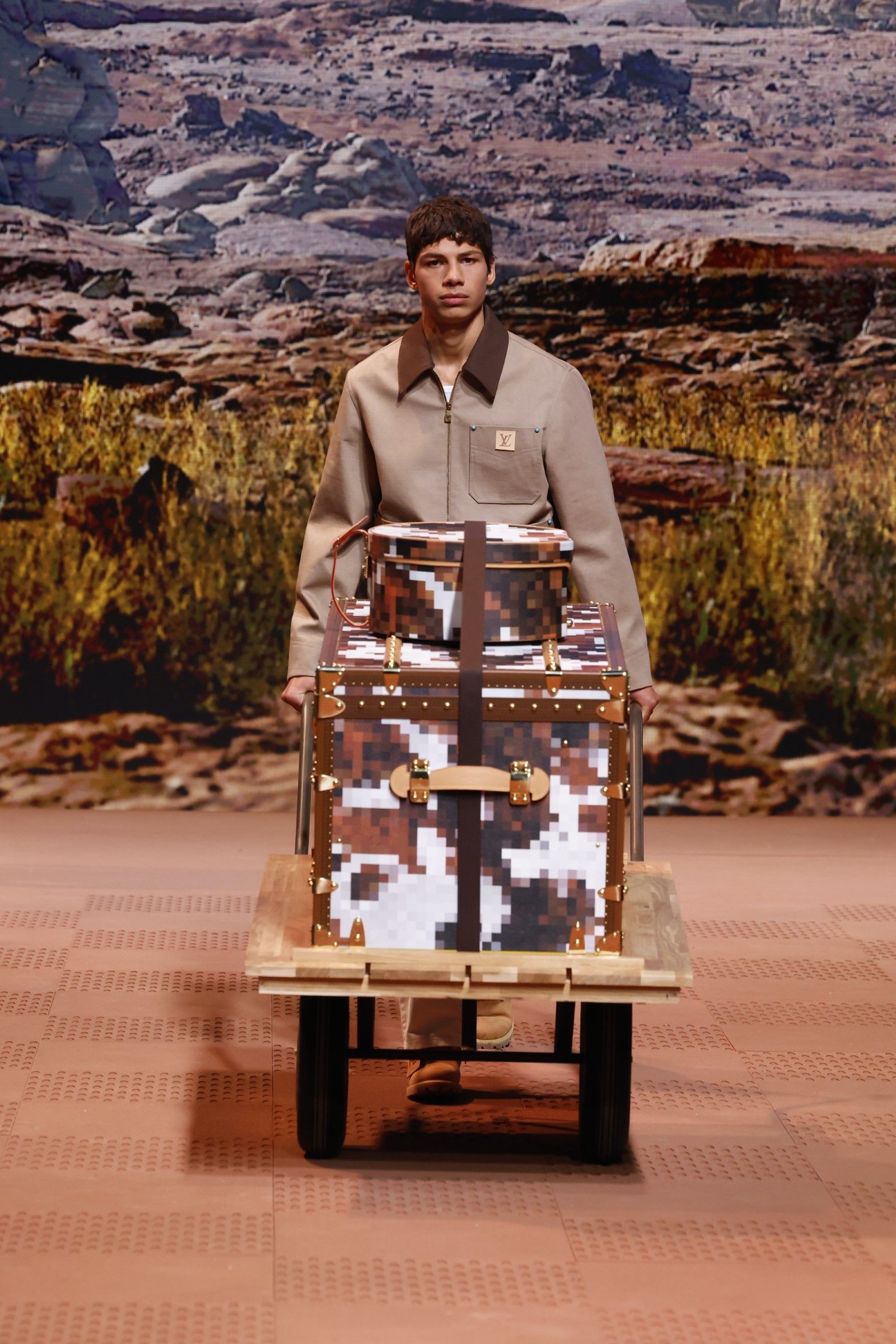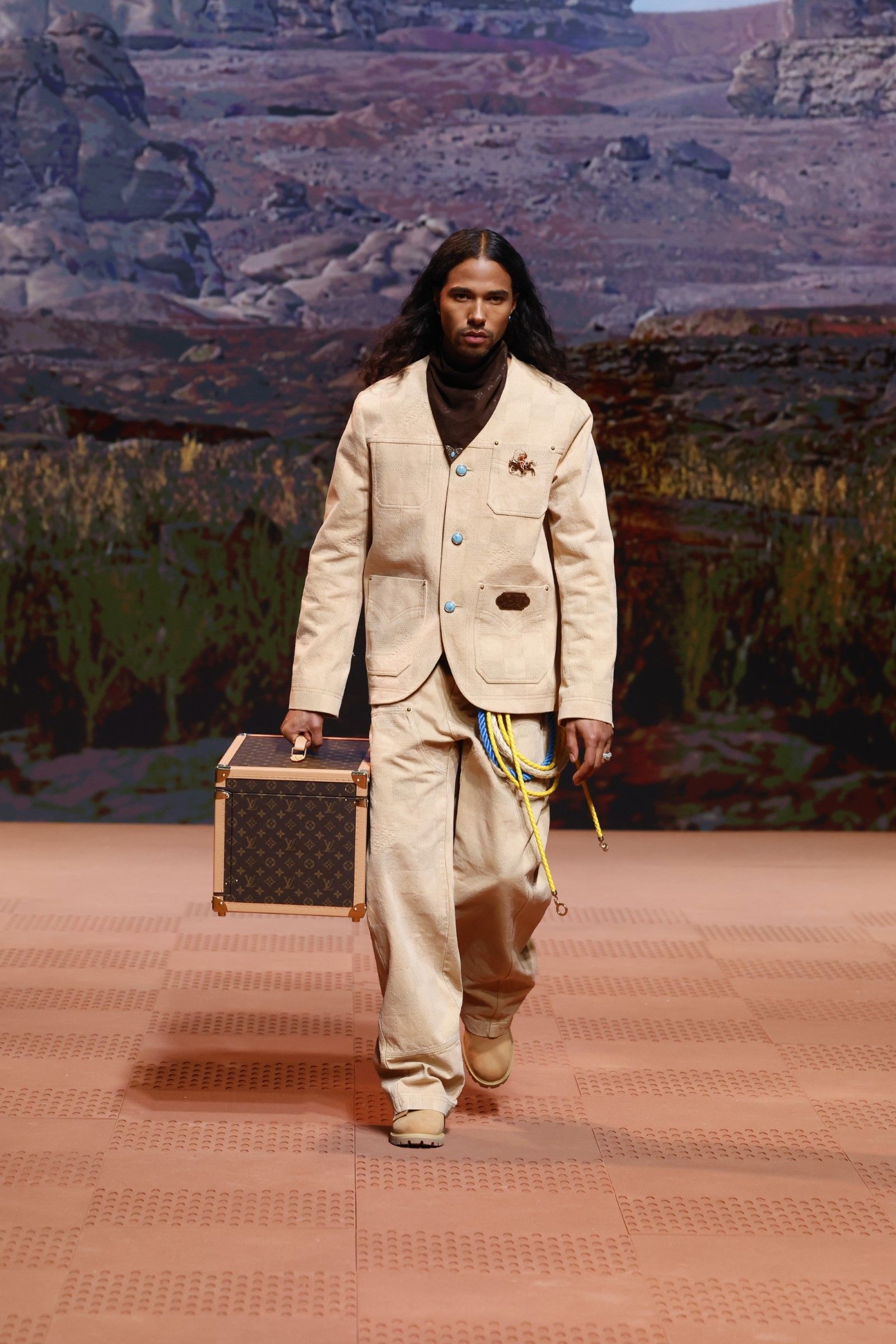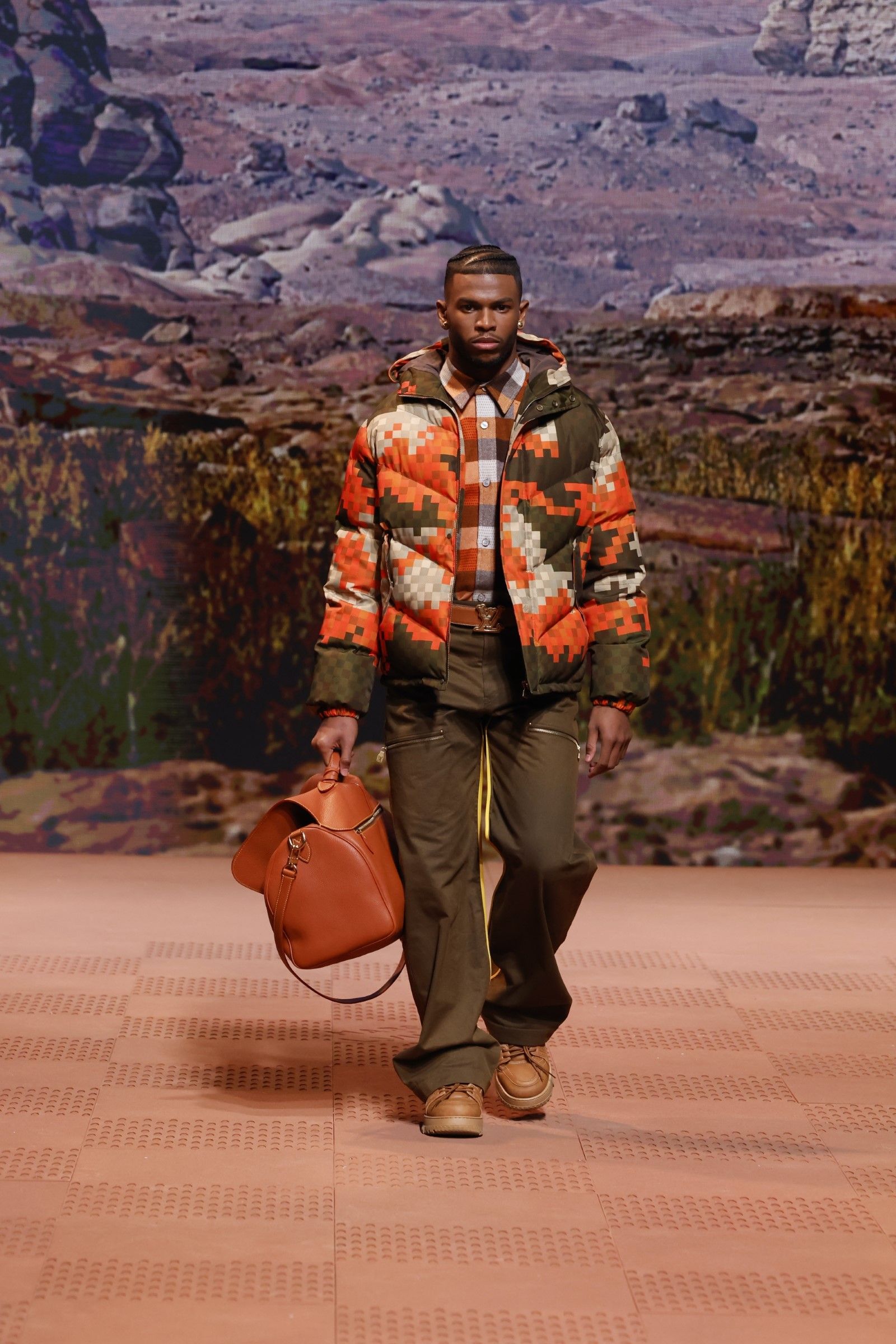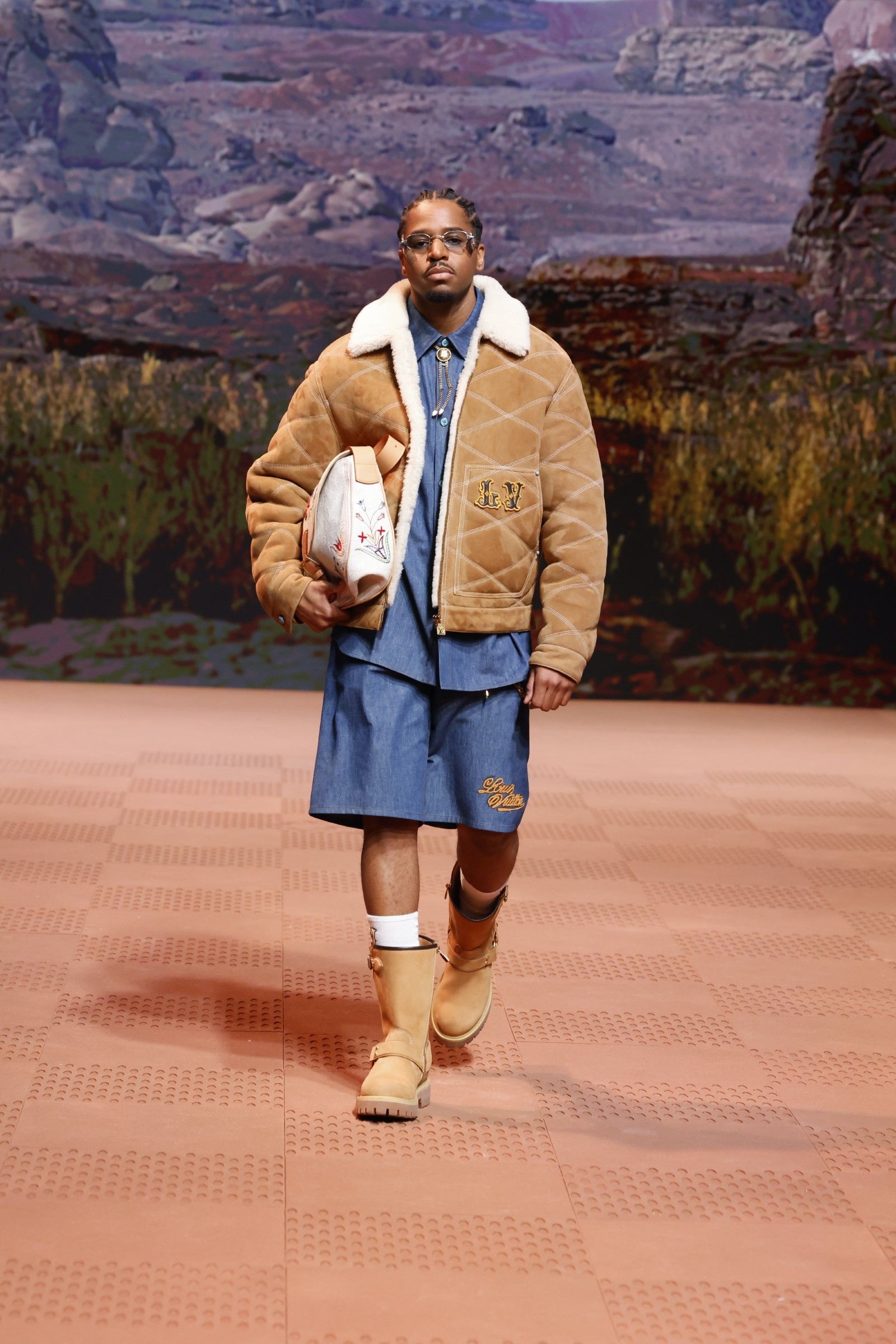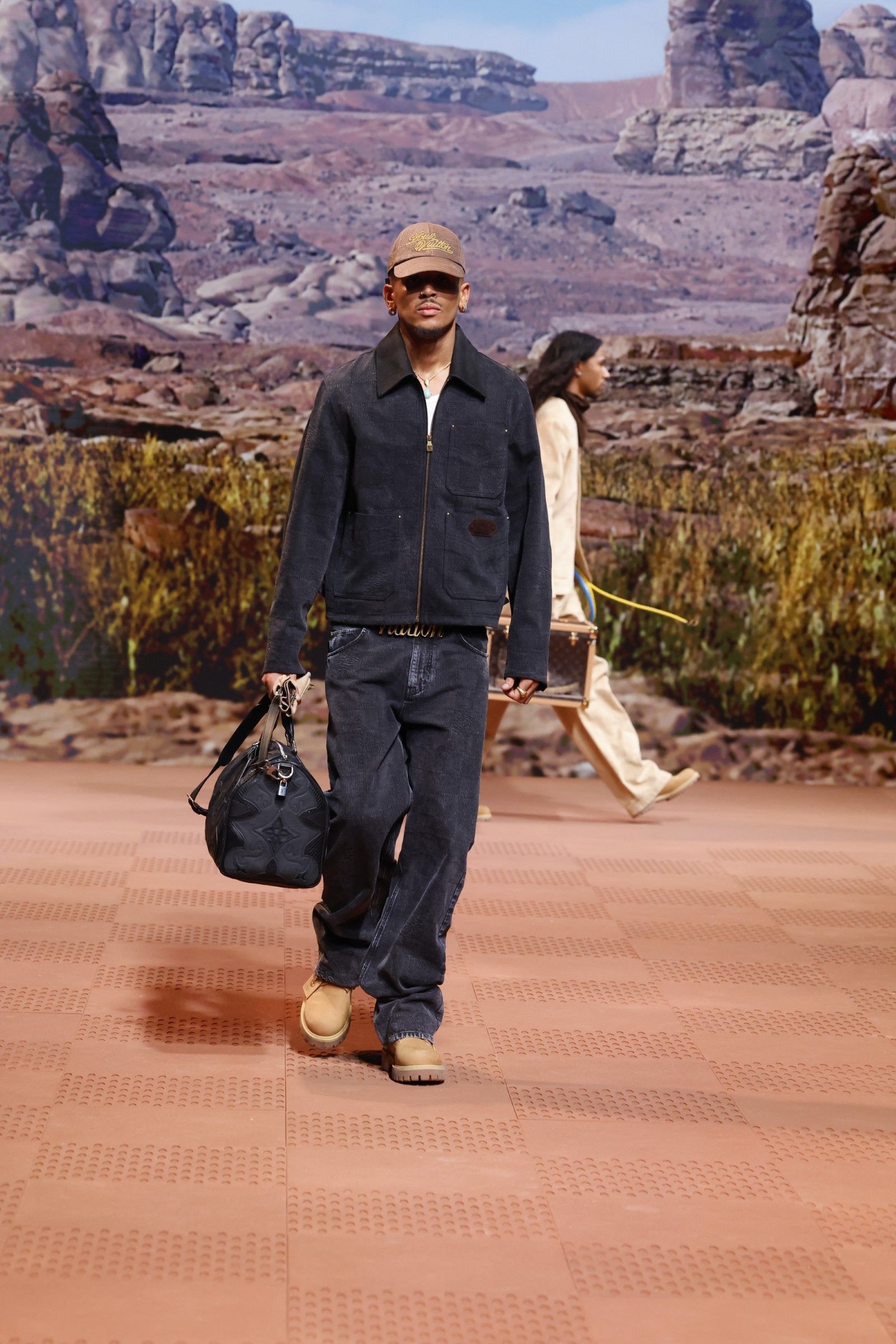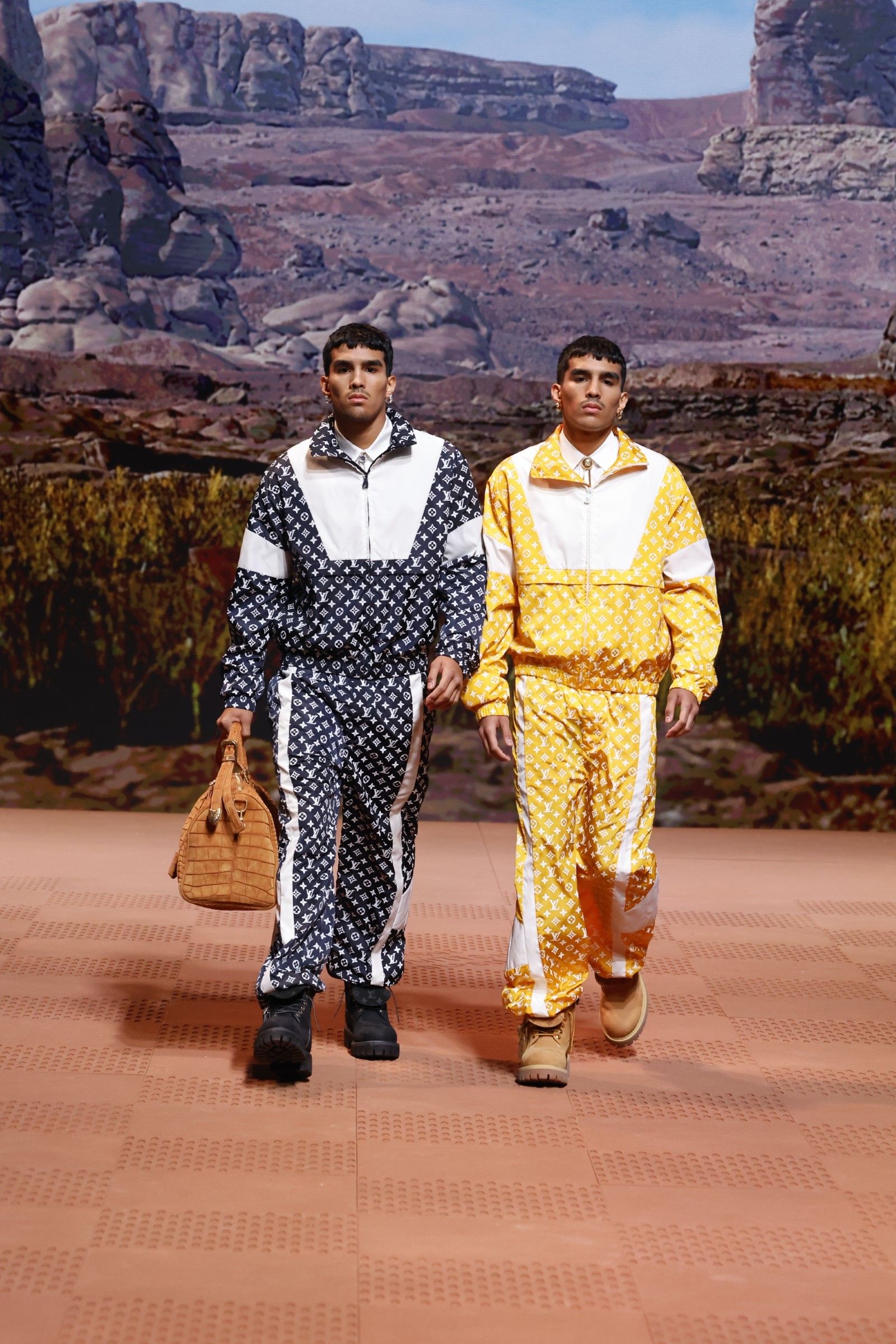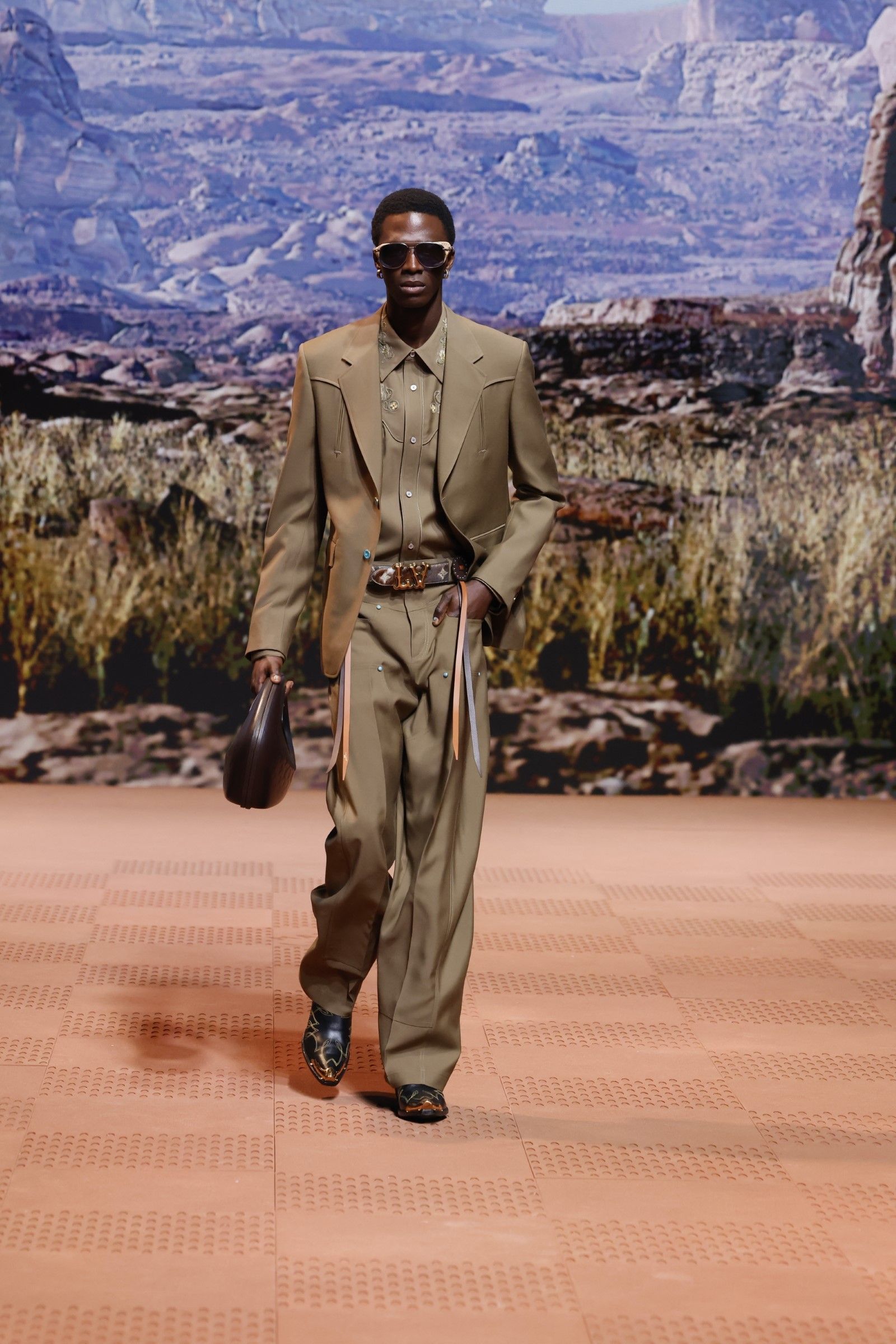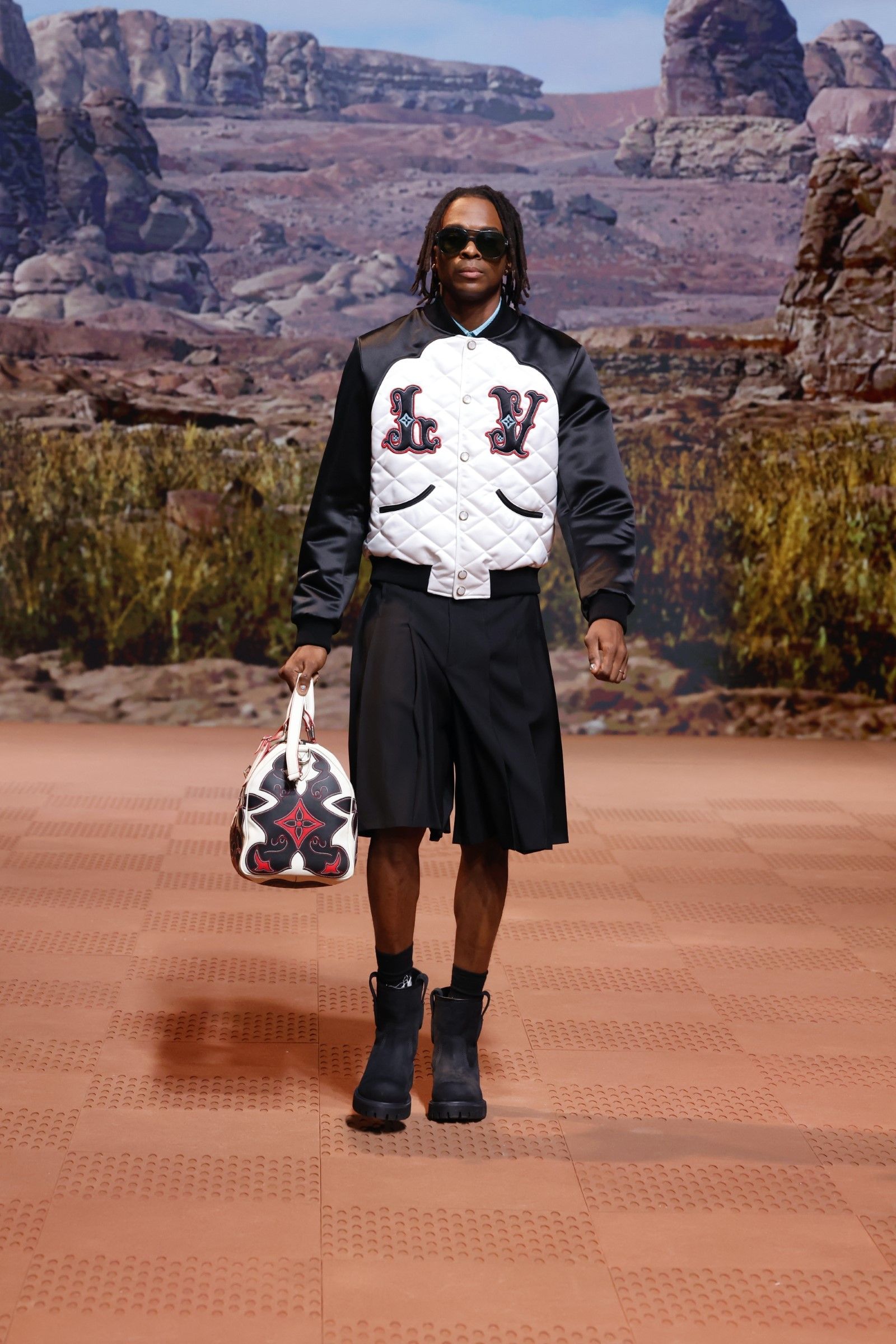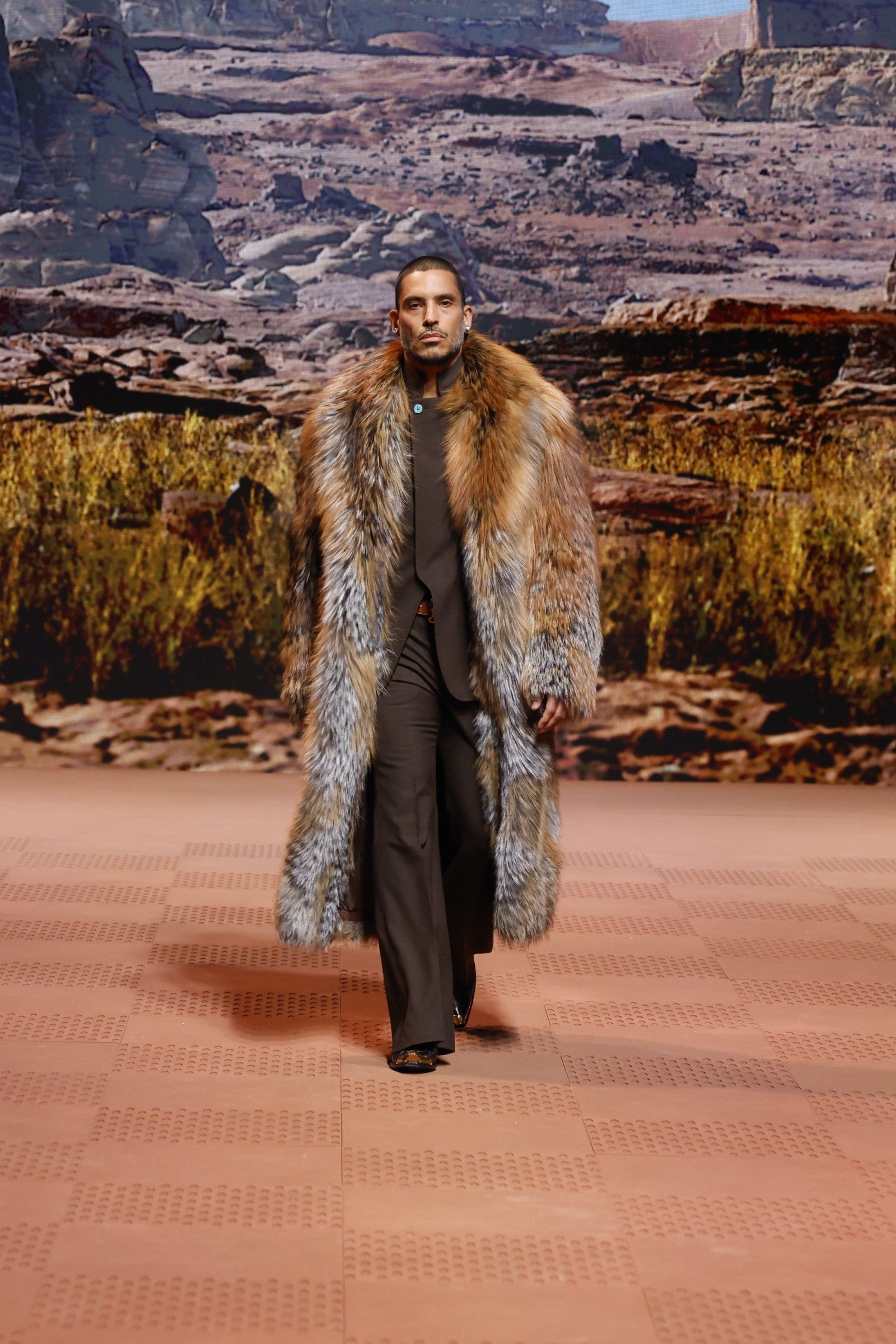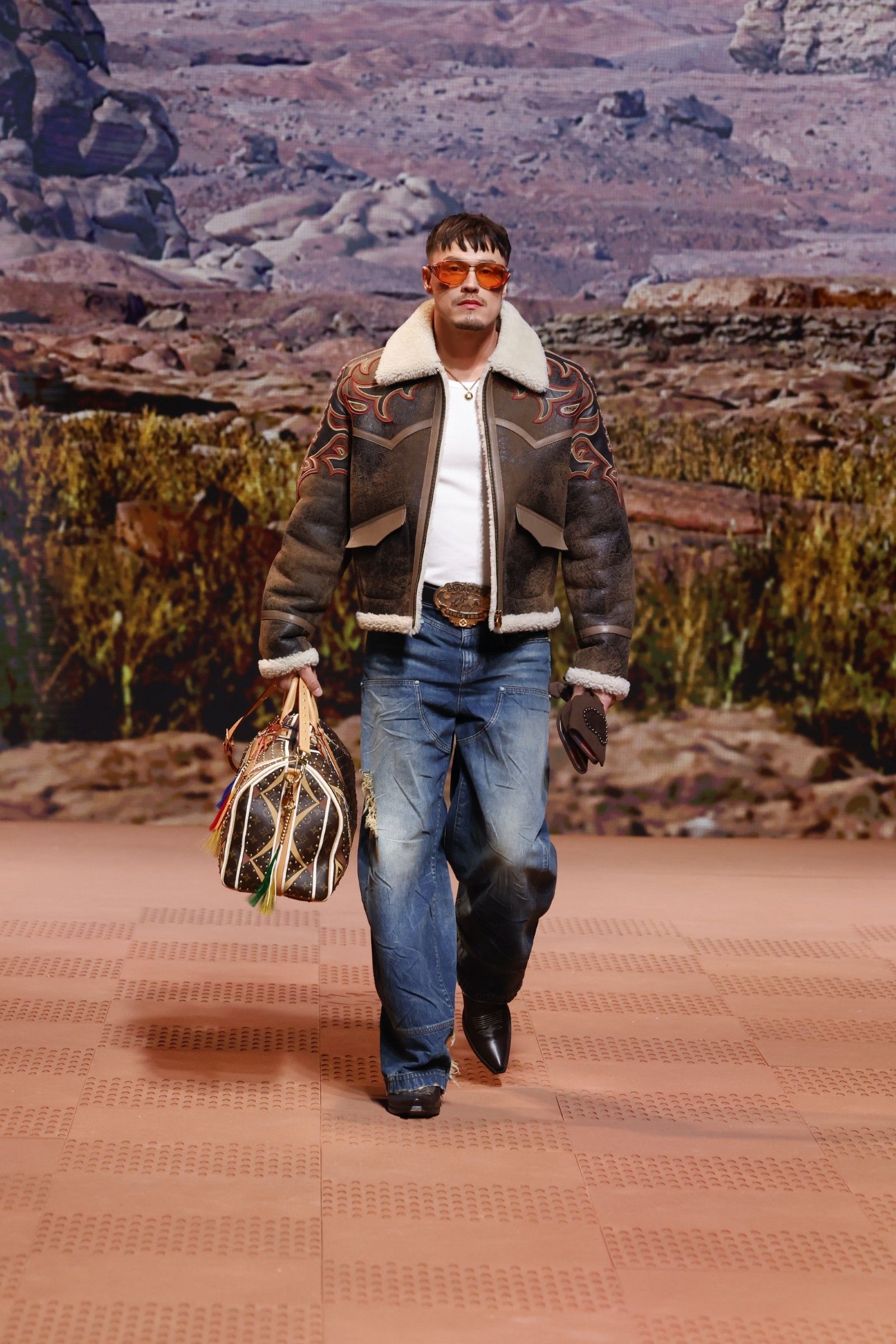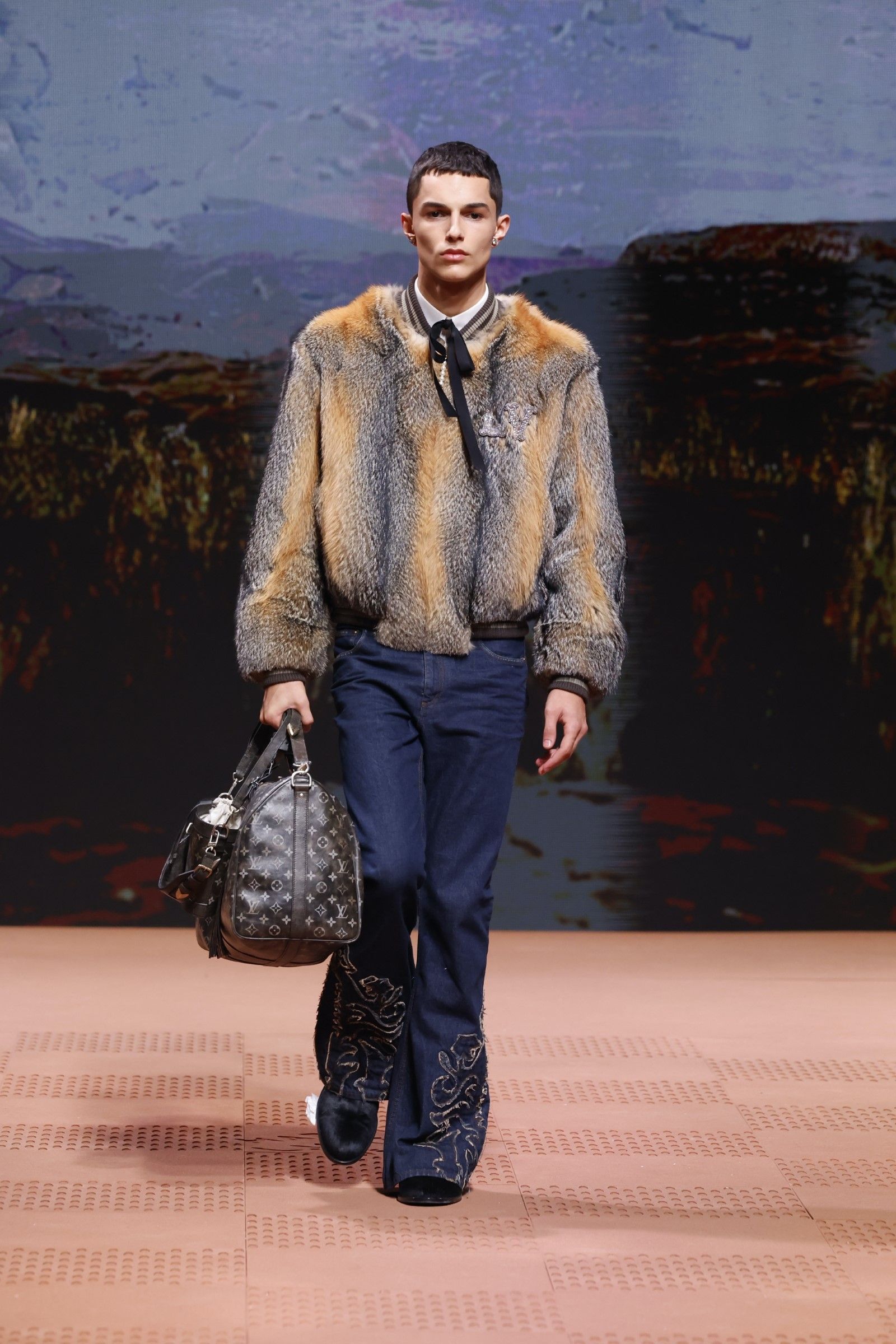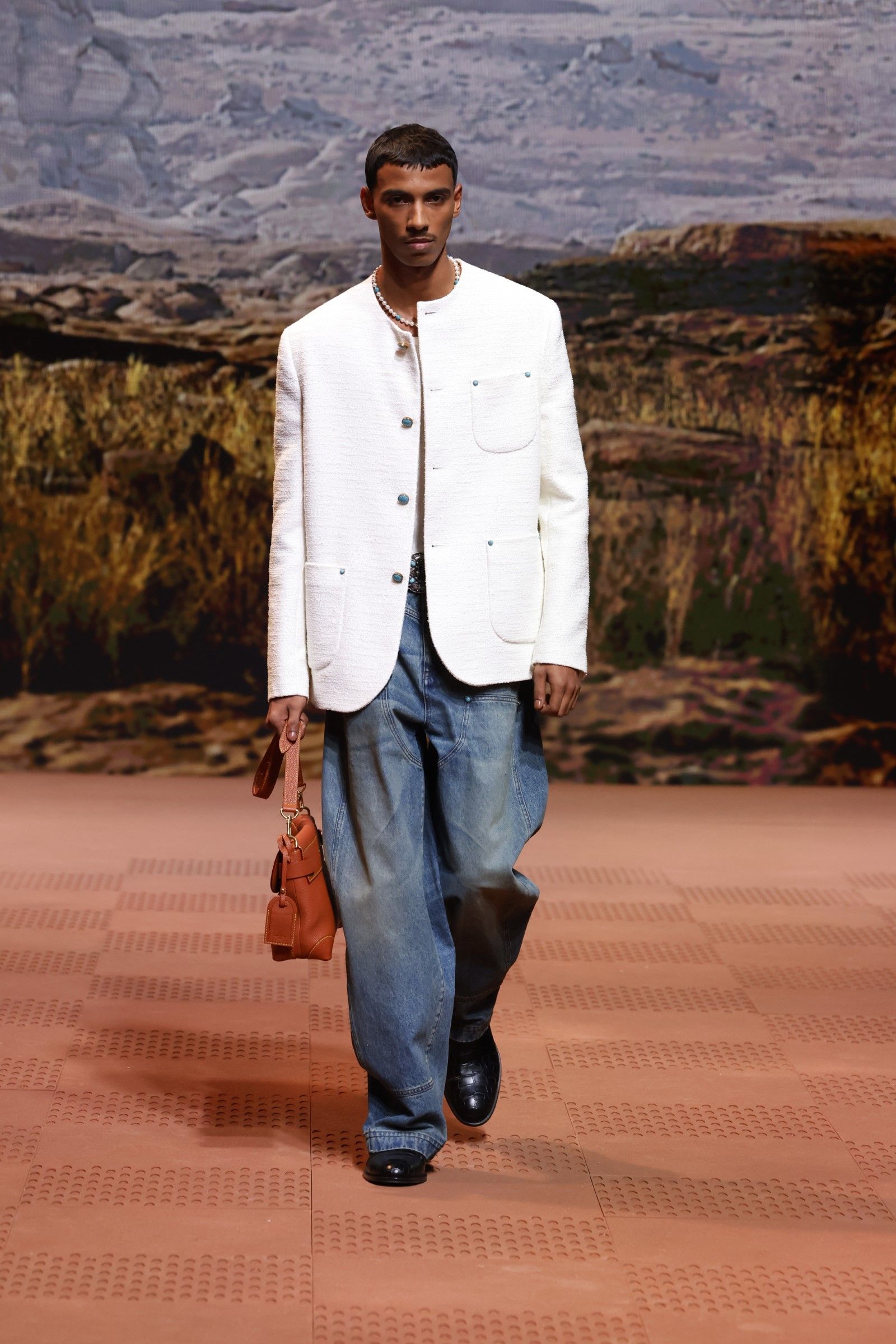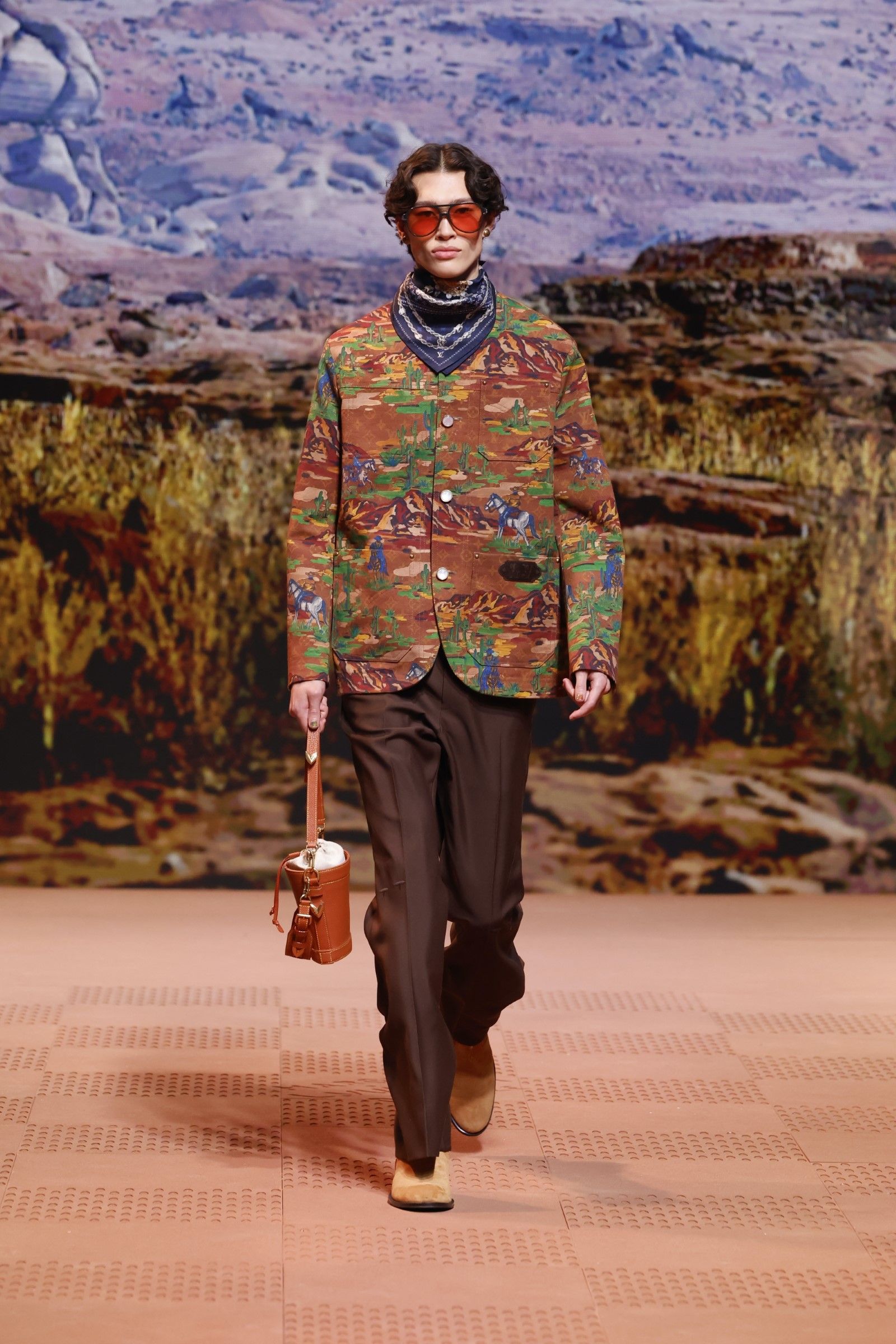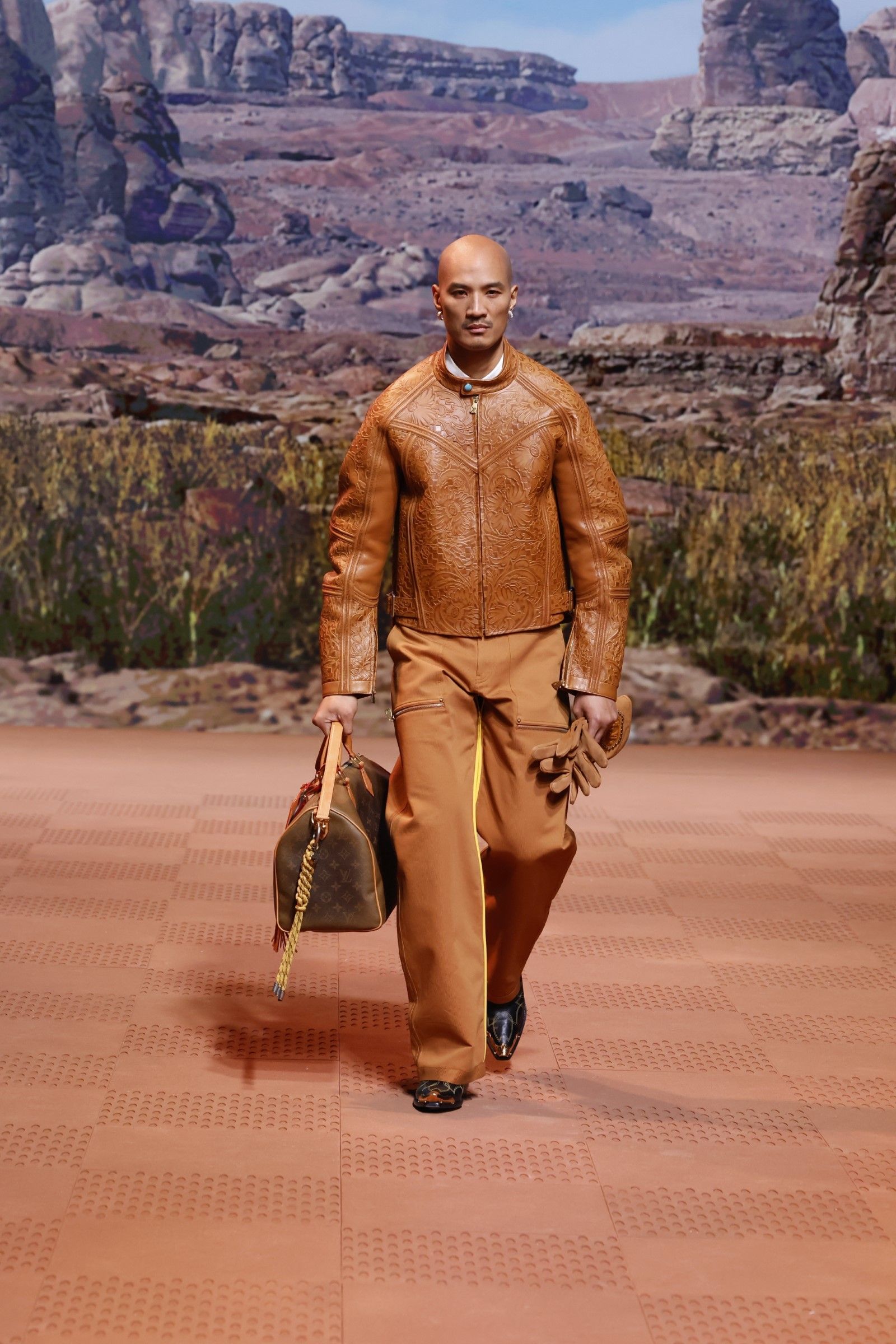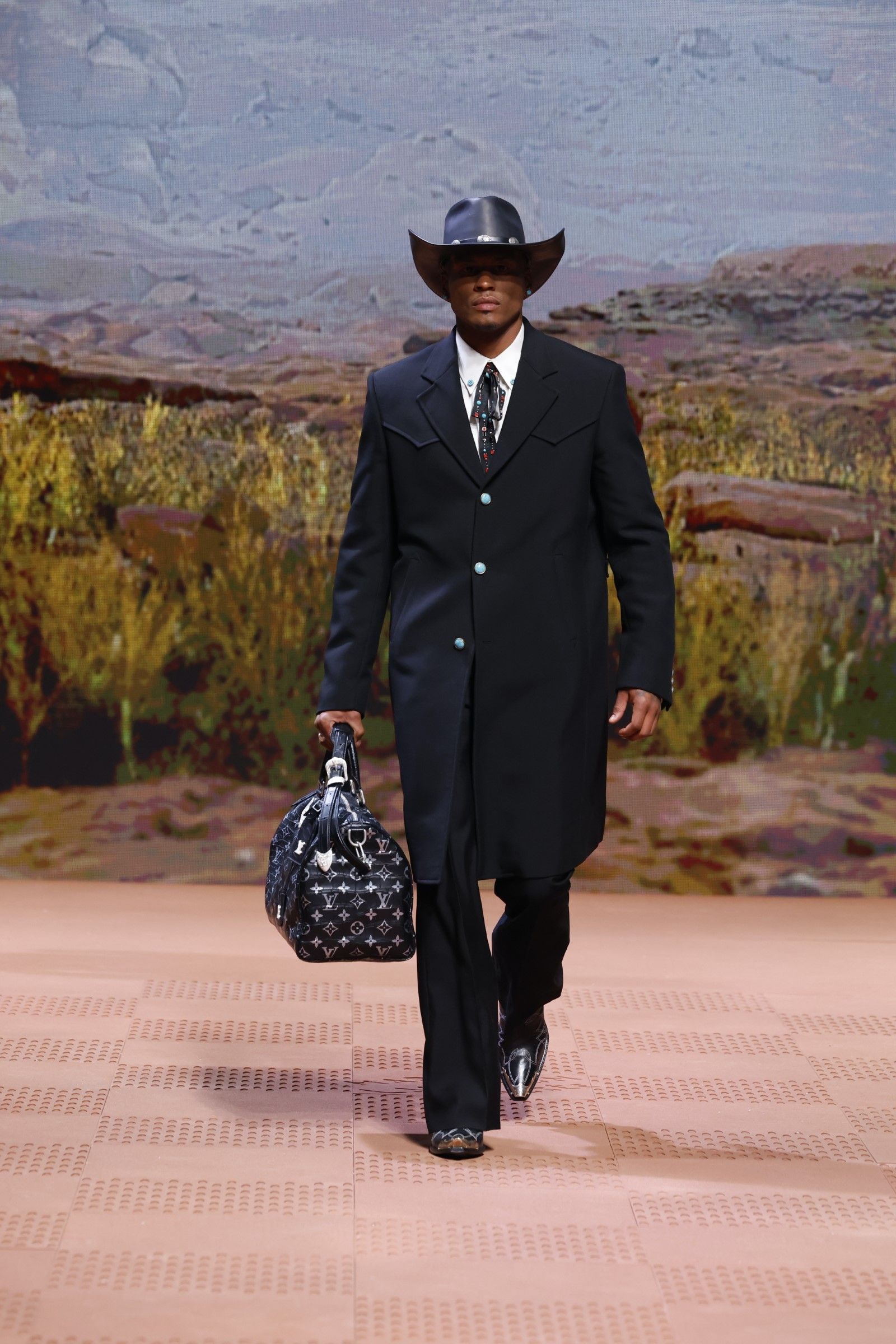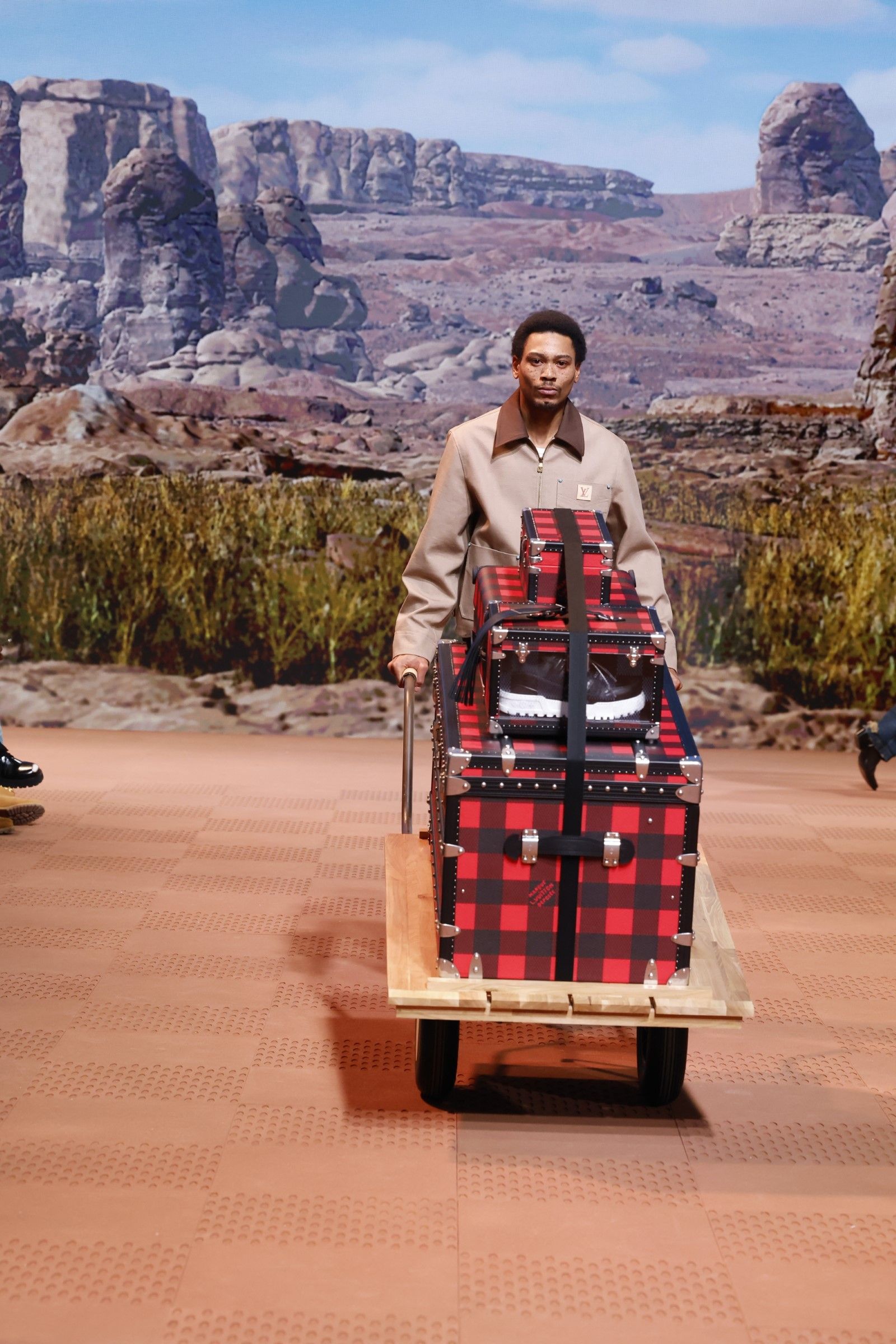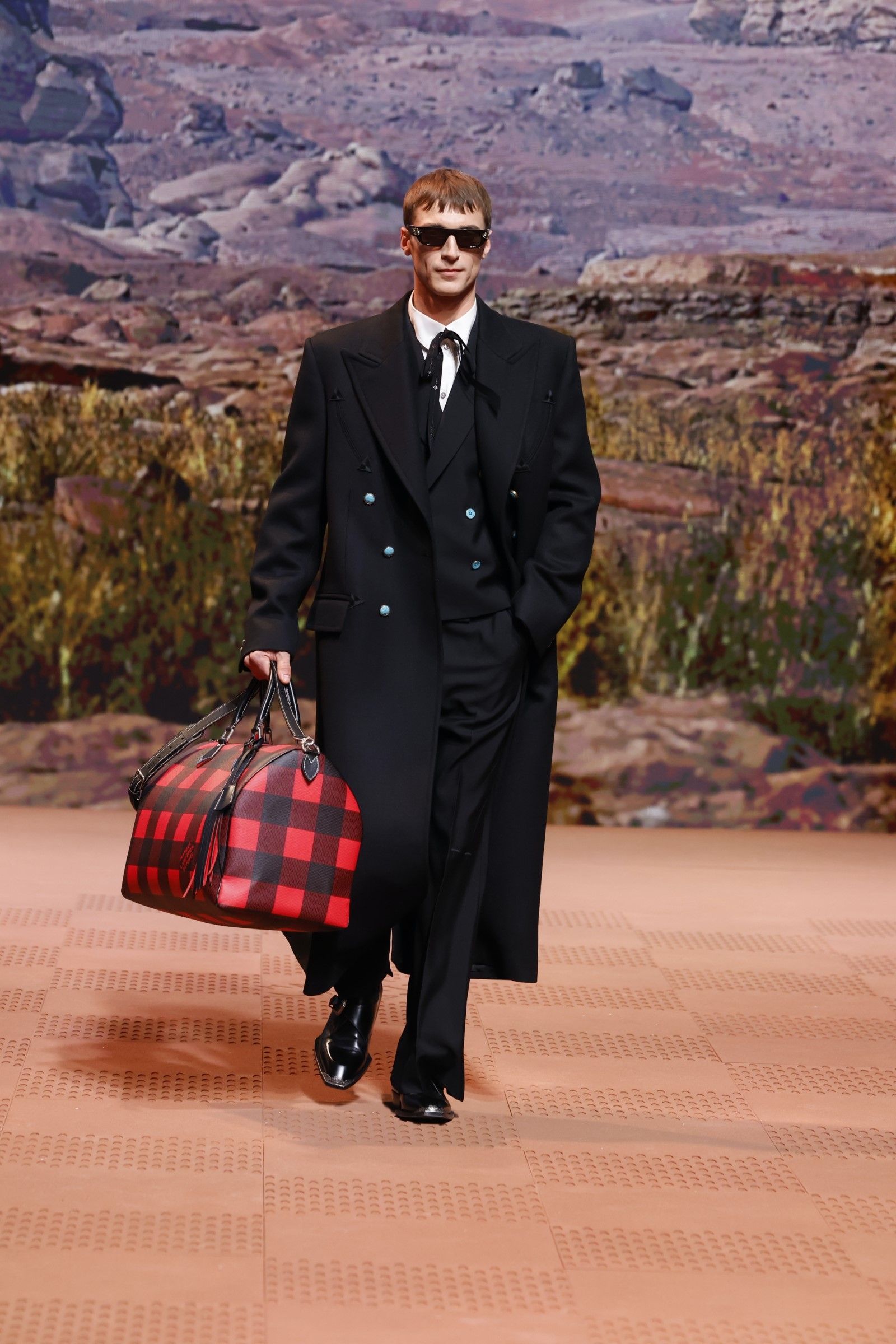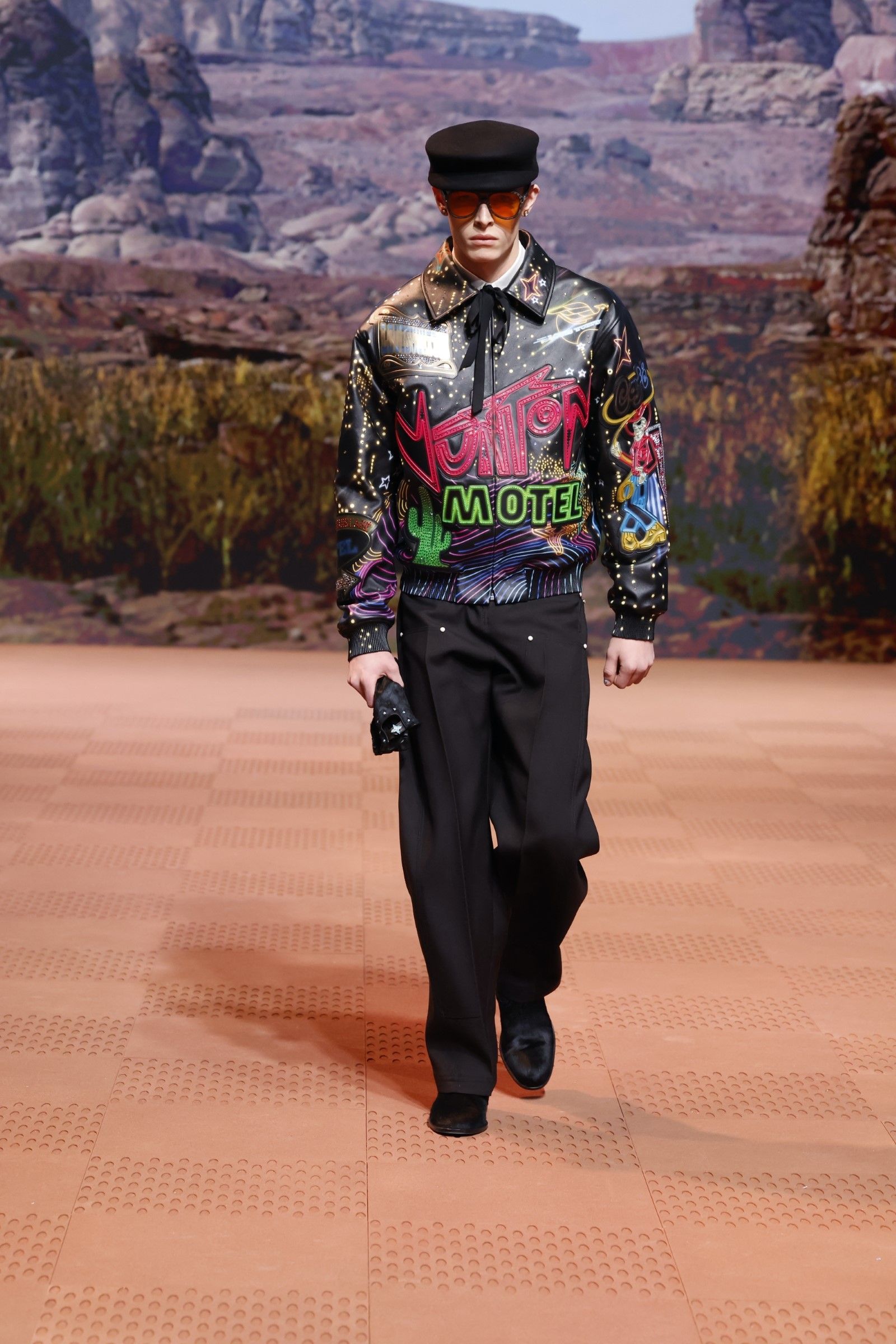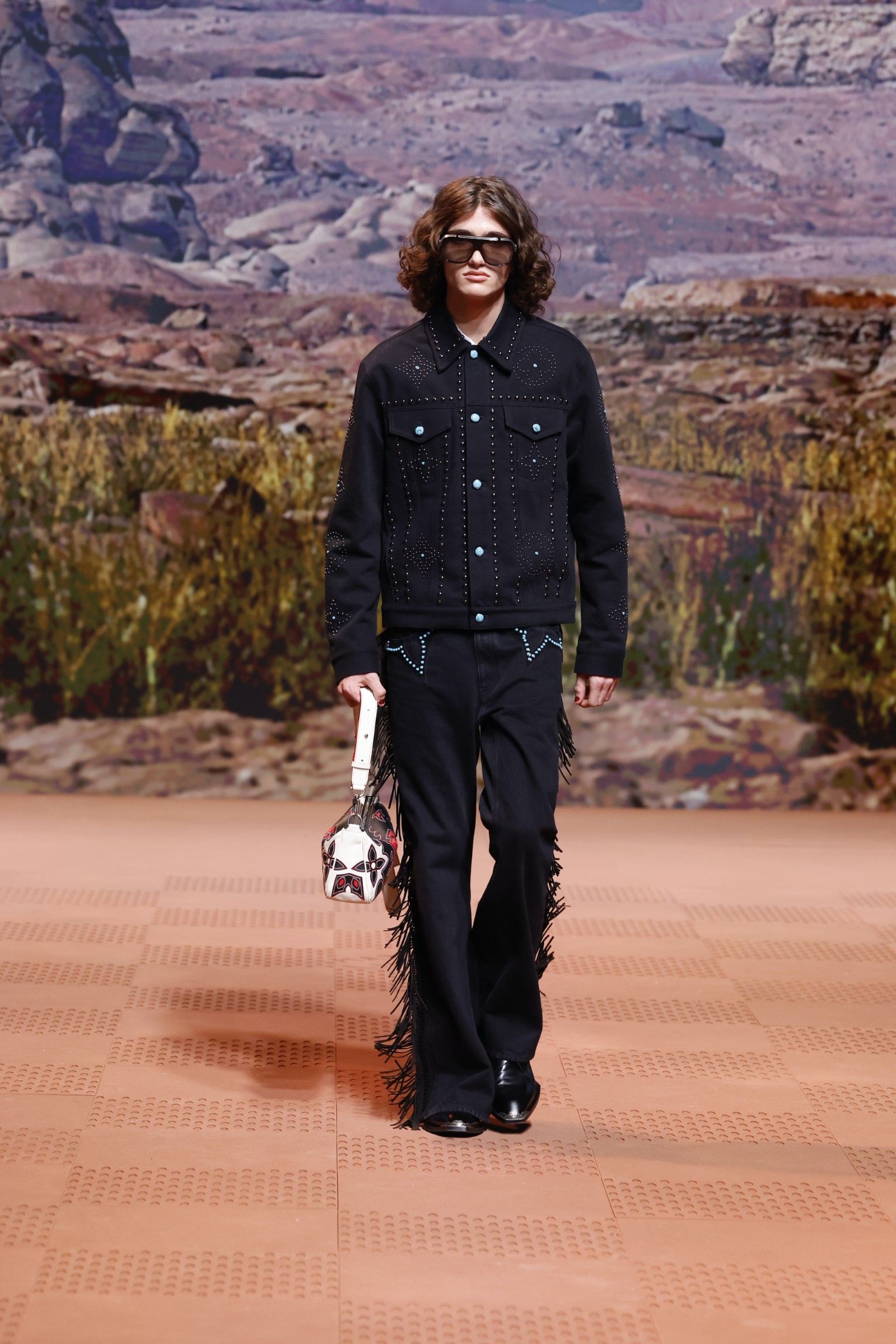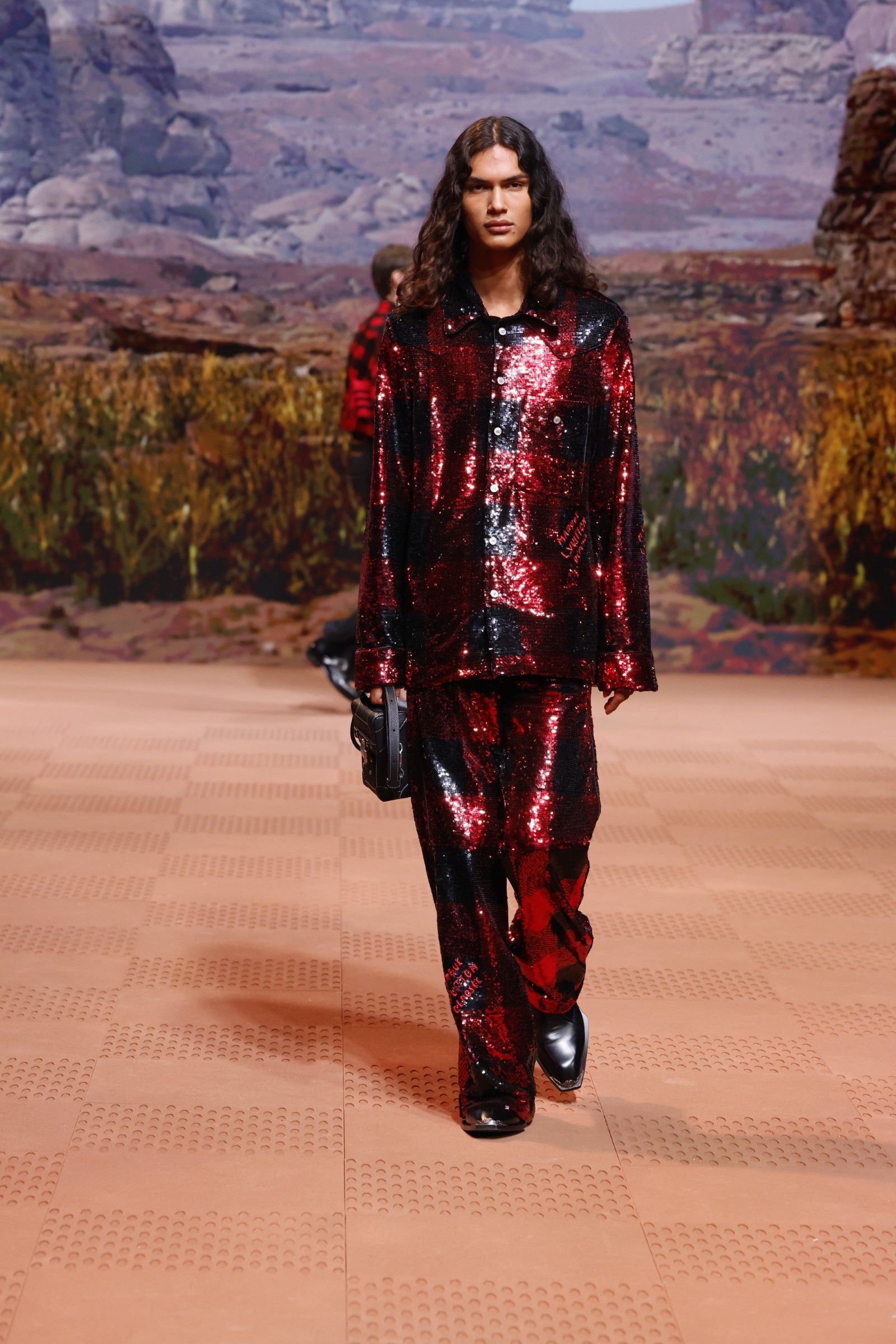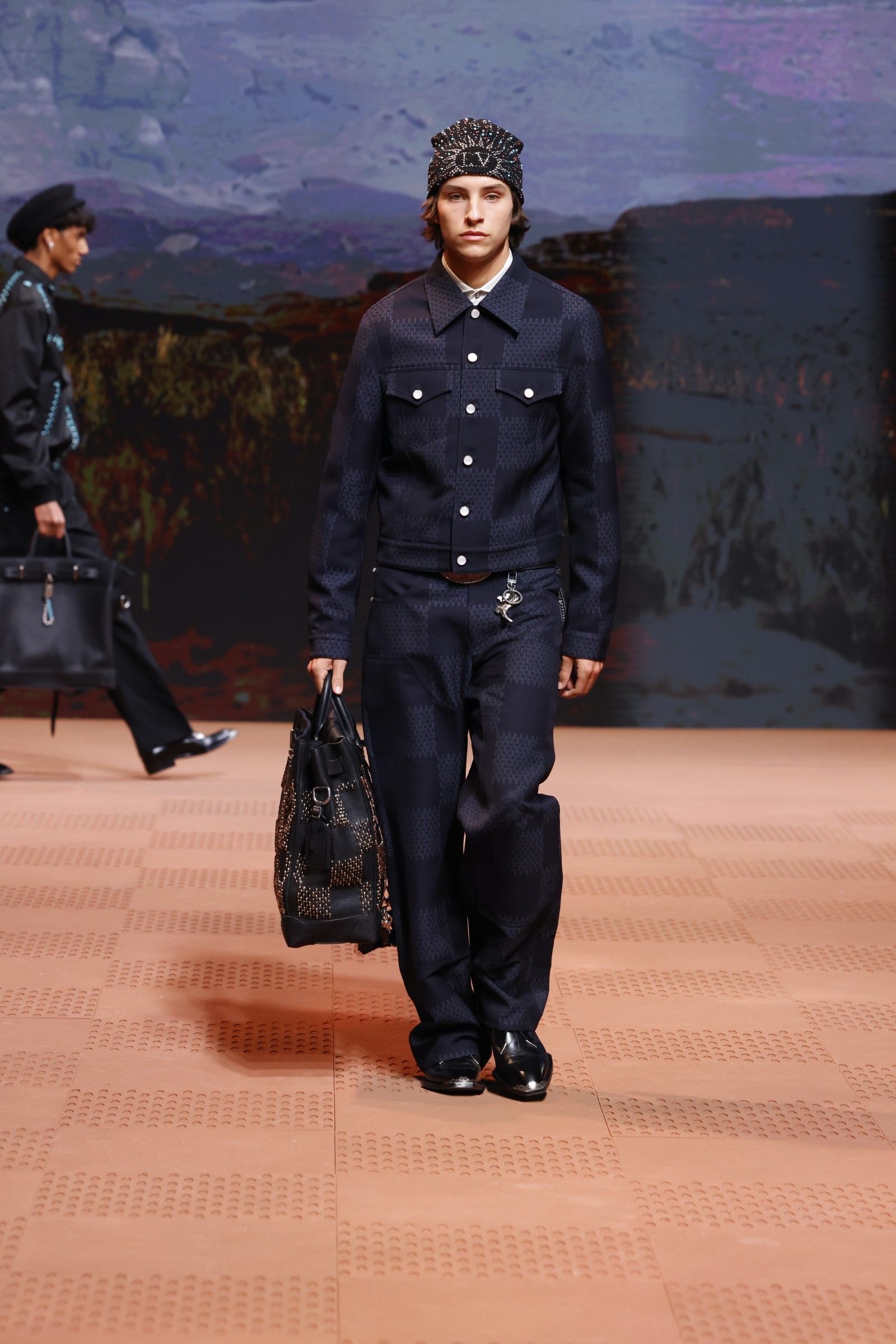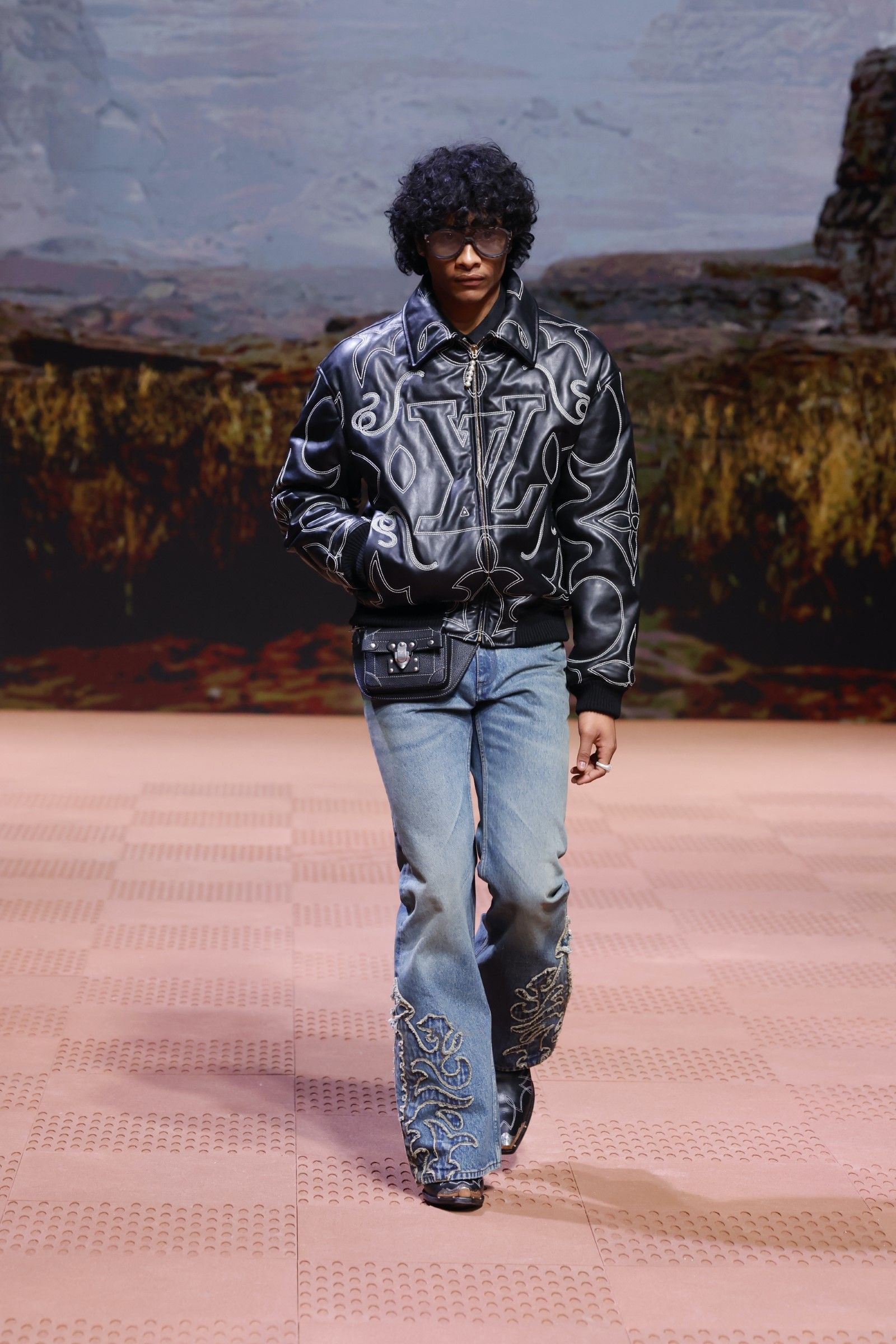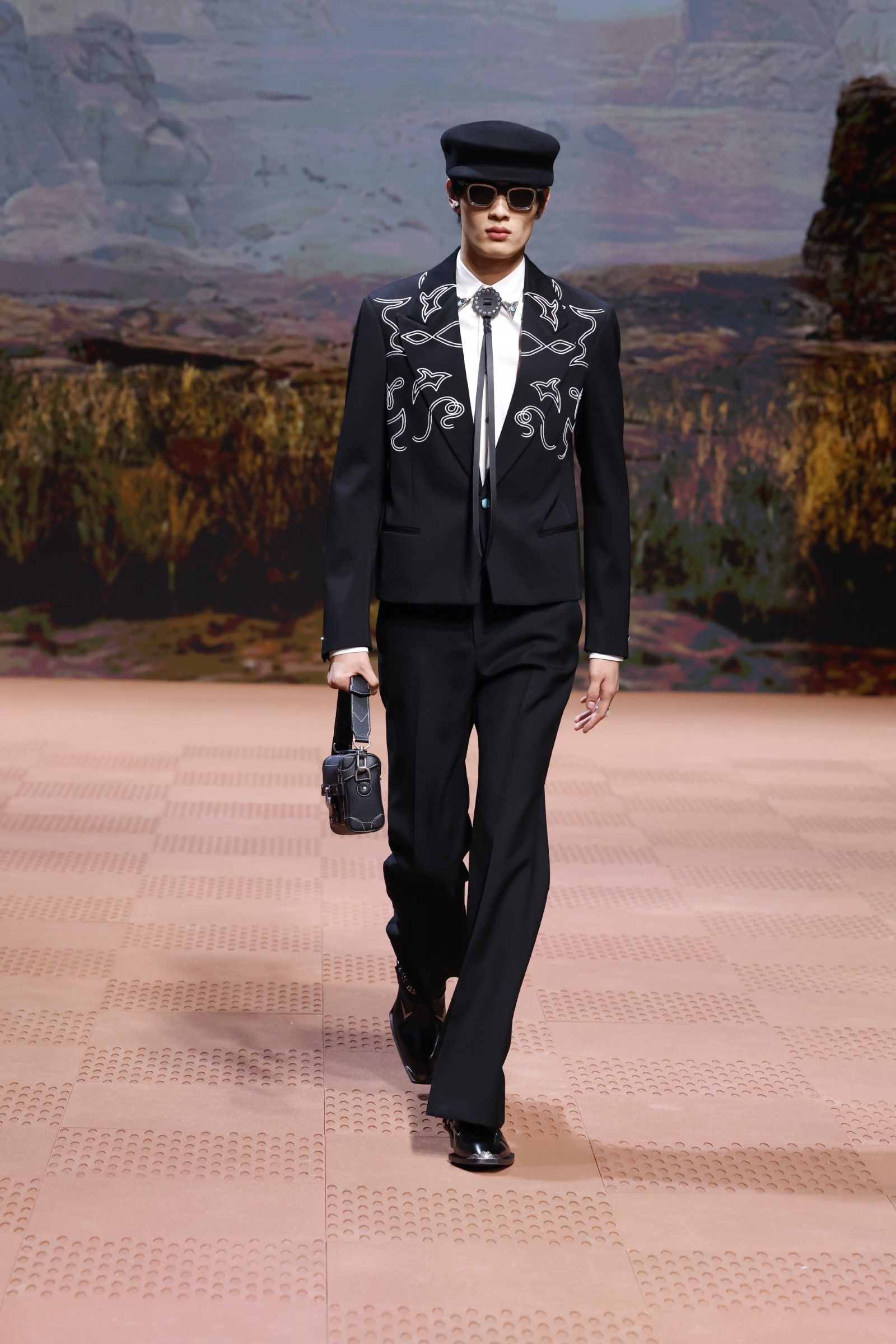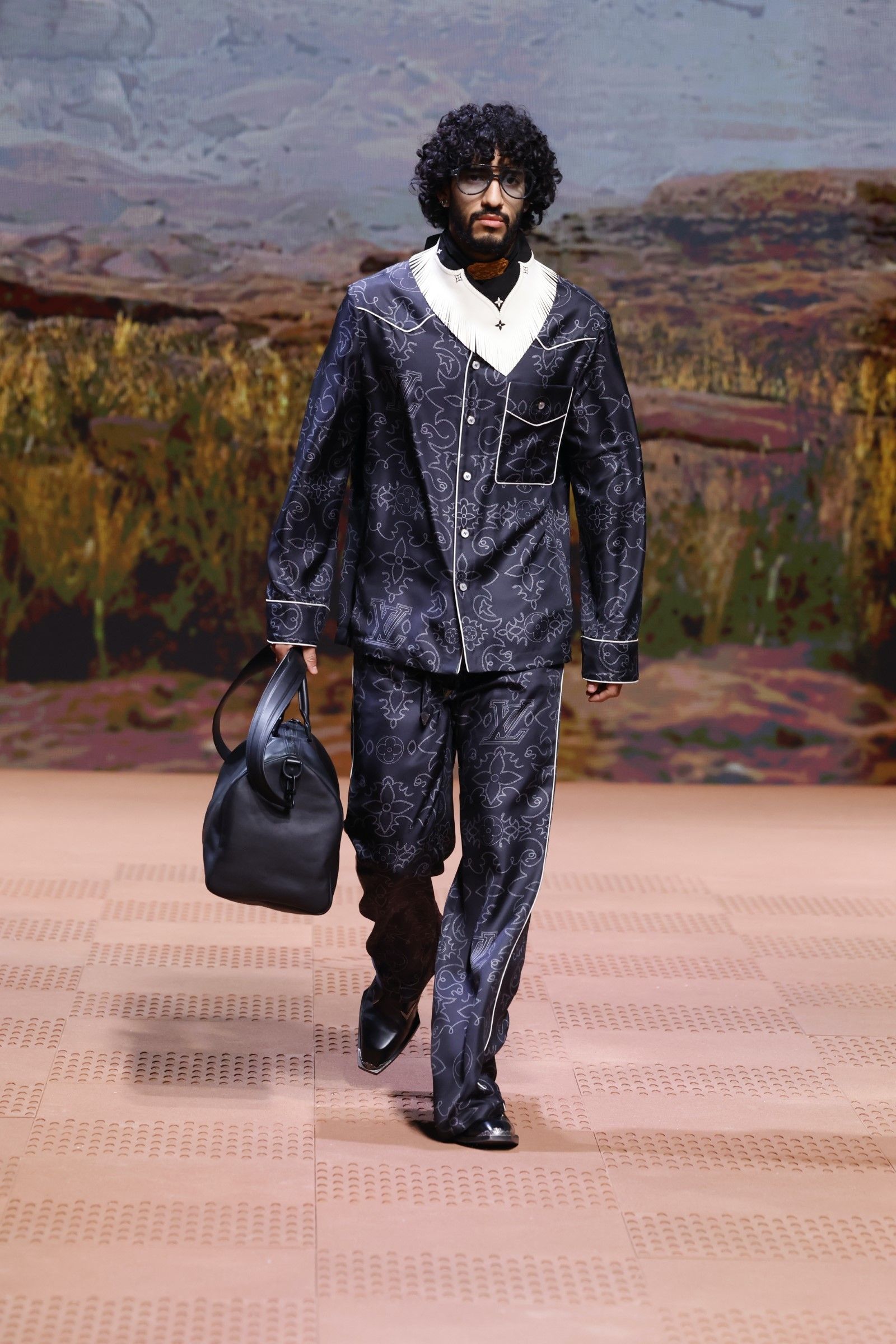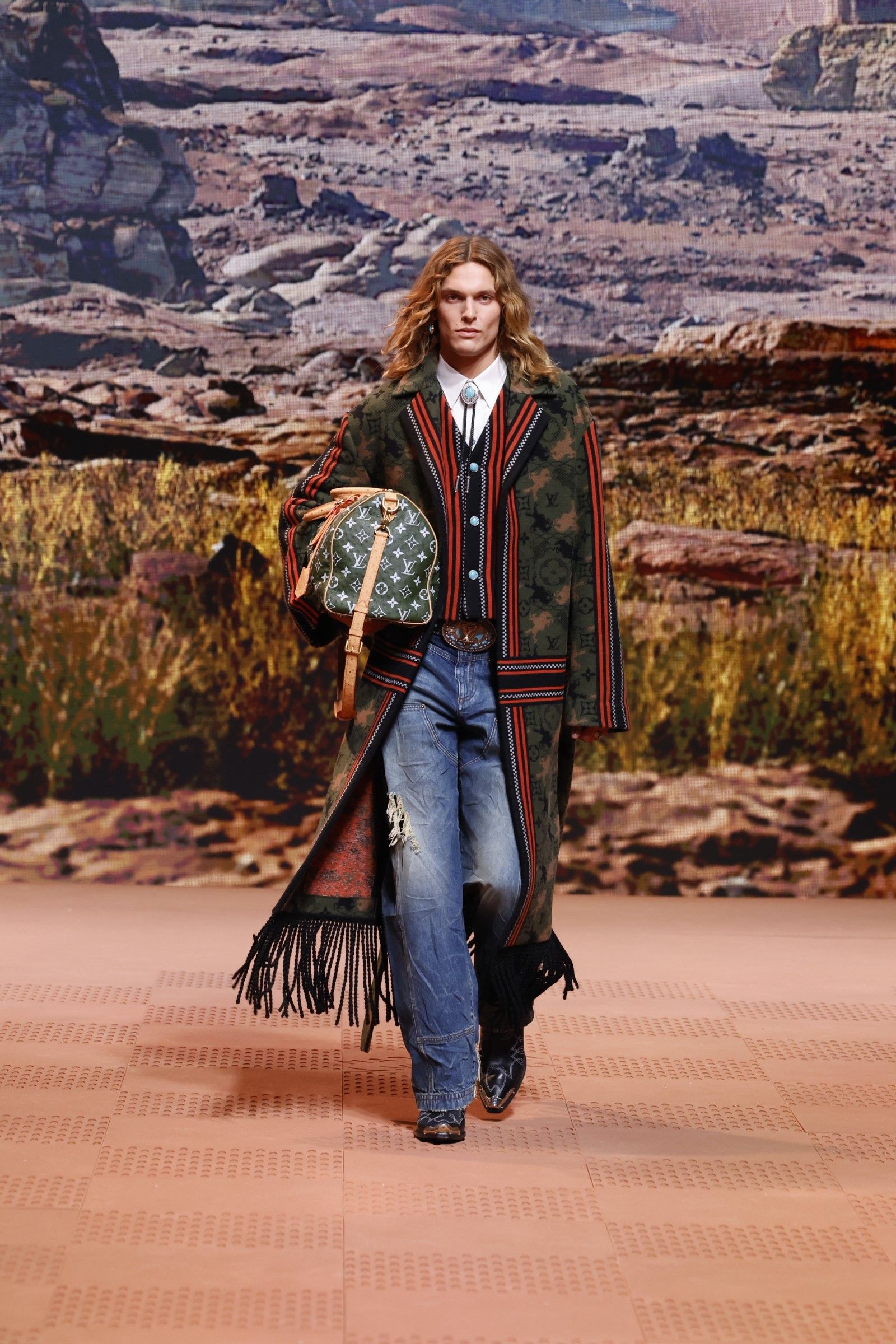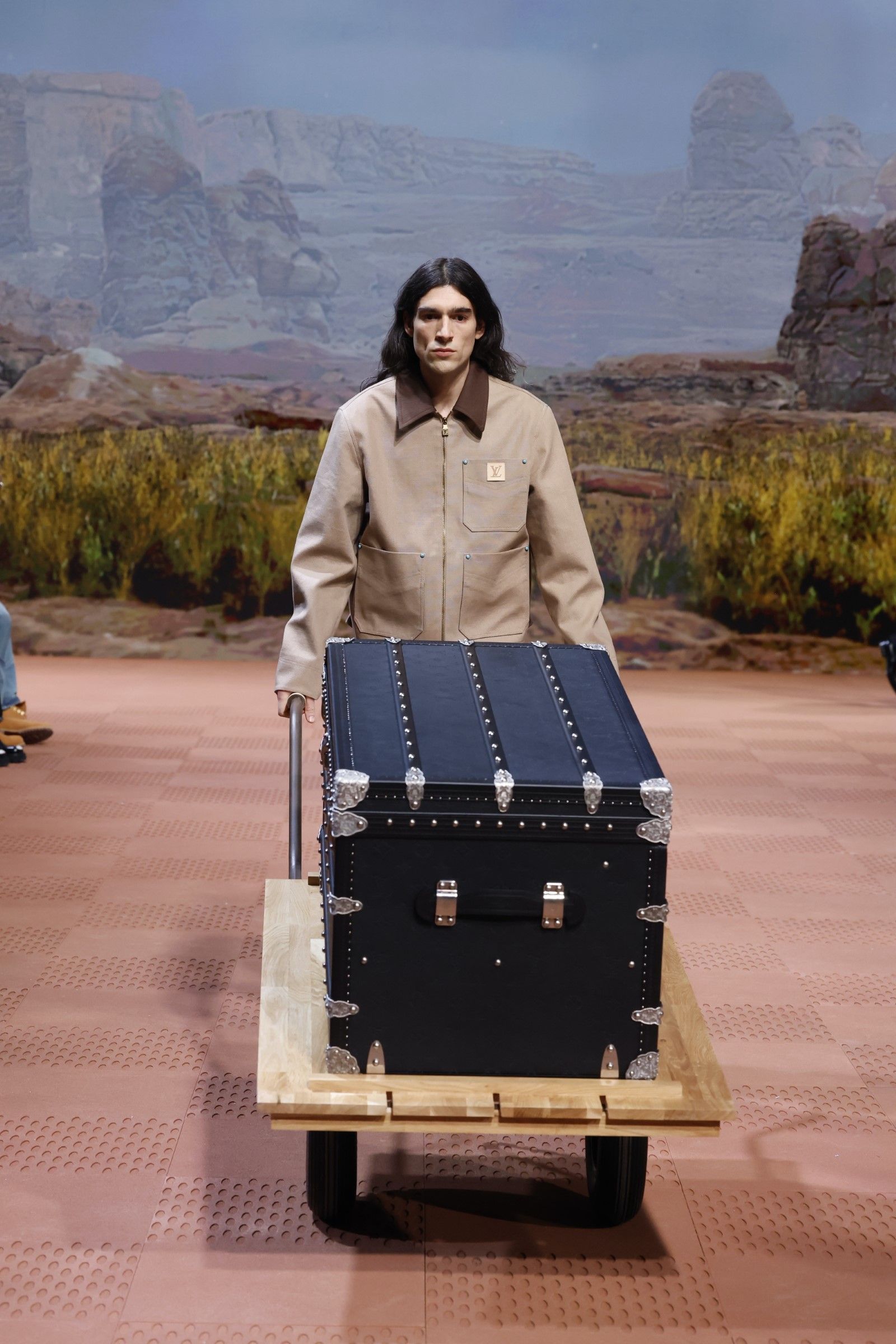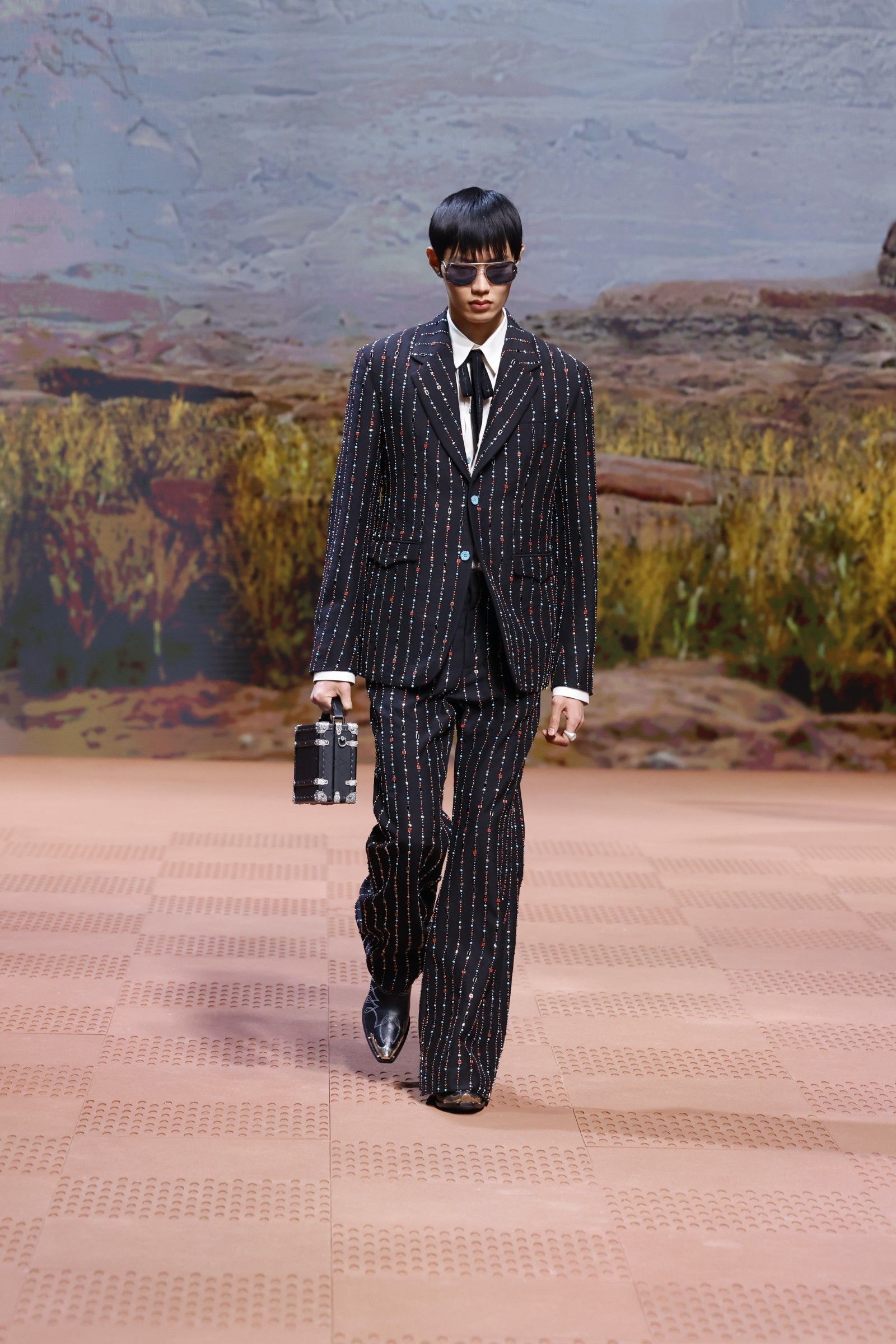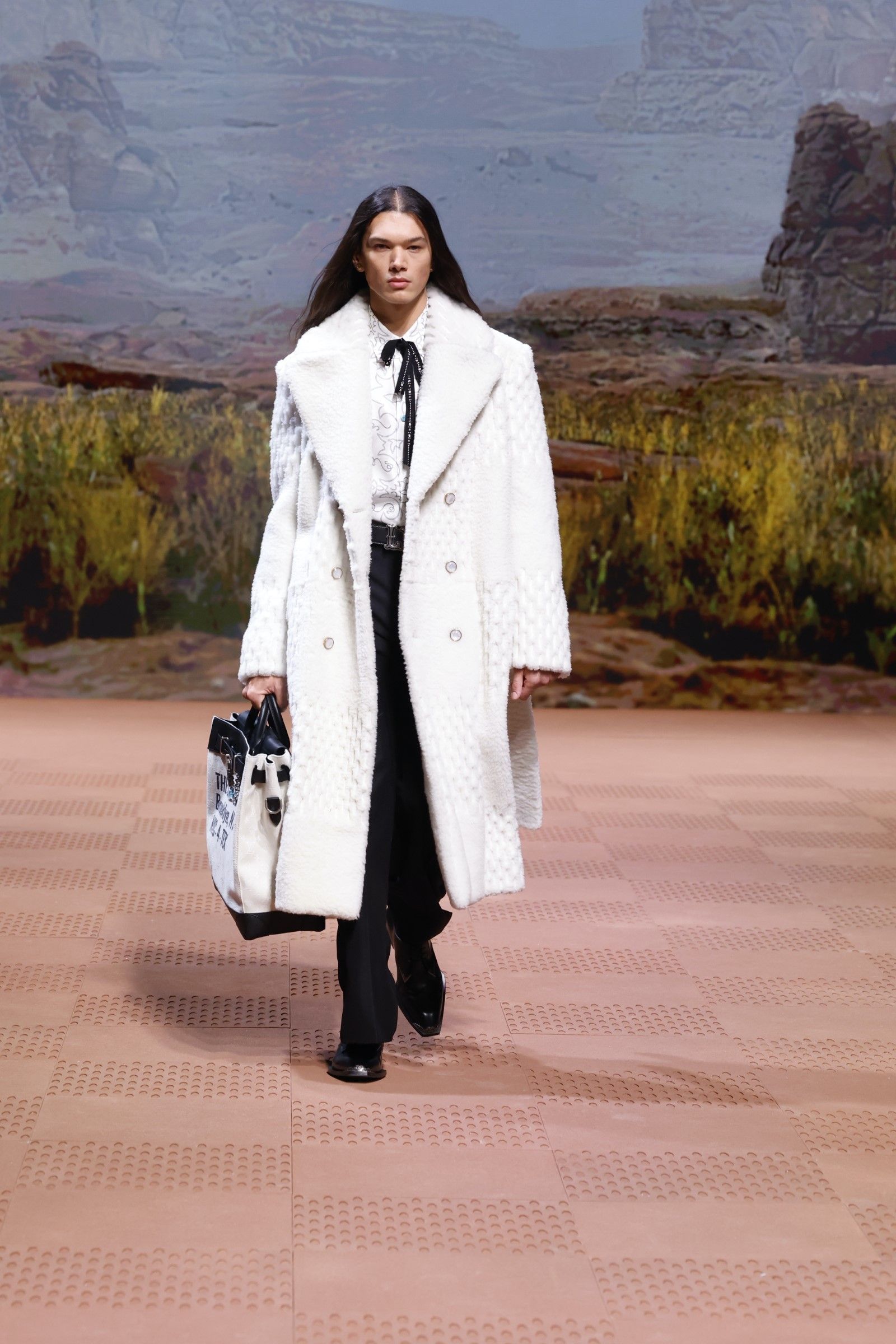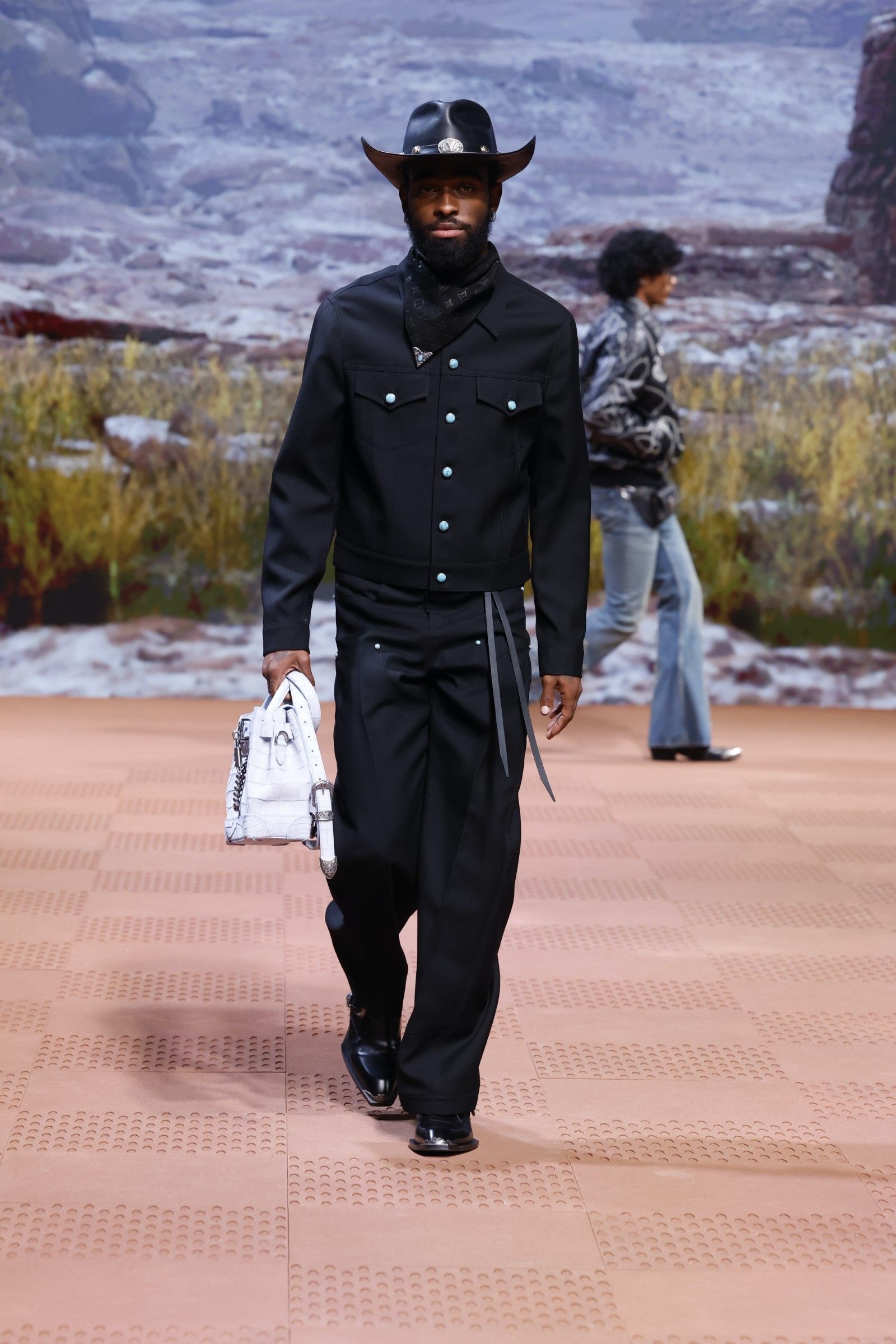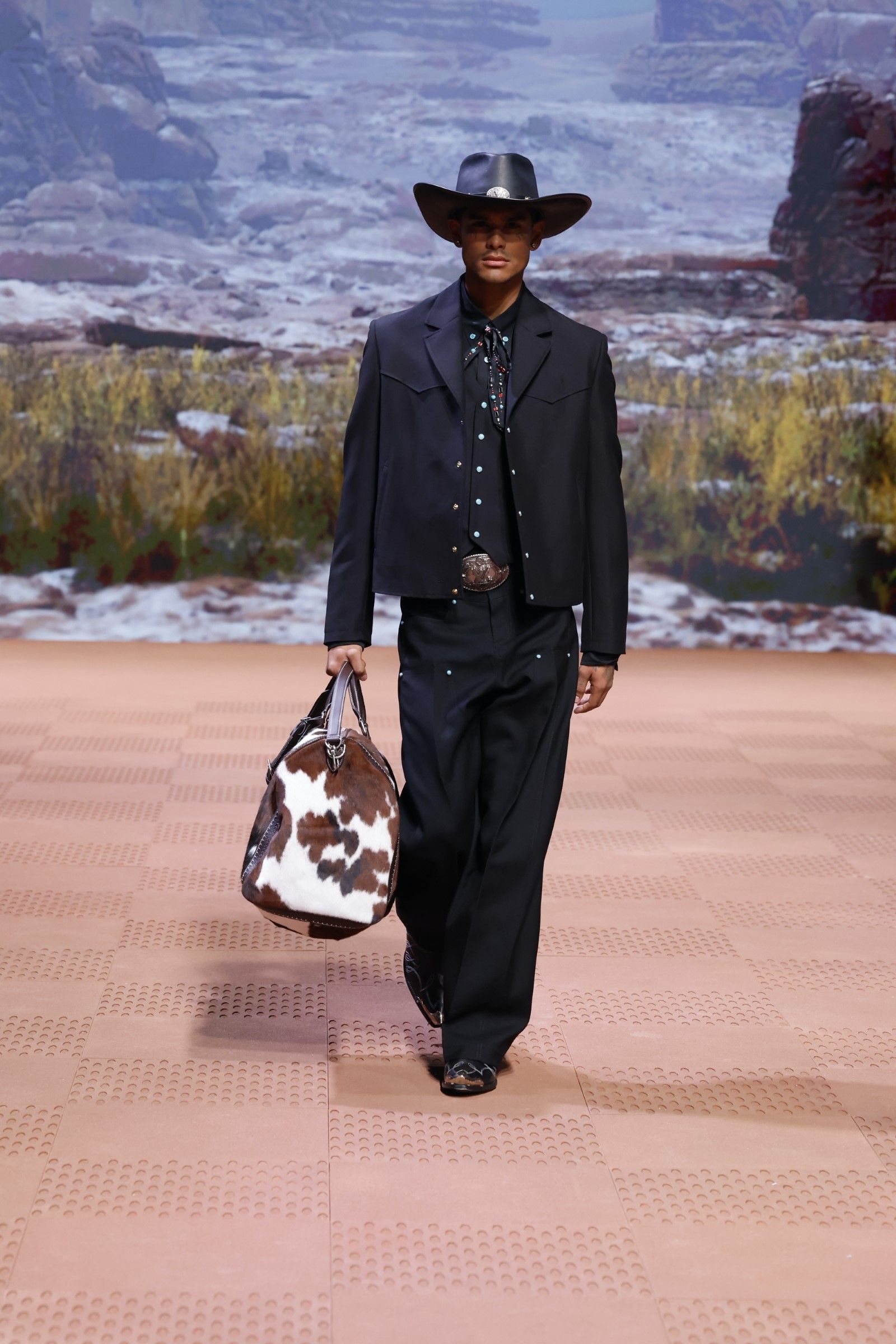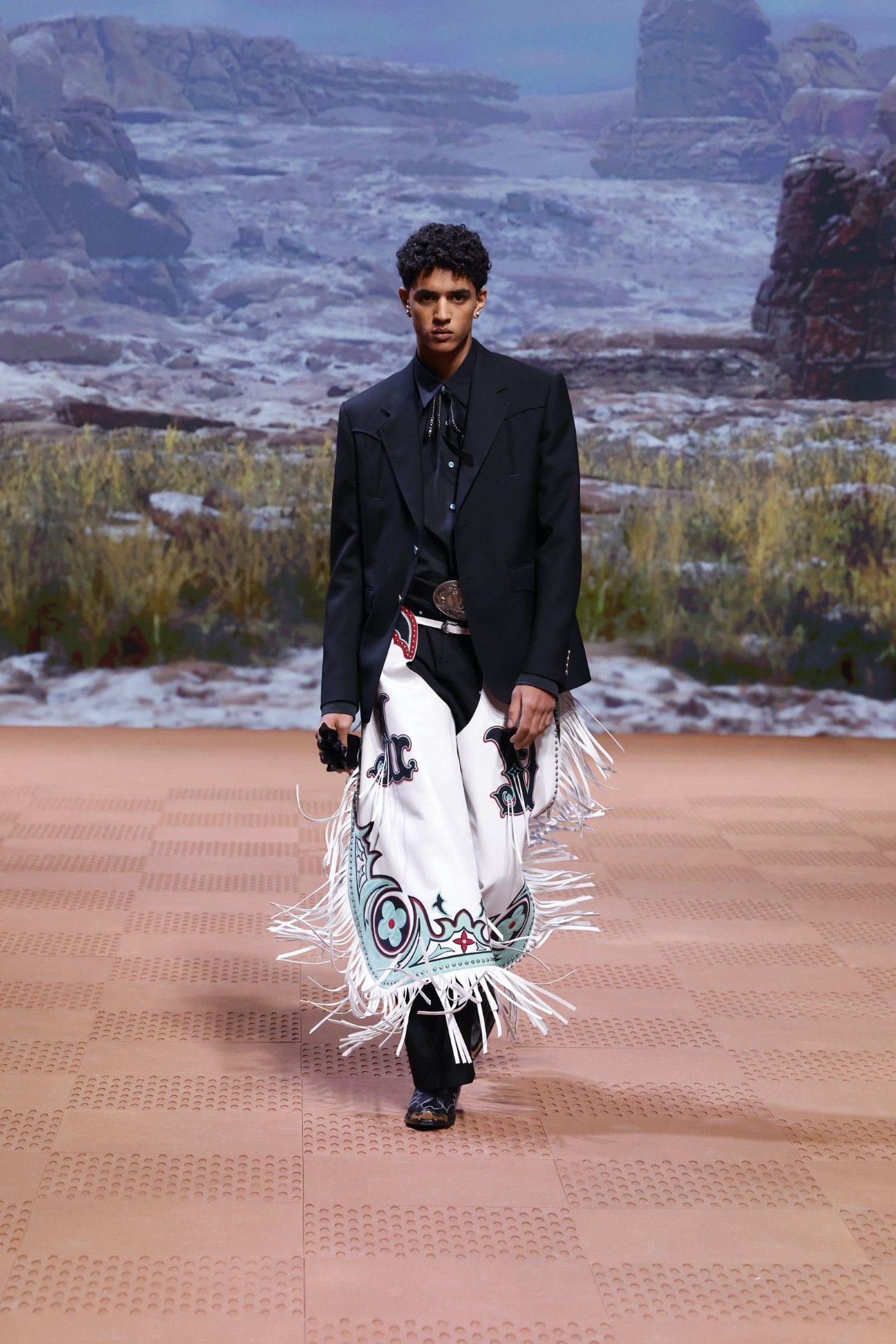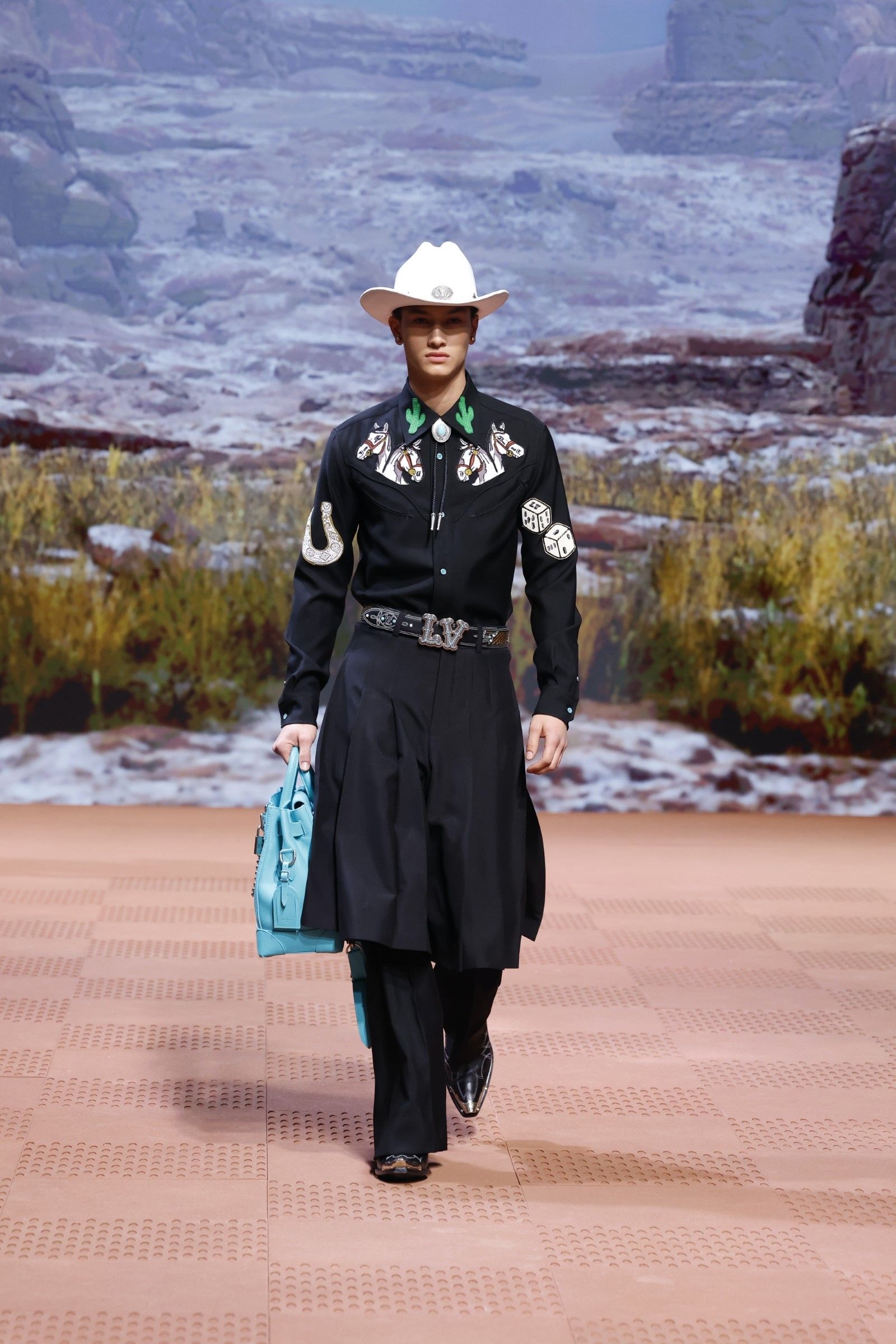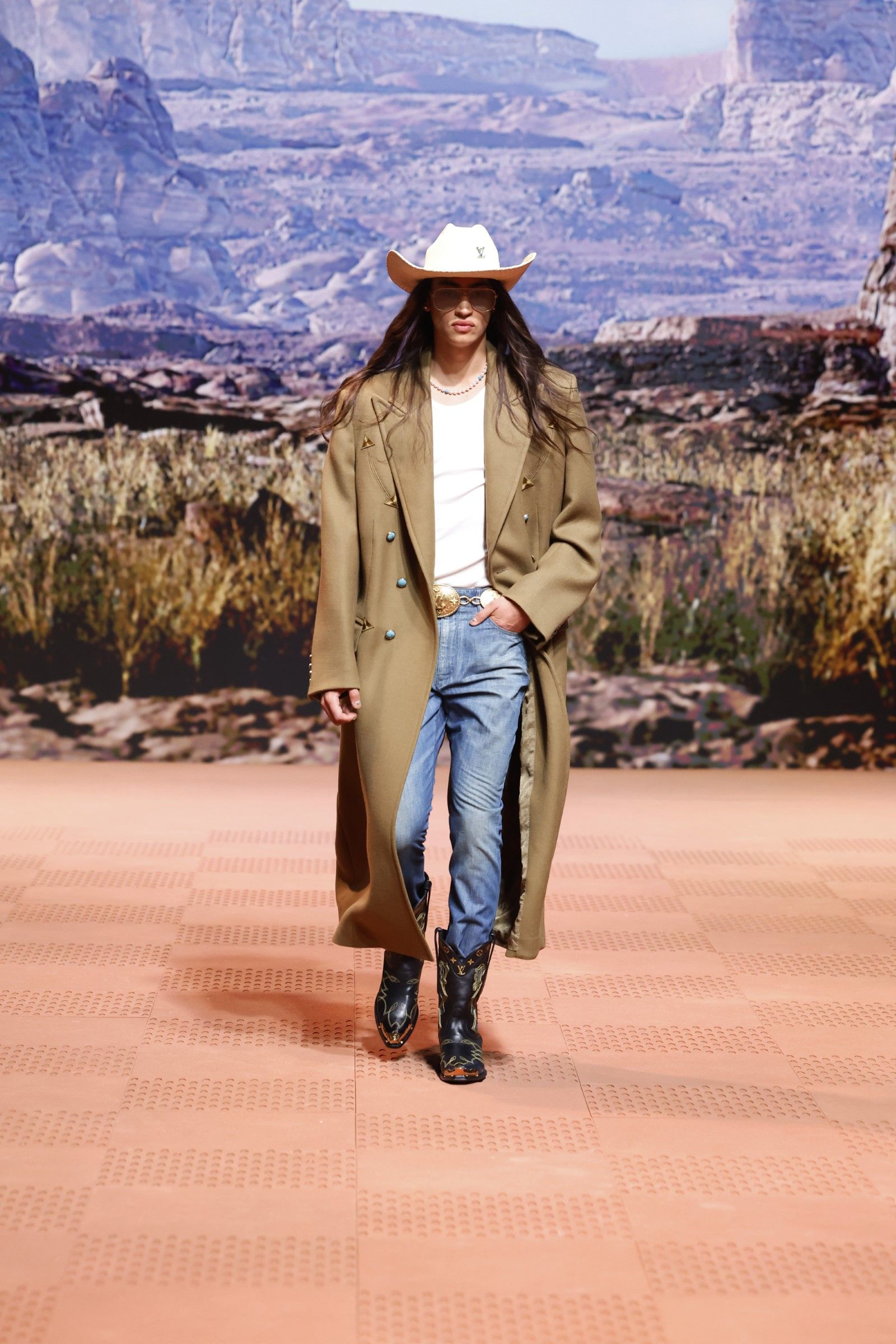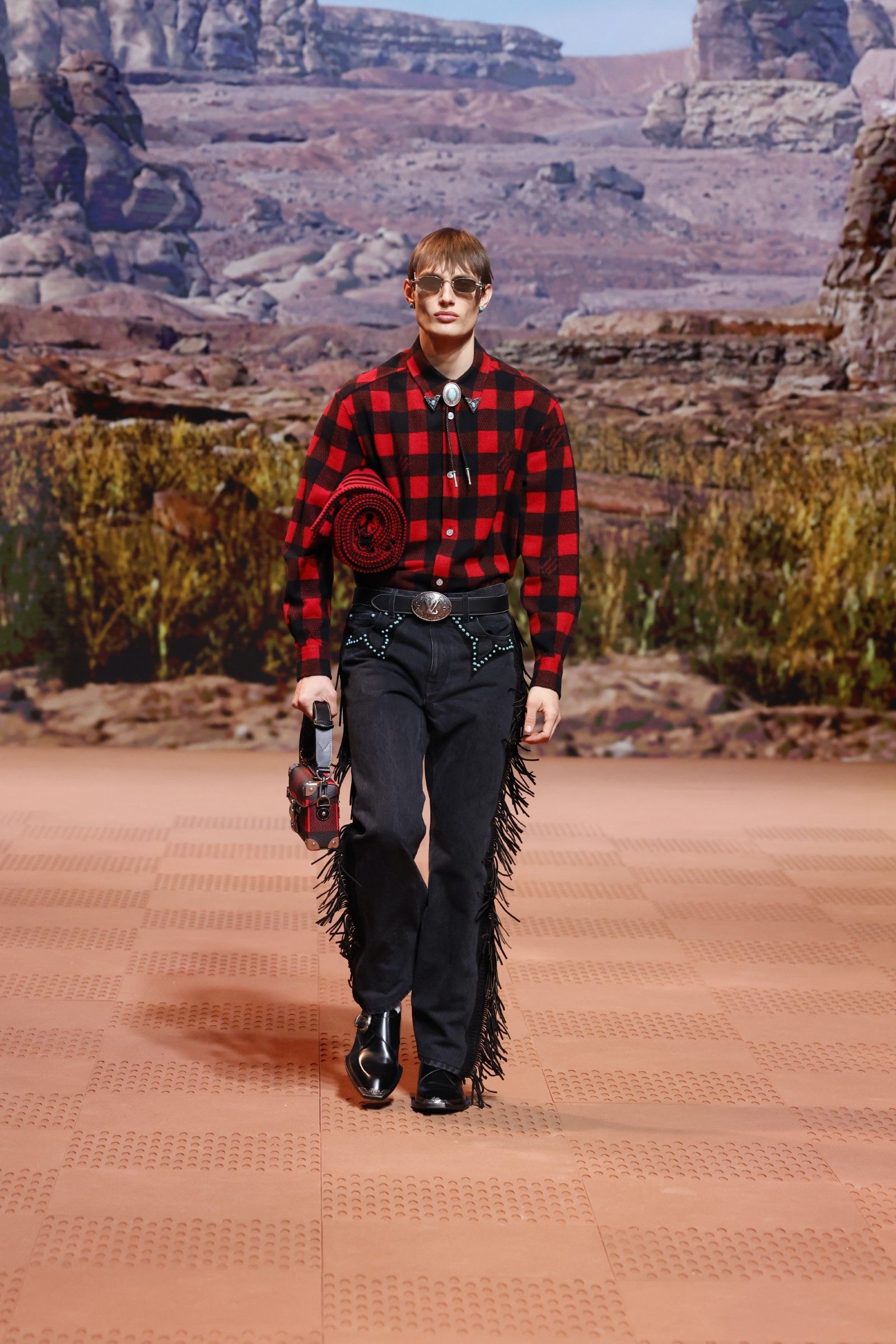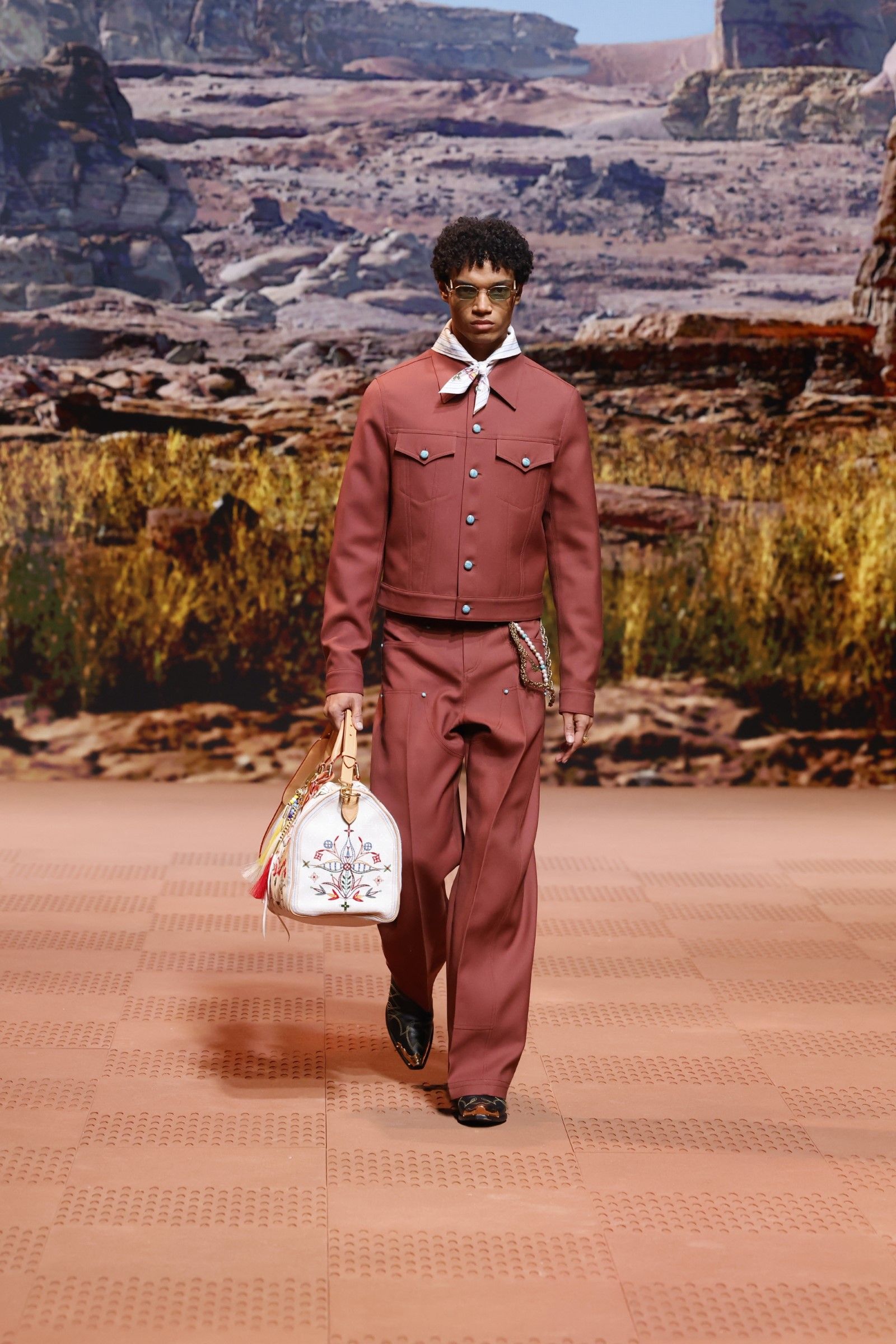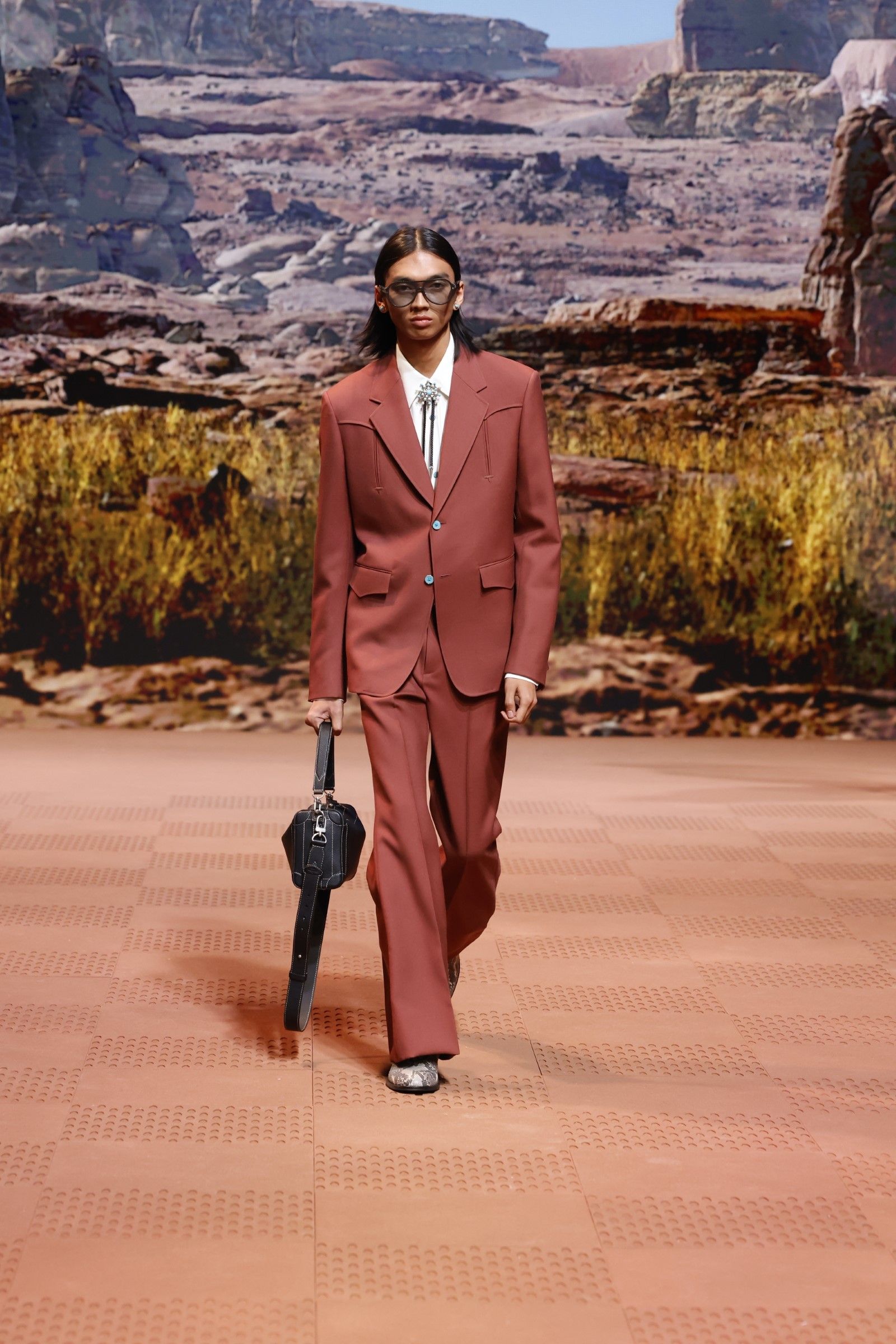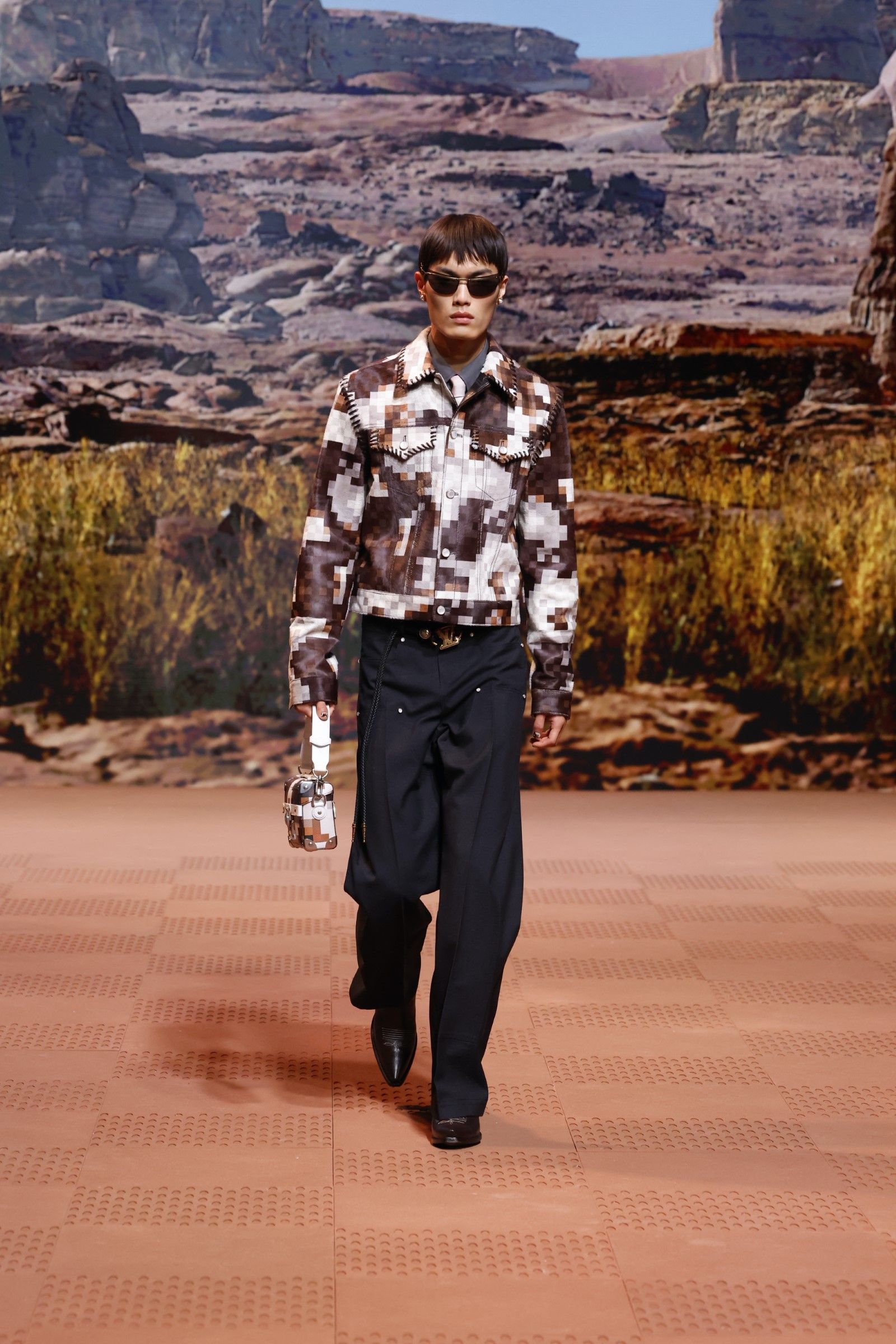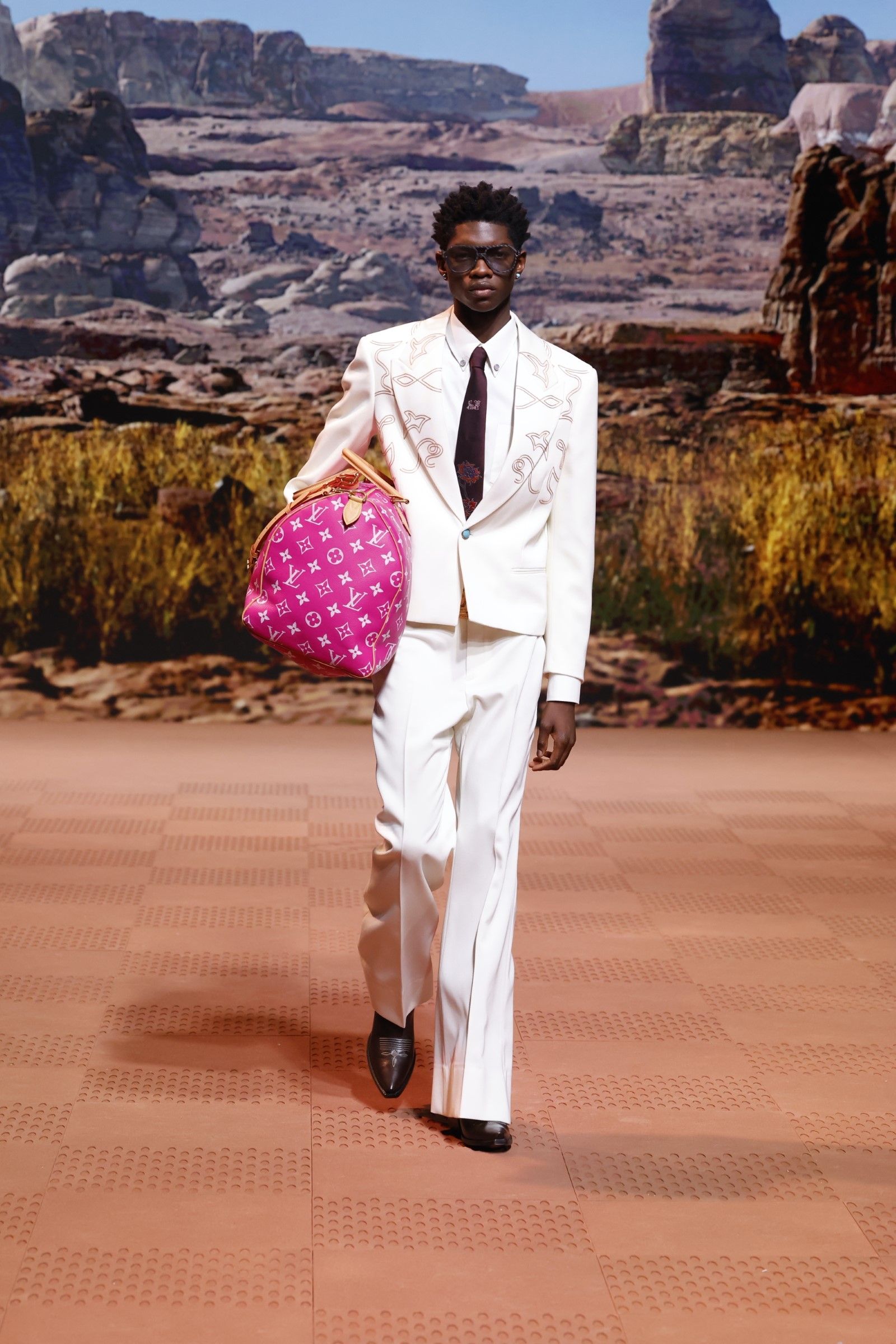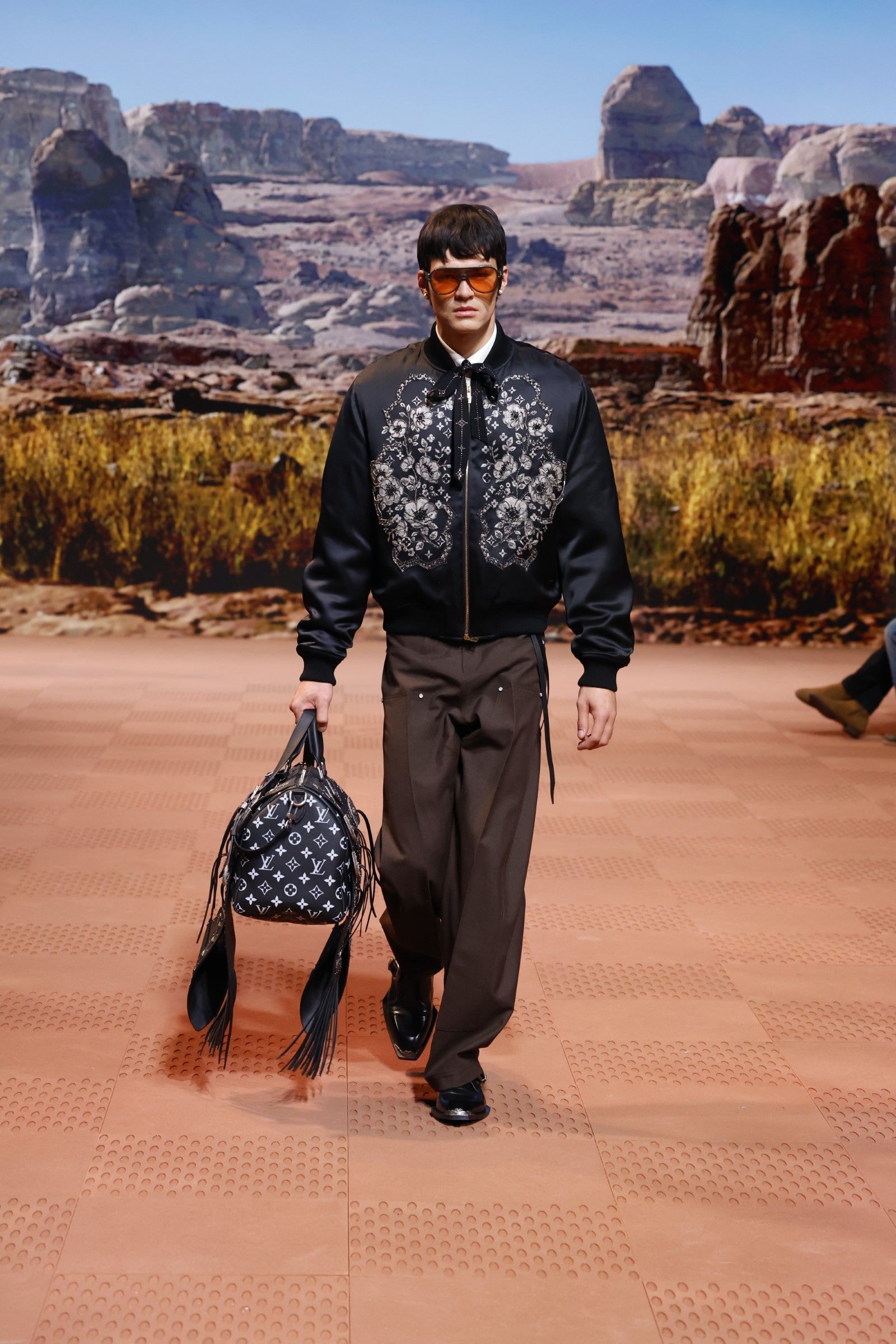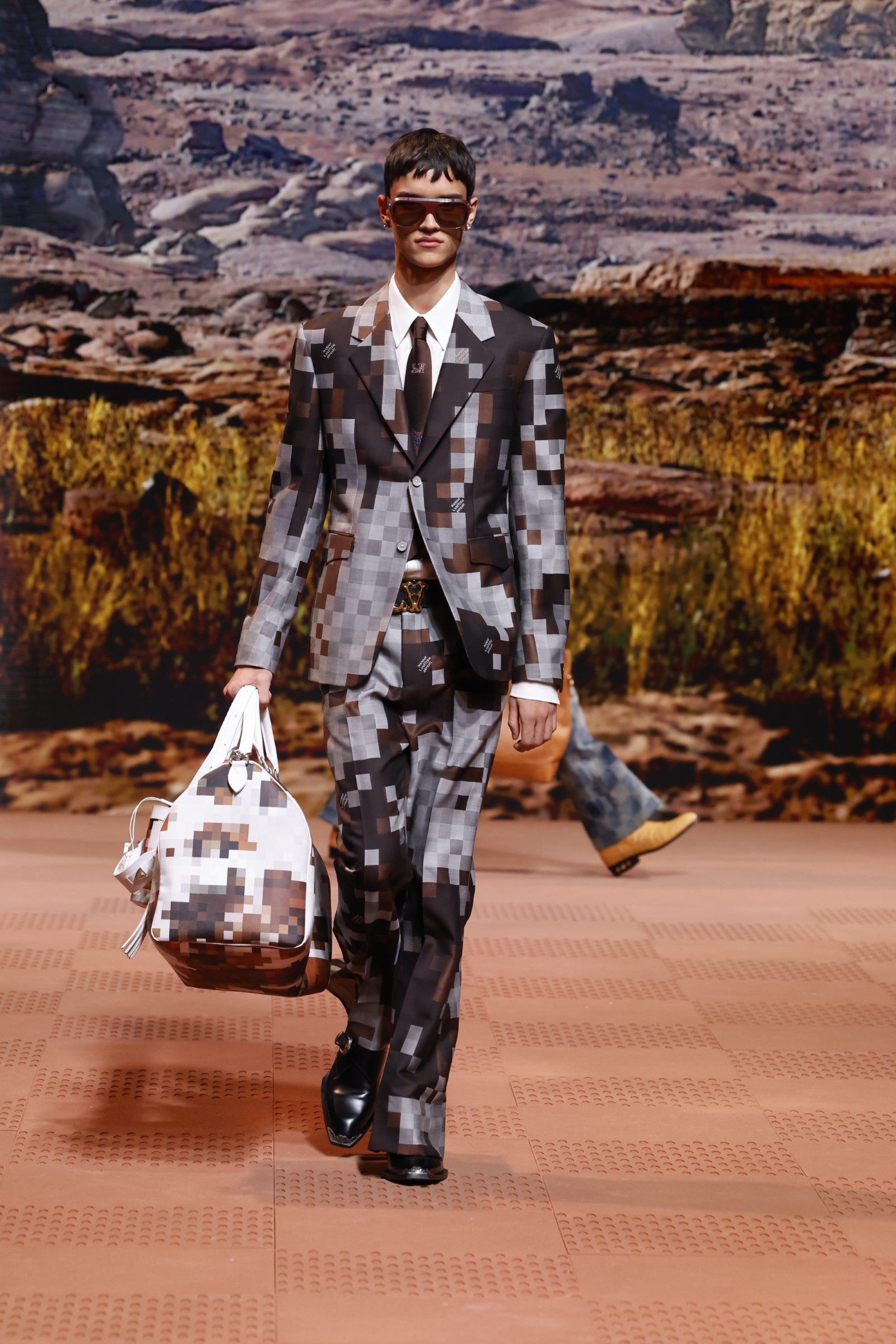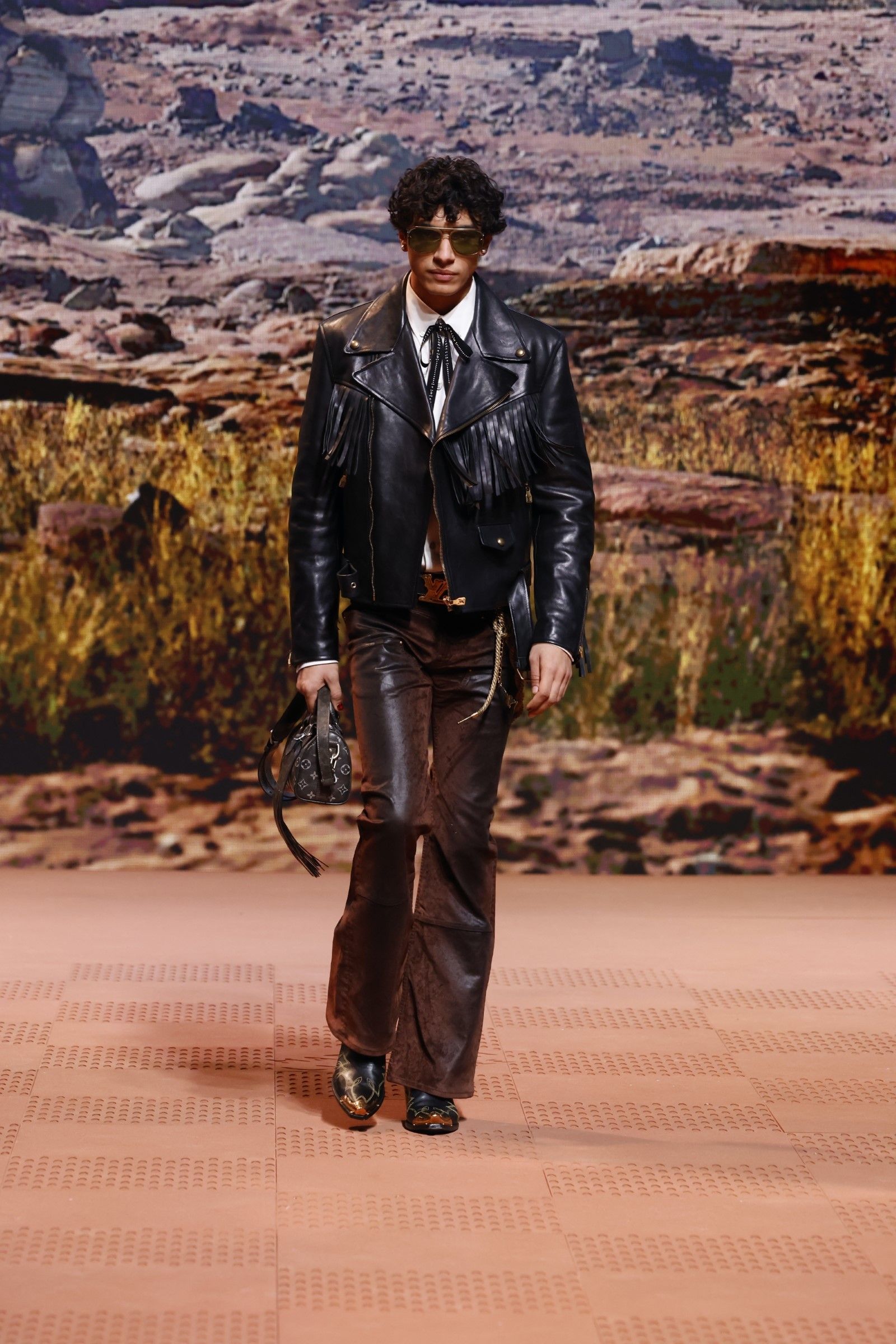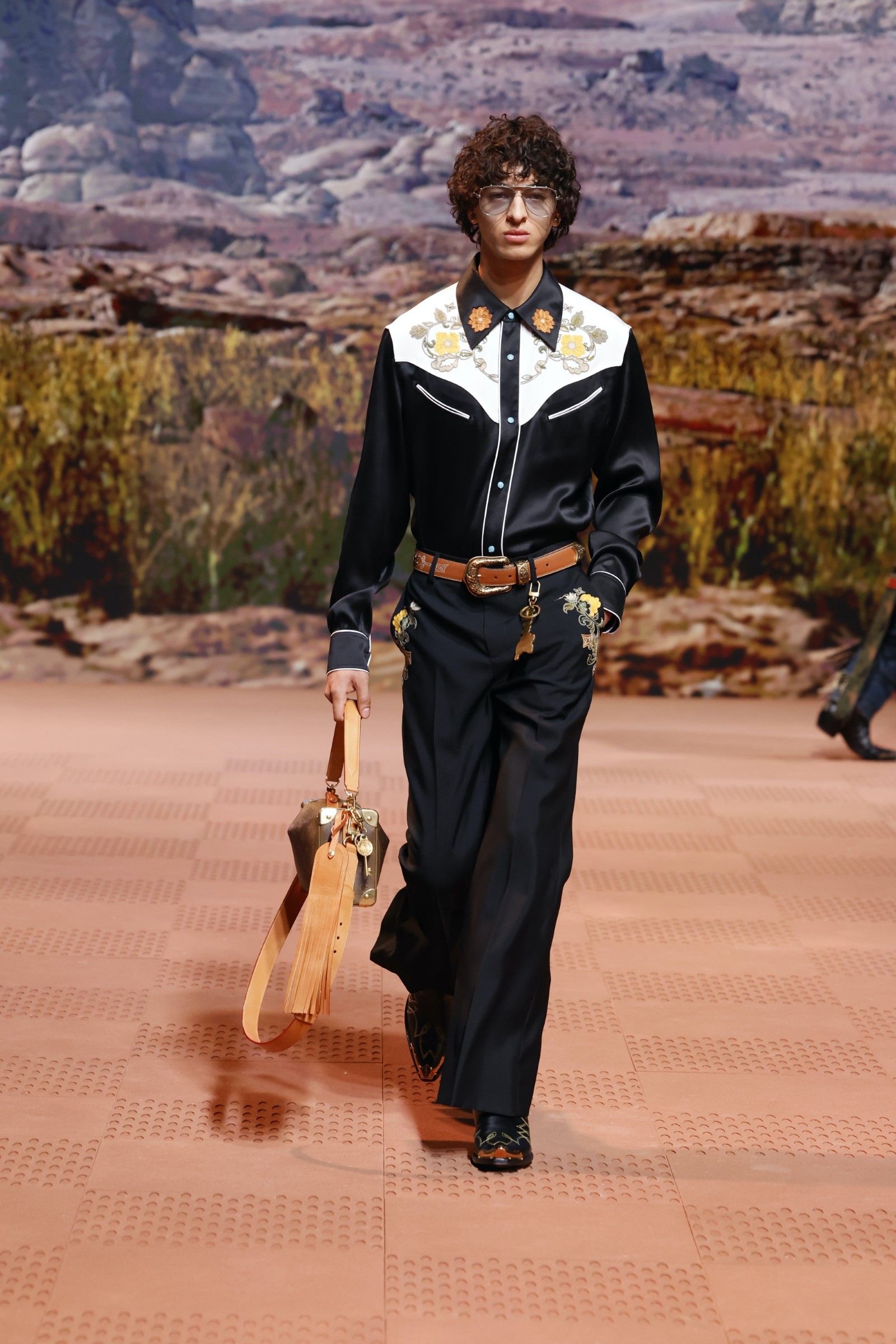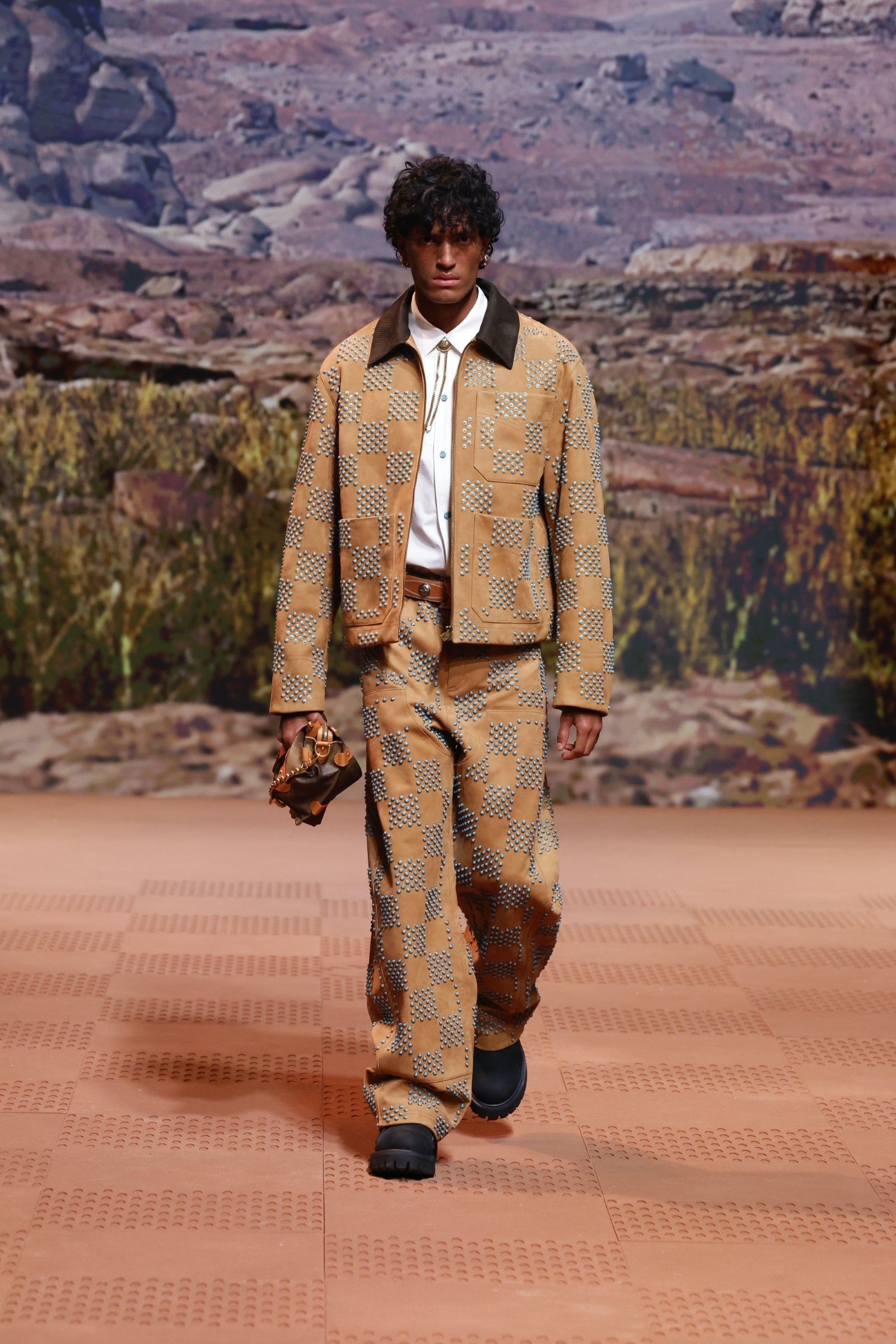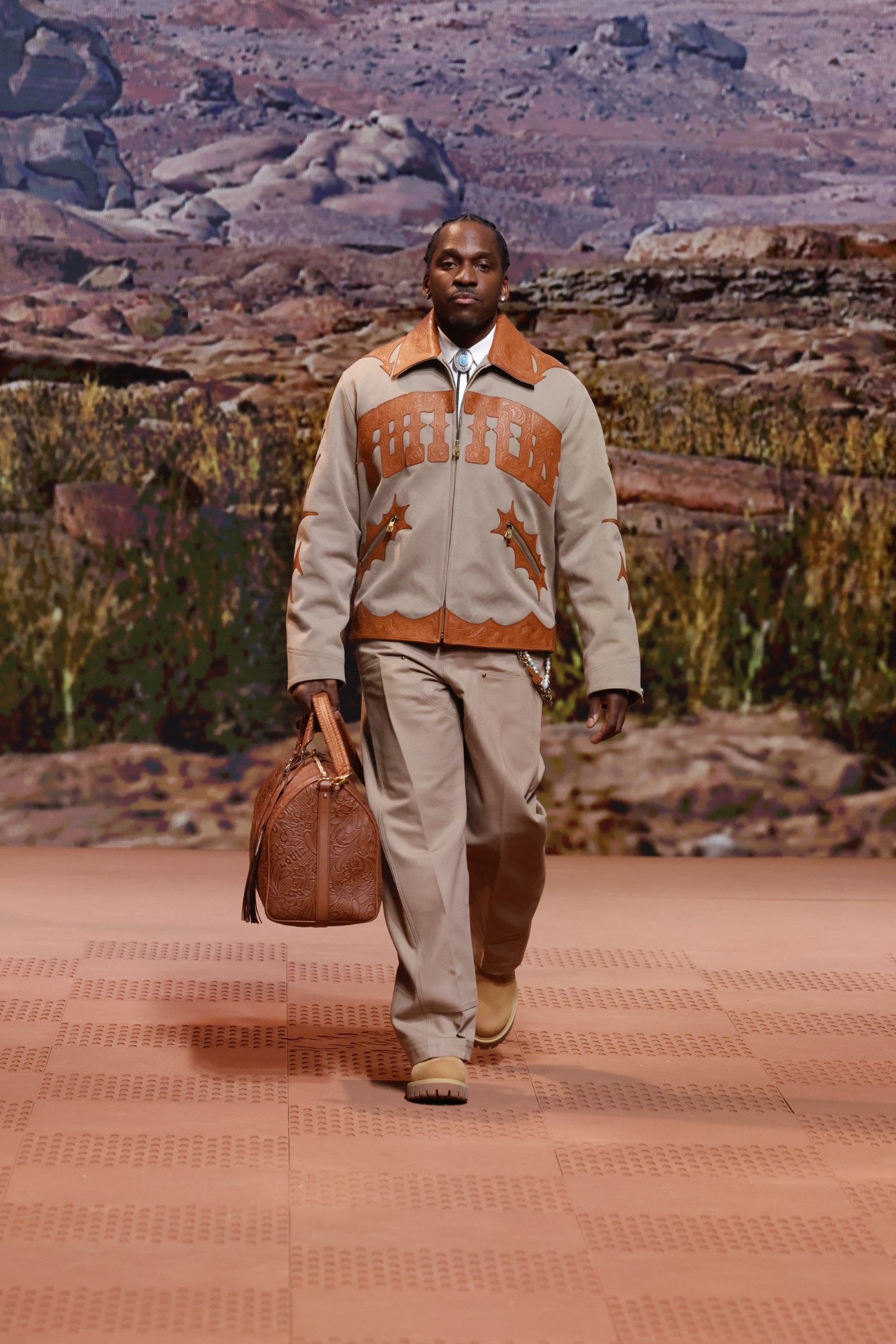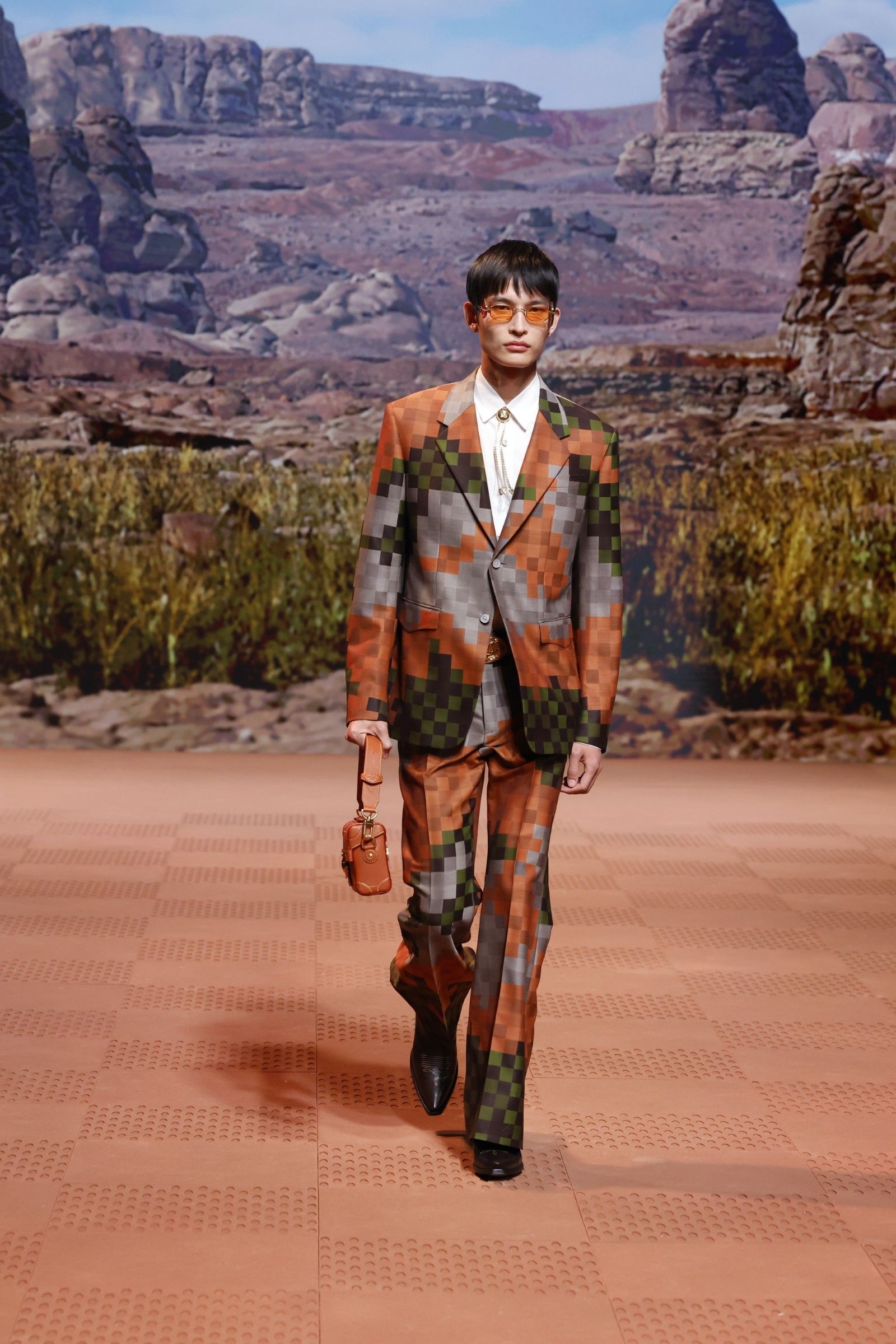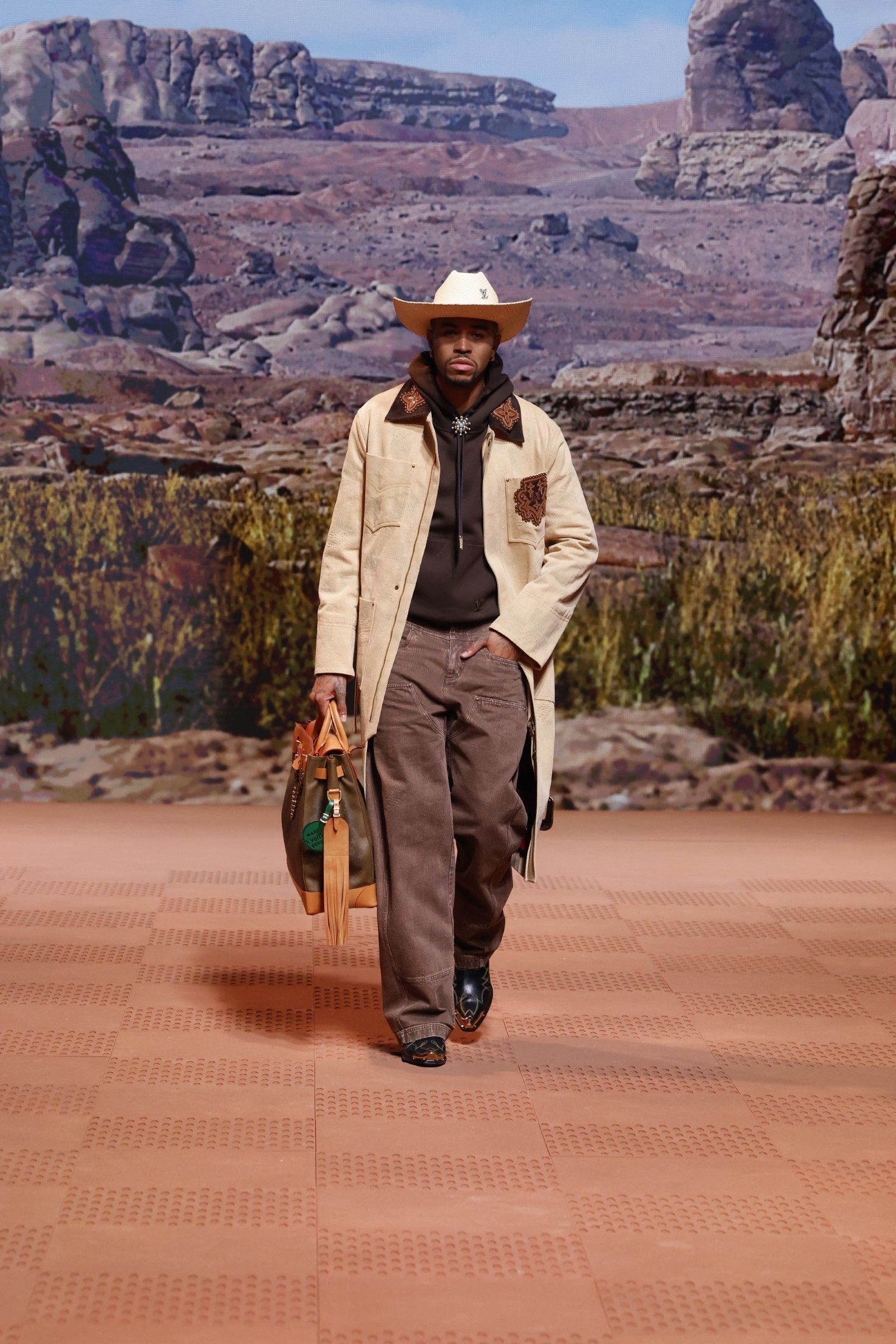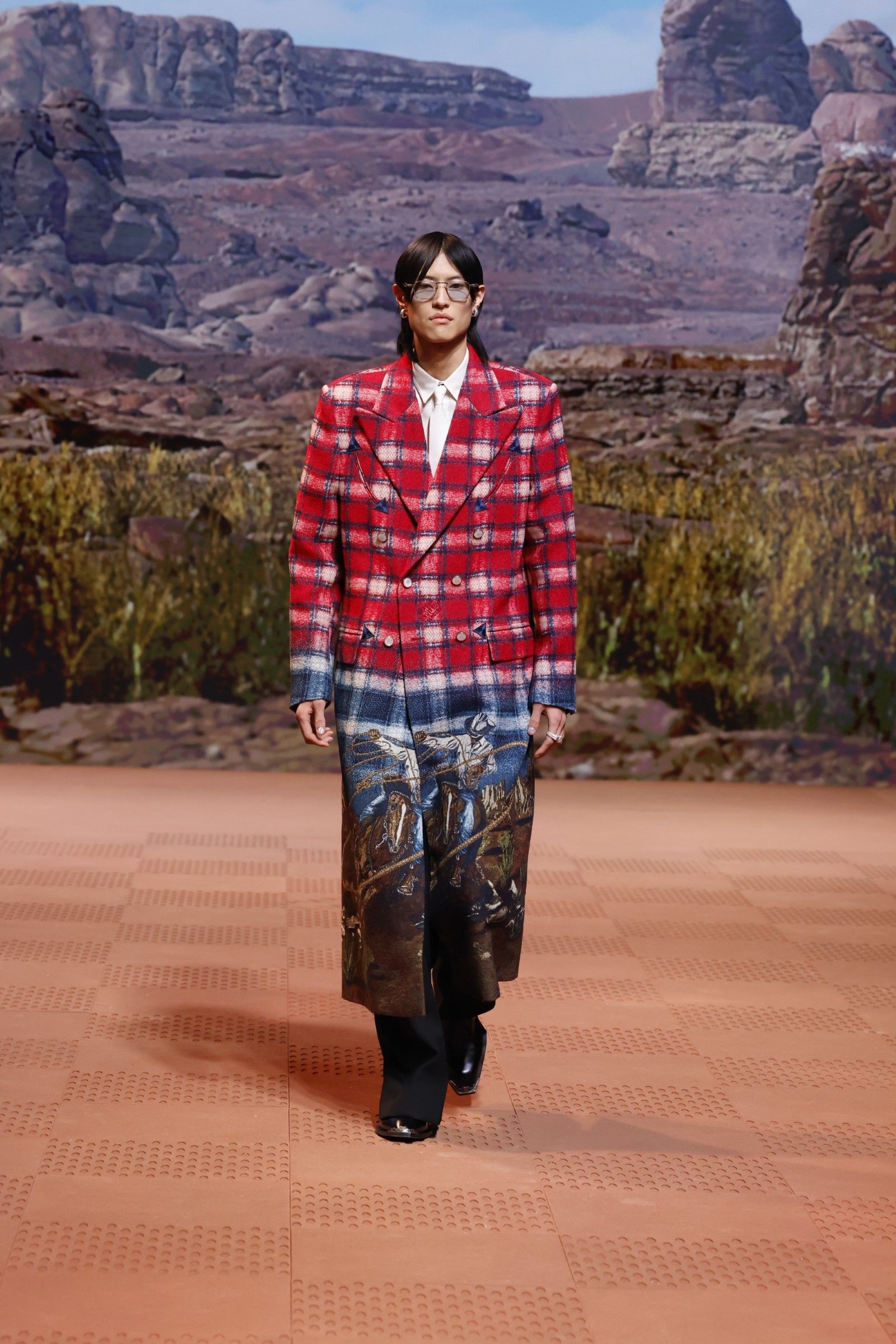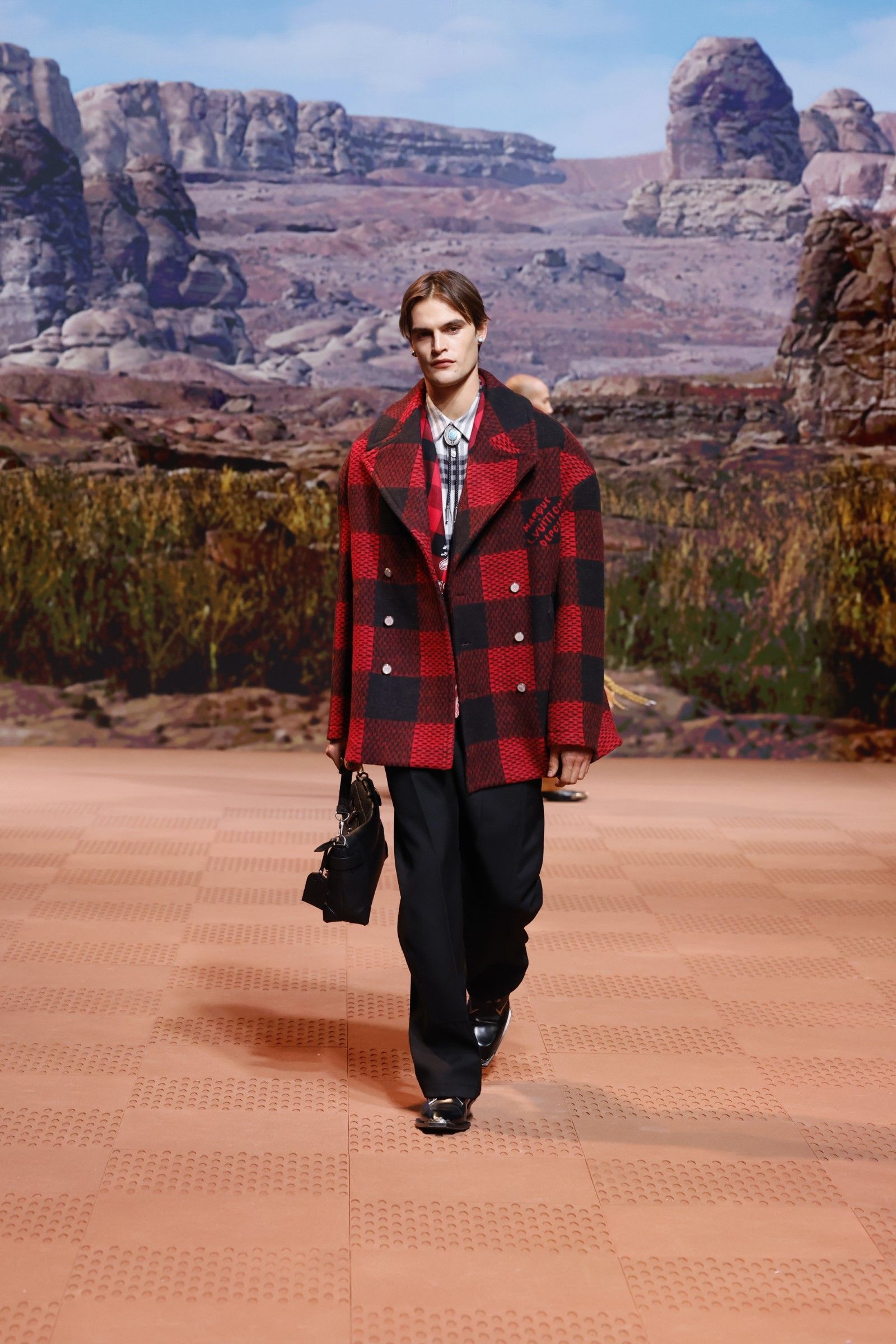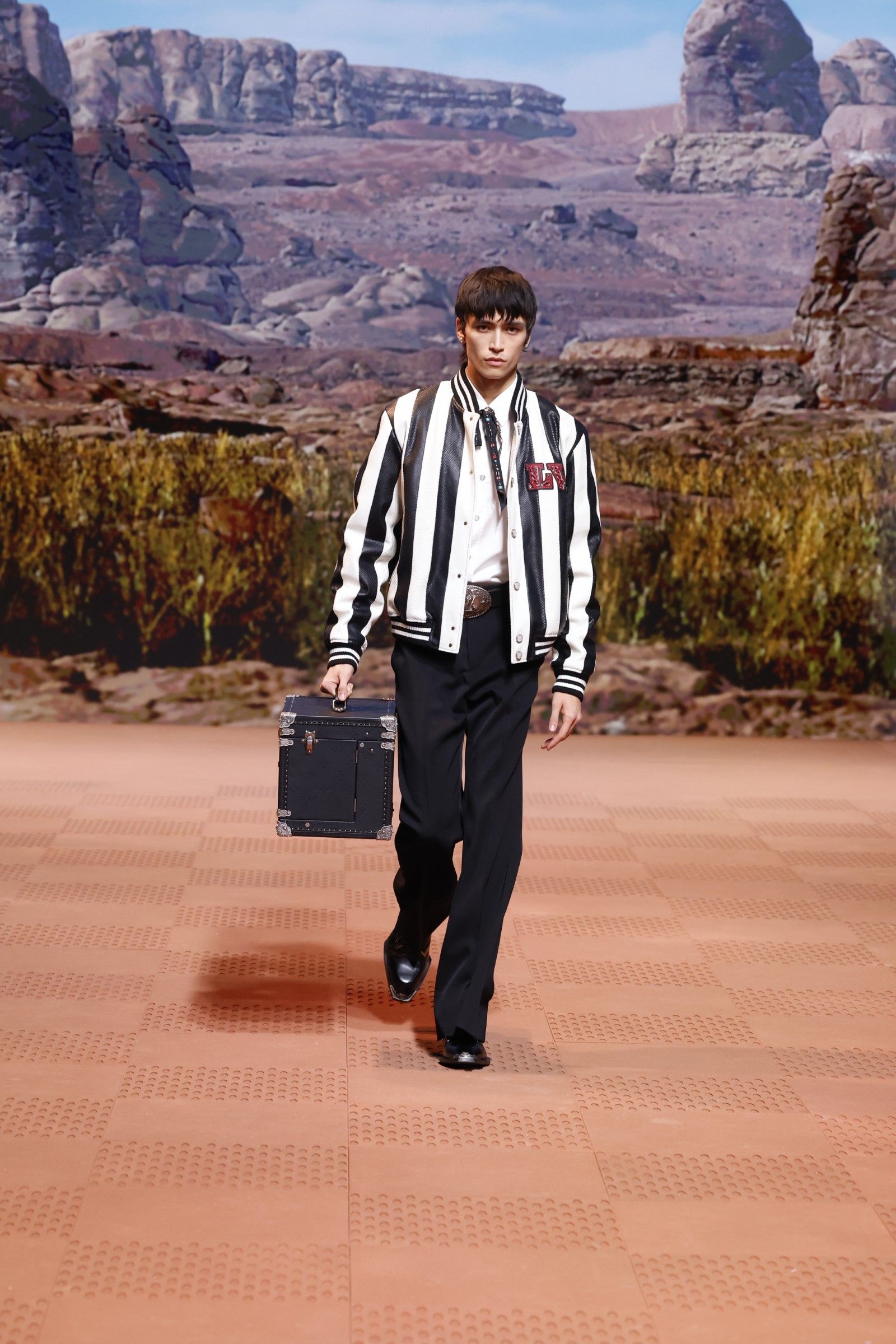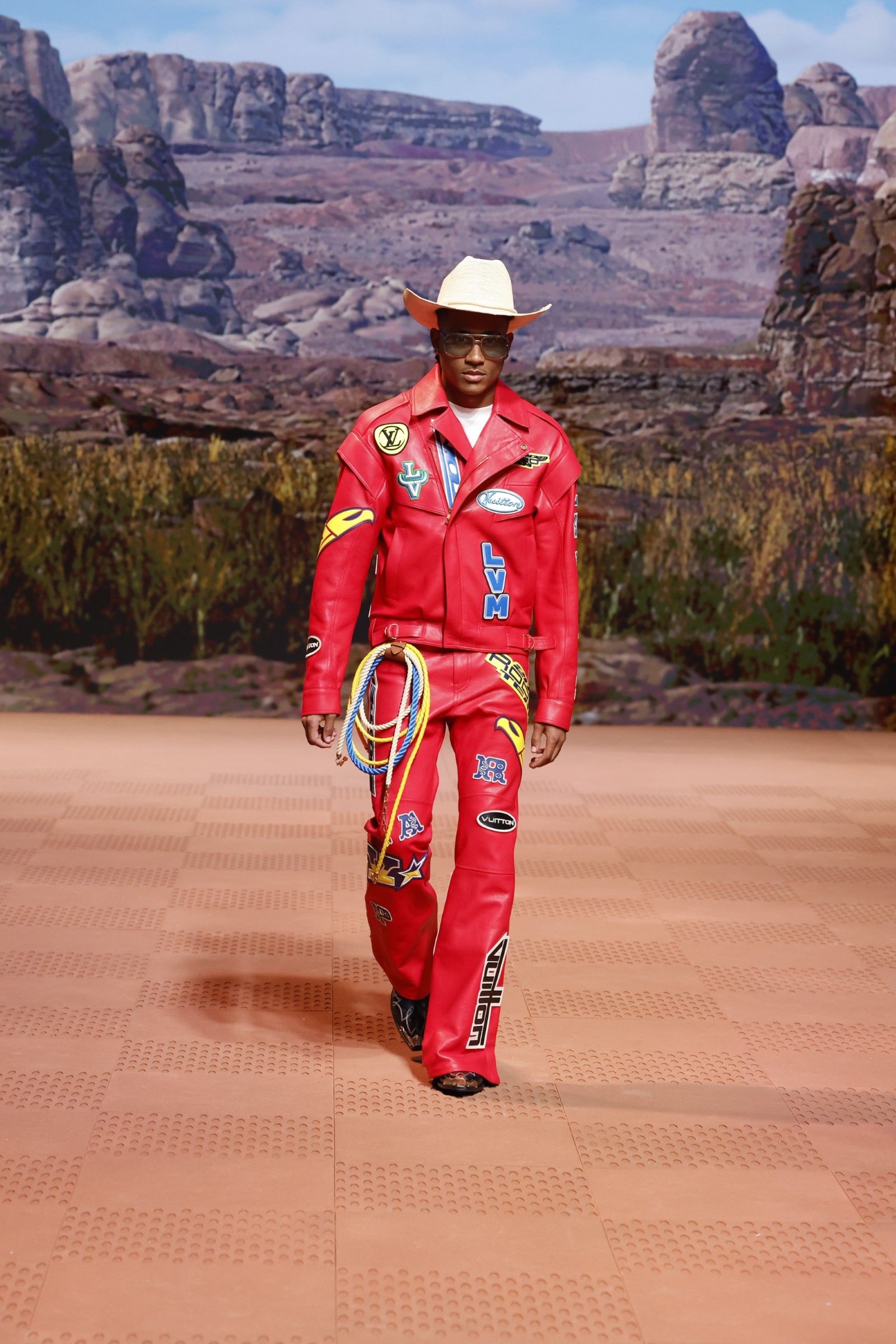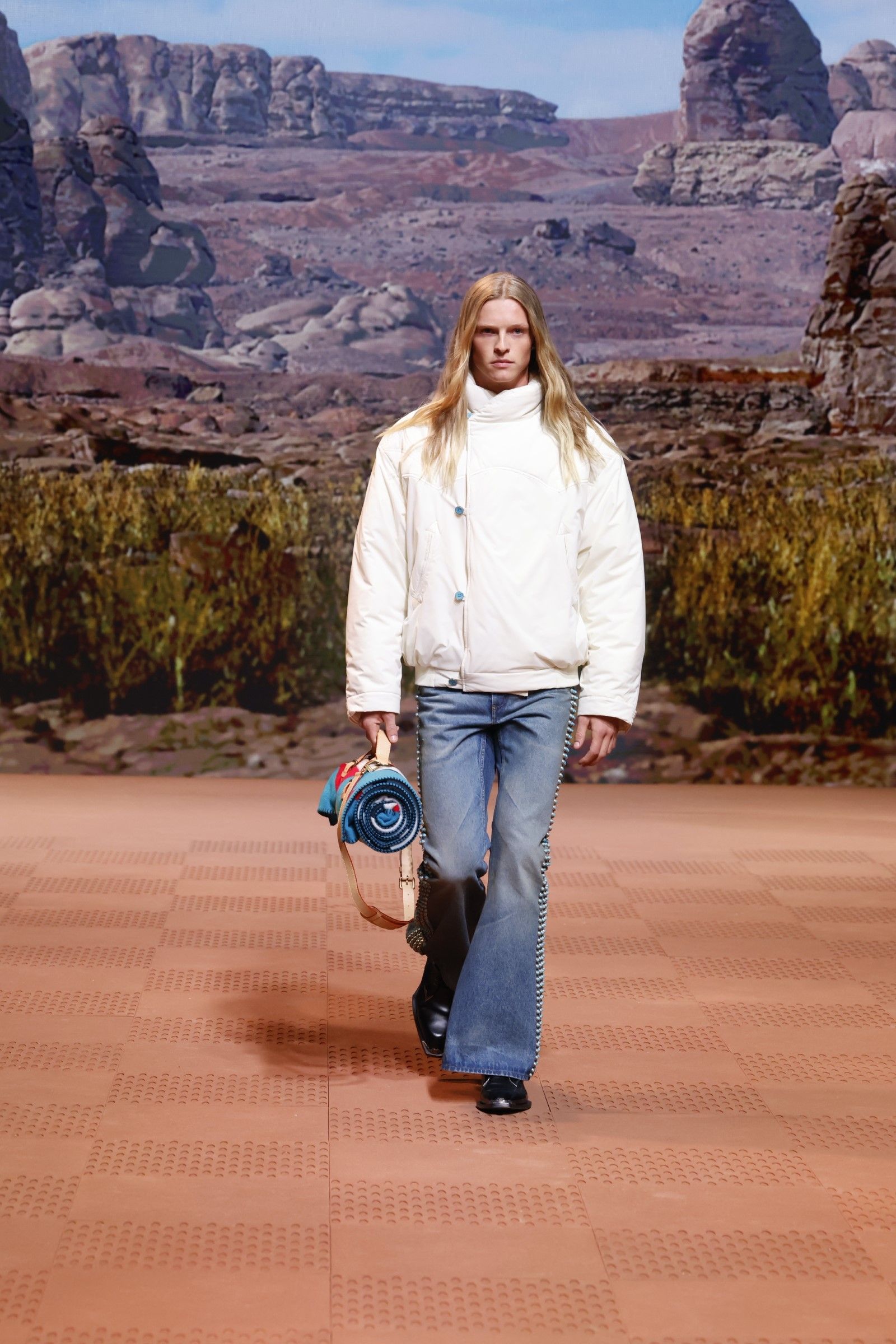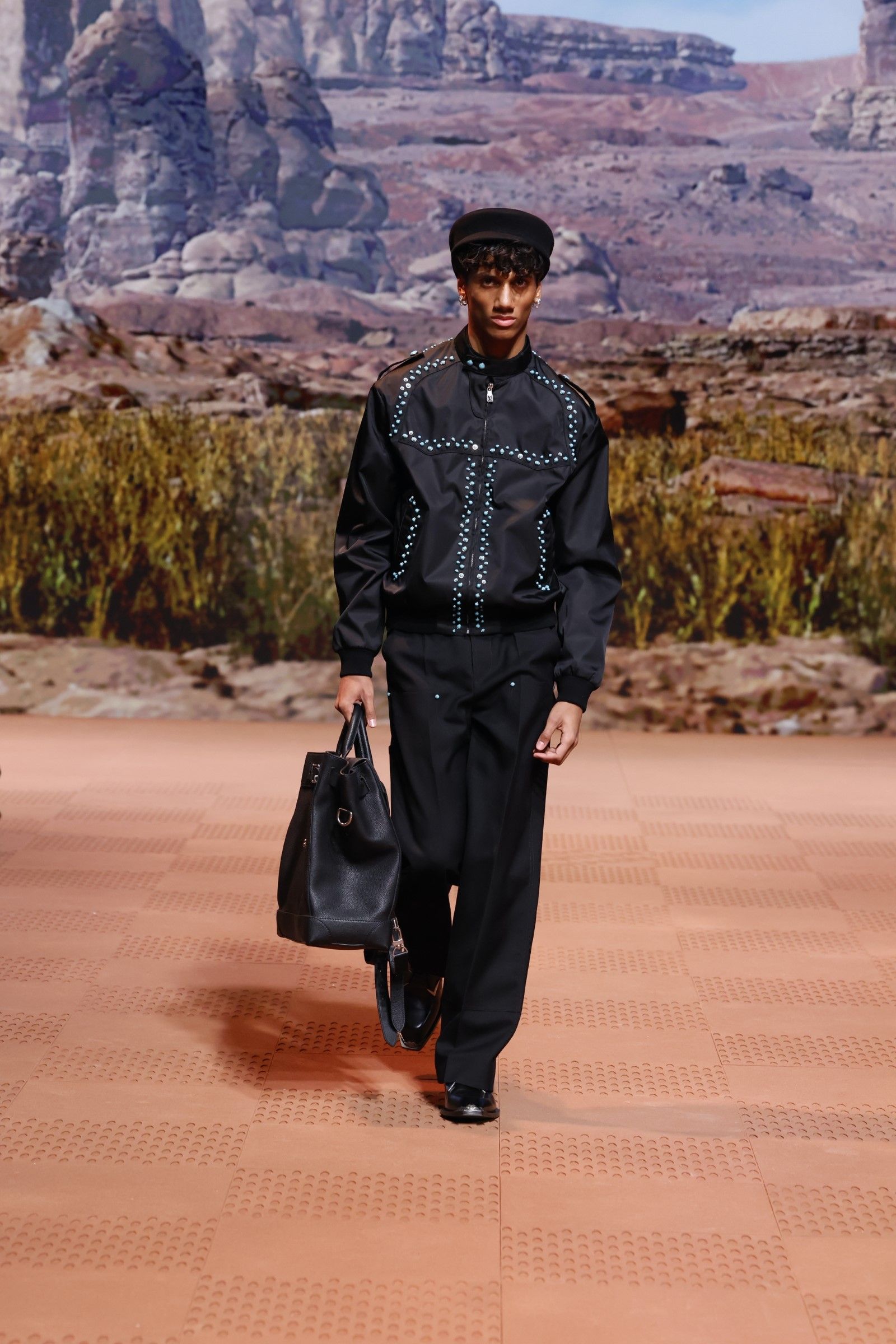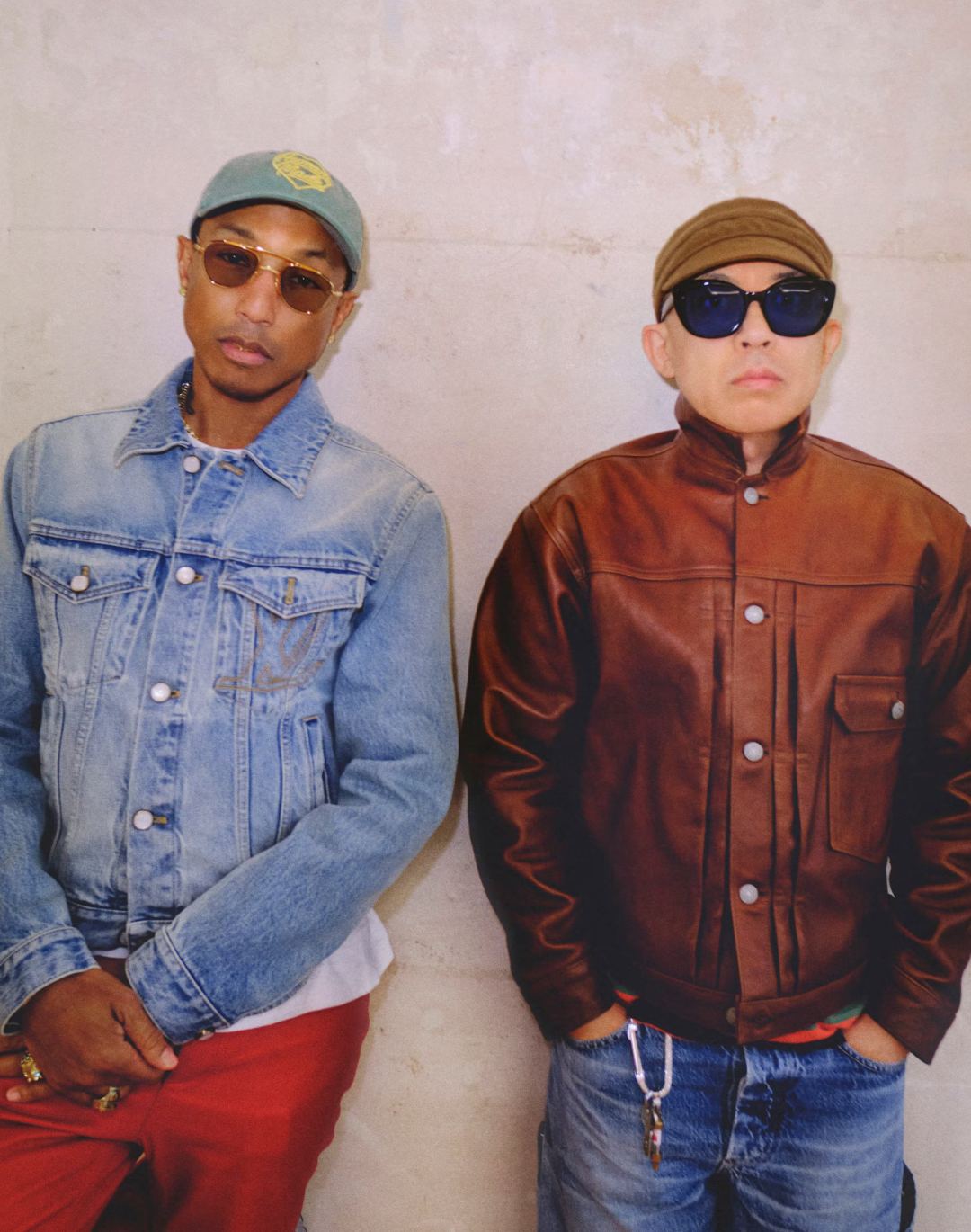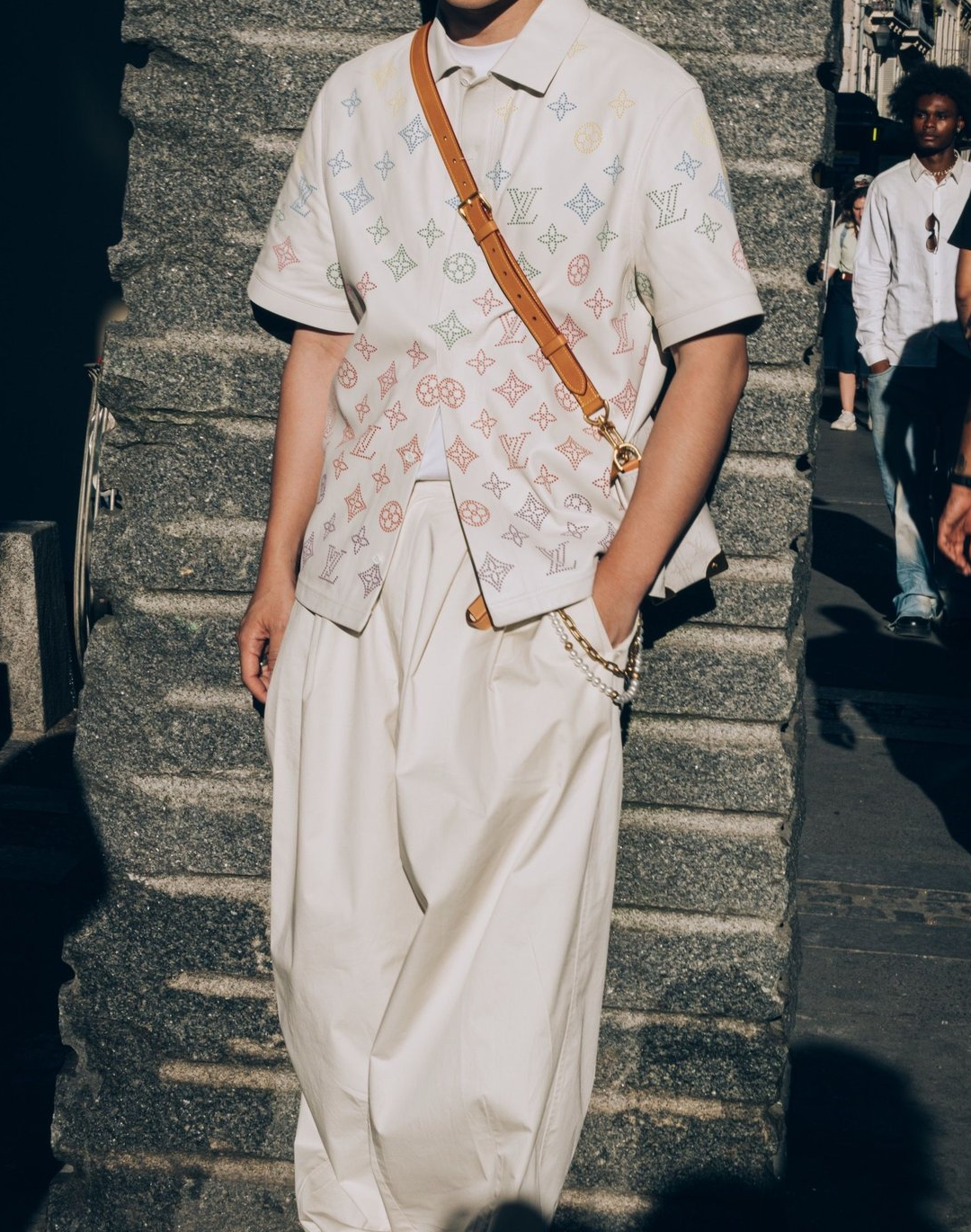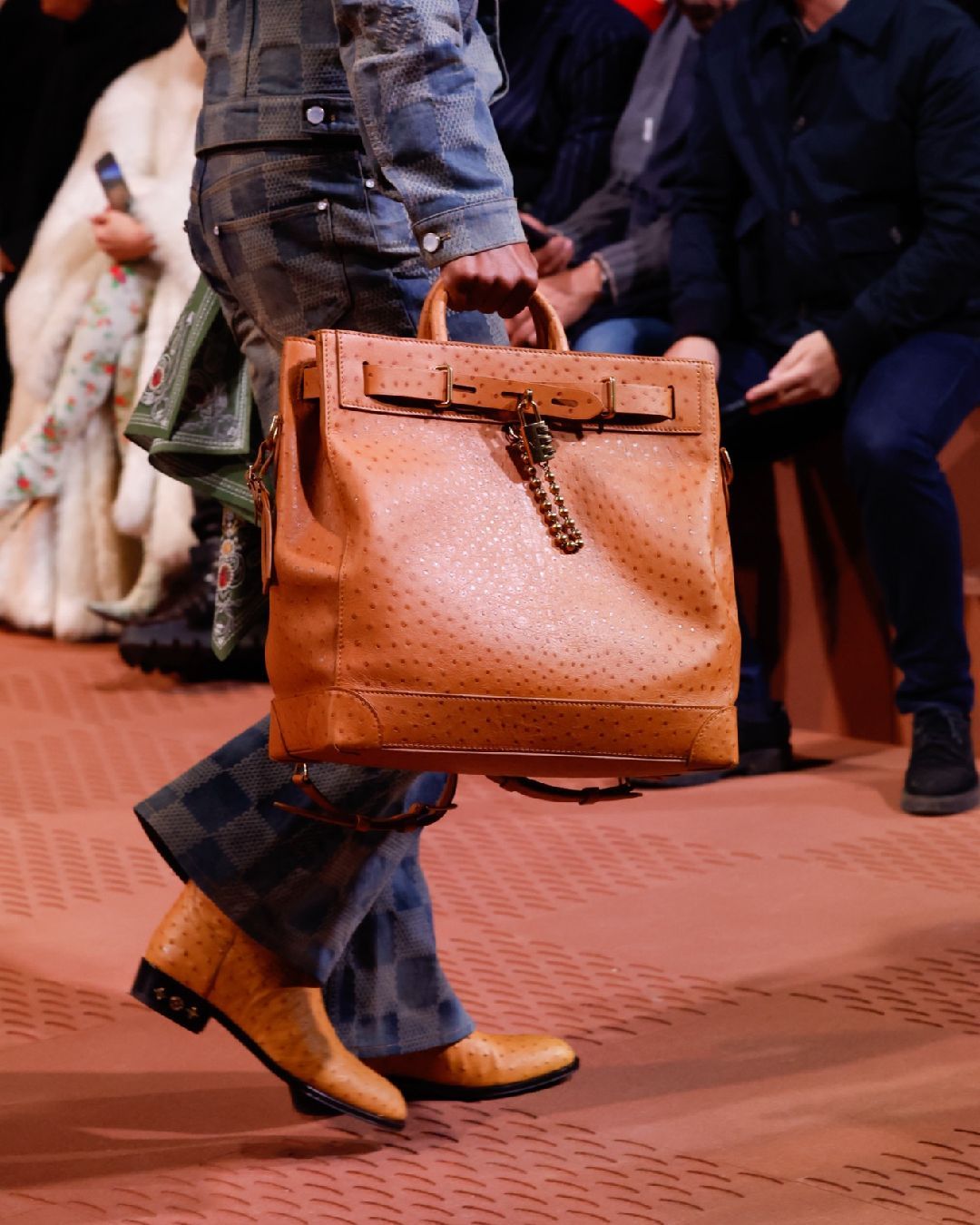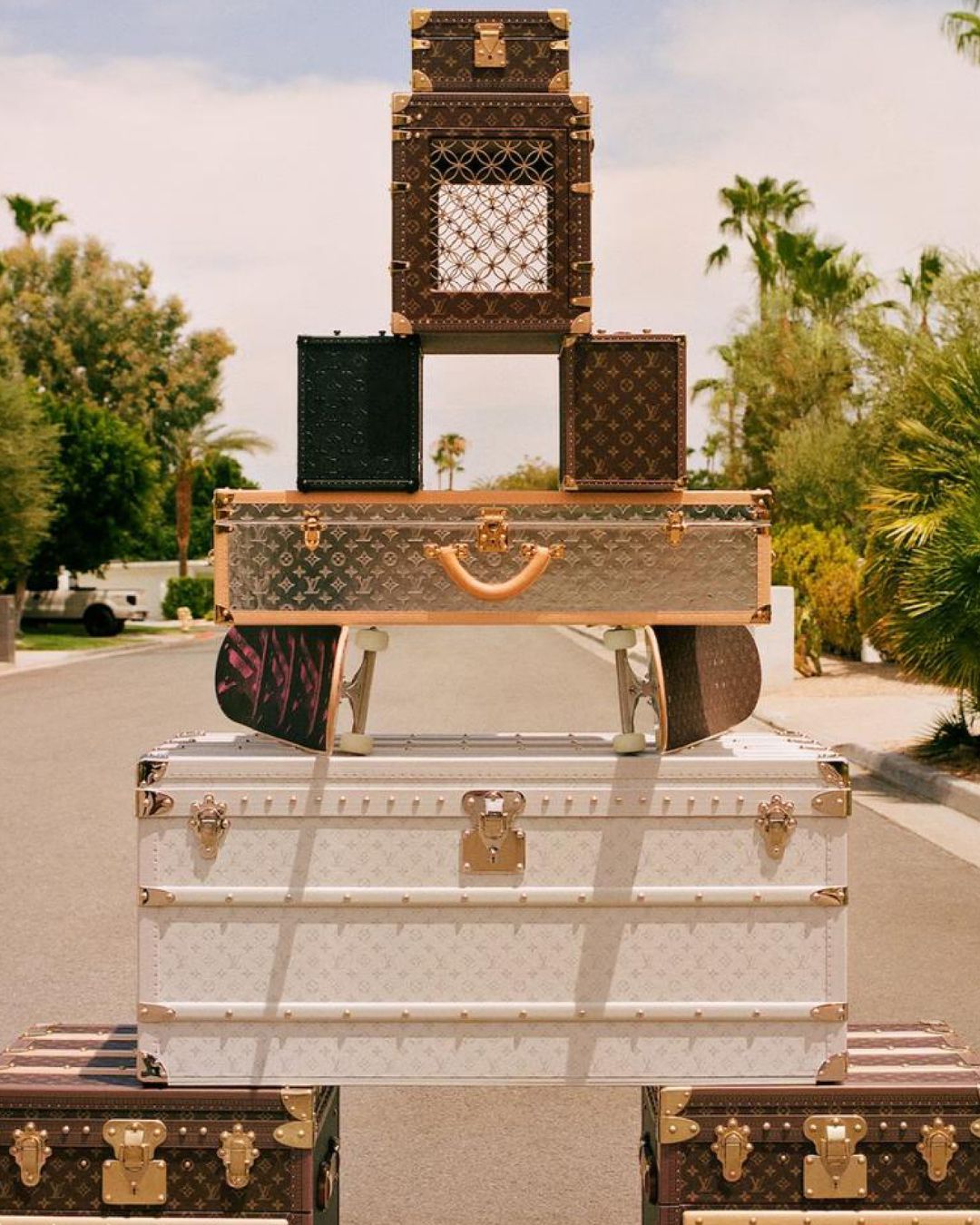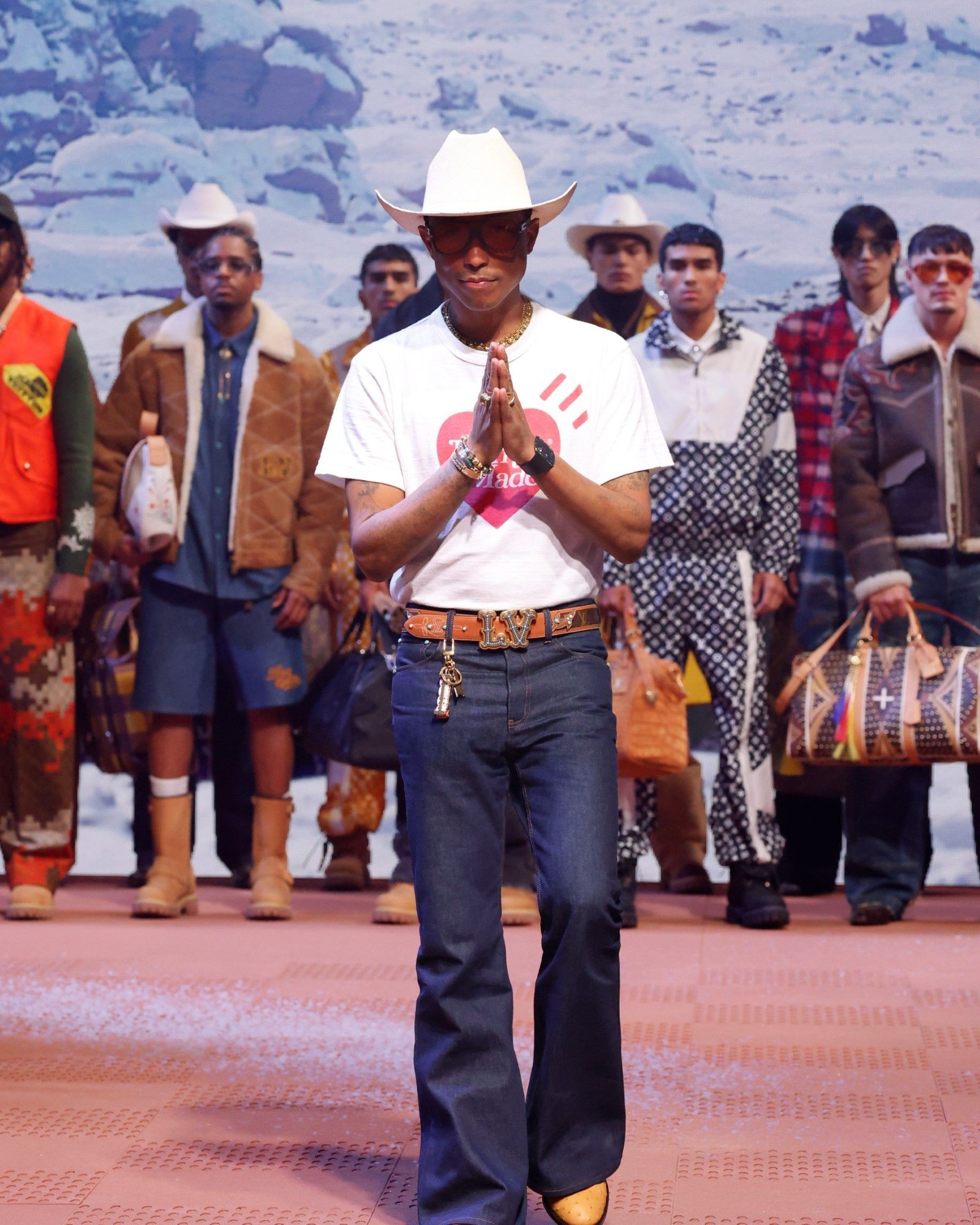
Louis Vuitton's spaghetti-western Pharrell signs a vivid, pop and easily consumable collection
Why use, in the title, the phrase "spaghetti-western" to define Pharrell's latest effort for Louis Vuitton? Because the name defines those films set in the American West but produced in Europe, just like the pieces in this collection manufactured between France and Italy, with the only difference being that those films were created to shatter the reassuring myth of the Wild West put forth by Hollywood and tell the ugly, dirty, bad side of that era. What Pharrell did instead was to try to rewrite or overwrite that myth, reappropriating an imagery that, viewed in retrospect, is quite colonialist and racist: in classic Westerns, in fact, as well as in historical reality, cowboys and Native Americans were enemies, one invading the territory of the other, initiating a very difficult process of integration that is still far from being resolved today. In order to redeem the cowboy persona and be able to take the liberty of remixing their styles without offending anyone's sensibilities, Pharrell entrusted the creation of accessories, soundtrack and set design for the show to several Native American creatives continuing that tradition of collaboration that Virgil Abloh had already started years ago. The choice made the collection a dense and vital blockbuster, rich in detail but also easily edible for an audience to dazzle as much with the magnificence and luxury of the most minute details (the turquoise details created by Dakota and Lakota artisans are particularly beautiful) as with the relative accessibility of the silhouettes they found in the workwear and vibrant rodeo tailoring.
The American imaginary according to Pharrell
The style of the collection demonstrates, beyond the high production values of Vuitton's team (which spared no expense at all in embroidery, floral motifs, jacquard work, embossed embellished leathers, materials, and so on) how capable Pharrell is, creatively speaking, of choosing and following a theme - and of doing so with an artistic candor and naiveté but also an imaginative generosity that is simply not seen today. And this is because Louis Vuitton's fashion must be, in addition to being aesthetically beautiful and opulent, as pop as the spectacle with which it is presented: an approach that has less to do with superficiality than with lightheartedness. And this is also why there is little point in placing Pharrell's collection under the analytical lens of social-historical analysis - for that there are Scorsese's films and brands (more or less hypocritically) engaged in correcting or denouncing the many wrongs of history. The point here is the exuberance and almost baroque overabundance of colors, embellishments, turquoise studs, pomp of wools and leathers, lushly branded details, jewelry, and even the return of a historic eyewear called, literally, Millionaire. Just as the spaghetti-western focused more on the aesthetic rendering and the tactile and visual sensuality of the narrative and less on the ethical construction of a national mythology, this collection also wants to elaborate an aesthetic, to execute a theme without sinking into reasoning and problematization - a kind of liveliness that is easily lost today among intellectualistic concepts and diktats of commercial teams that, at Louis Vuitton, exist in fruitful harmony with creative ones.
In this sense, the execution of the collection is practically flawless - sure, the choice of the western theme, which is always a classic, brings to mind reminiscences of numerous other overseas designers who have frequented it, from Emily Bode to Rhuigi Villaseñor, via the Caten twins, Tom Ford and even the very French Hedi Slimane, who has always heavily flirted with drugstore cowboys. But as was the case with the militaristic dandies of the first show and then with the 1950s sailors of the second, there is a deep underlying coherence that is related, in some ways, to Norman Rockwell's florid, rounded star-spangled imagery in its evocation of a proba and rubicund America, almost idealized, and above all a far cry from the culturally torn country it is today. The reworking of the American aesthetic, which is after all and historically a workwear aesthetic, also accords well with the emphasis on product that prevails in fashion these years and that leads to the very widespread adoption of those timeless, classic yet elegant silhouettes now read as an alternative to traditional formality, of which brands such as Carhartt WIP, Levi's, Dickies, Woolrich and so on were the fundamental pioneers and which now finds itself elevated to luxury power across the entire fashion industry chessboard.
The collaboration with Timberland
Imagining a pacified and wholesome America, where all cultures and stylistic and social codes mix, making workwear as opulent as tailoring and tailoring as accessible as workwear, also means rethinking the cornerstones of those hip-hop wardrobe icons through the filter of Louis Vuitton's pop luxury. Here, then, is the rationale behind the collaboration with Timberland that has much discussed (and will explode sales of the classic Yellow Boot) and has seen the highly popular models elevated by nubuck constructions, monograms embossed in leather, and in some cases even gold metal eyelets and hardware with leather trim. In all models, proportions appear expanded (according to the 15 percent press release) for that classic chunky effect that is still going strong for footwear as opposed to the flat, low shoe trend that other brands have embraced. This very boot, as well as with its insistent presence, serves as an ideal link between the different themes that the show tries to hold together: on the one hand the insistence on workwear that is a commercially successful category today but still easily appreciated by all thinkable types of clientele; on the other hand the iconic status that the classic Timberland boot possesses somewhat throughout the Western world and especially in America where it is a true must-have of the traditionally understood men's wardrobe along with jeans and flannels. The collaboration promises to be a continuation of the kind of collaborations that Abloh had initiated with Nike in the past, elevating with very luxurious materials and details silhouettes of absolute popularity such as the Air Force 1. The spirit of the operation is the same, while the noise it has generated has overshadowed the fact that not a single sneaker was featured in the brand's entire collection-which gives us a measure of how the wind is changing regarding the footwear trend.
The trends that the show will feed into
One does not live by cowboys alone. If the show's somewhat sharp tailoring pressed the accelerator on contemporary country imagery, which never lacks a touch of camp nostalgia that we might now even derubricate as "swagger," the show was punctuated by moments of continuity with those silhouettes more alien to classic Texas rodeo. Specifically, it is interesting to note the continuation of the collarless jacket trend, which curiously bring classic workwear constructions closer to the very French designs of the women's tweed jacket. Same can be said for the abundance of crewneck cardigans-a type of knitwear that everyone will be talking about in two months and that we have been seeing for numerous seasons on the Prada runways and have also seen at Gucci and Celine, just to name two examples. When the trend explodes into the sunlight (because it will) Pharrell will be considered one of its most important proponents. We can also see Pharrell's insistence on bootcut pants, wide and flared, creating a longer, tapered shape in the pant leg, which coexists with classic double-knees, in open contrast to the return of the slim-fit pant that peeped instead in Milan.
Another macro-trend traceable in the show are the return of men's furs, featured here in several iterations. Why do we say this is important? Because one of the looks, the one that not coincidentally featured the longest and most opulent fur coat in the entire collection, was worn by Will Lemay, iconic Y2K supermodel whose most absolutely memorable look was precisely a fur coat worn with nothing underneath and seen in Sean John's FW01 collection, aka Sean Combs' brand, aka P. Diddy, who is another music mogul presented in fashion, twenty years ahead of Pharrell. A really fine quote that must have been placed there not only as a viral throwback but also to bring attention back to the importance that men's furs have had in hip-hop iconography but also to the absolute popularity they have had this season and probably will have next.










































